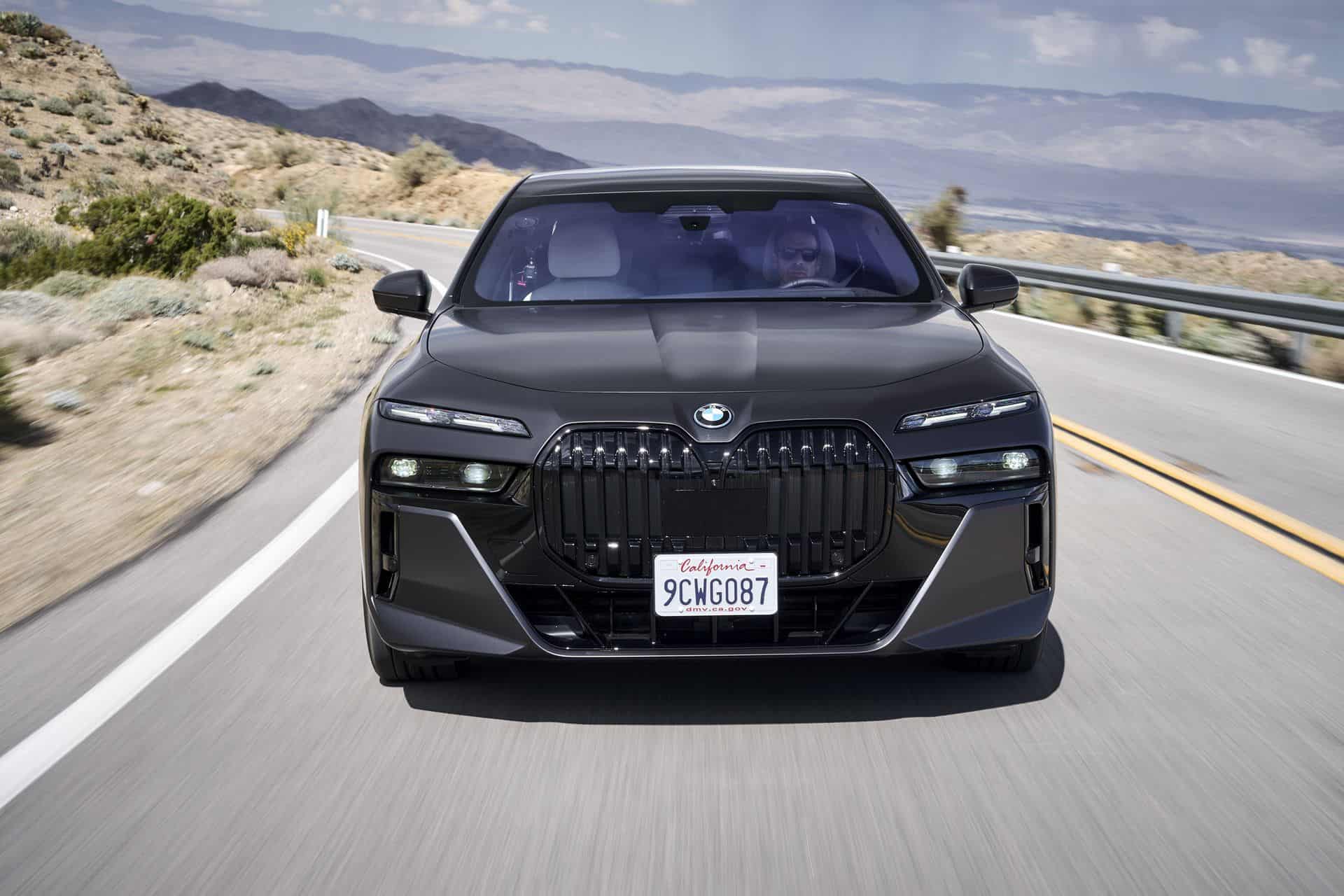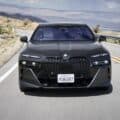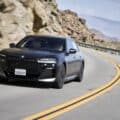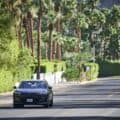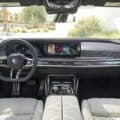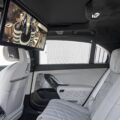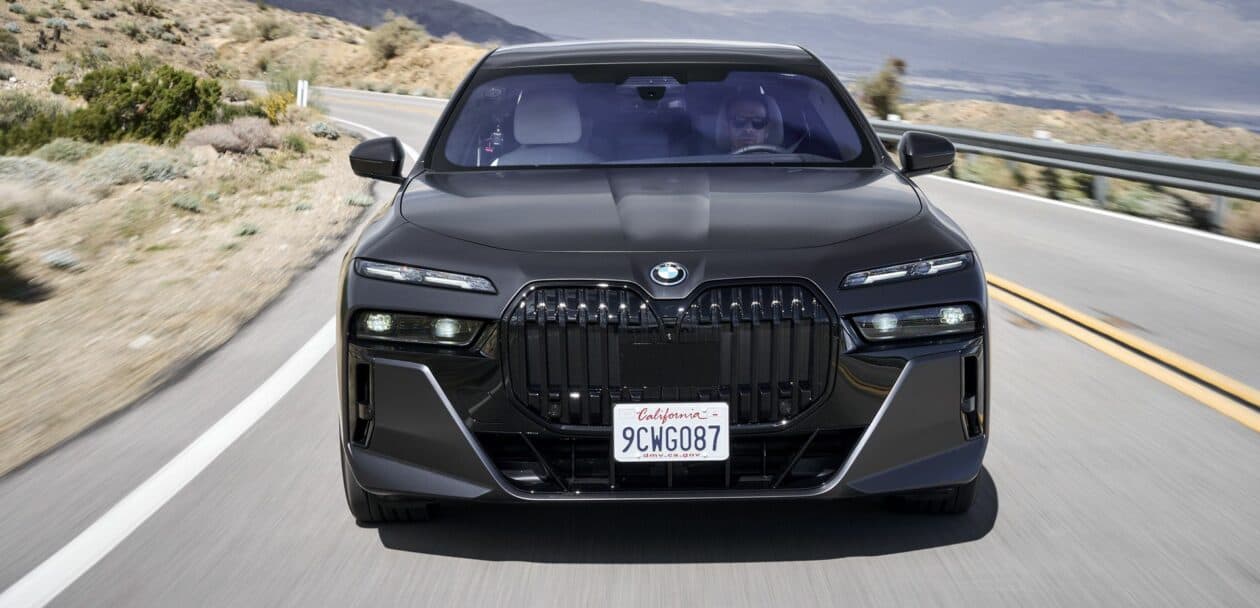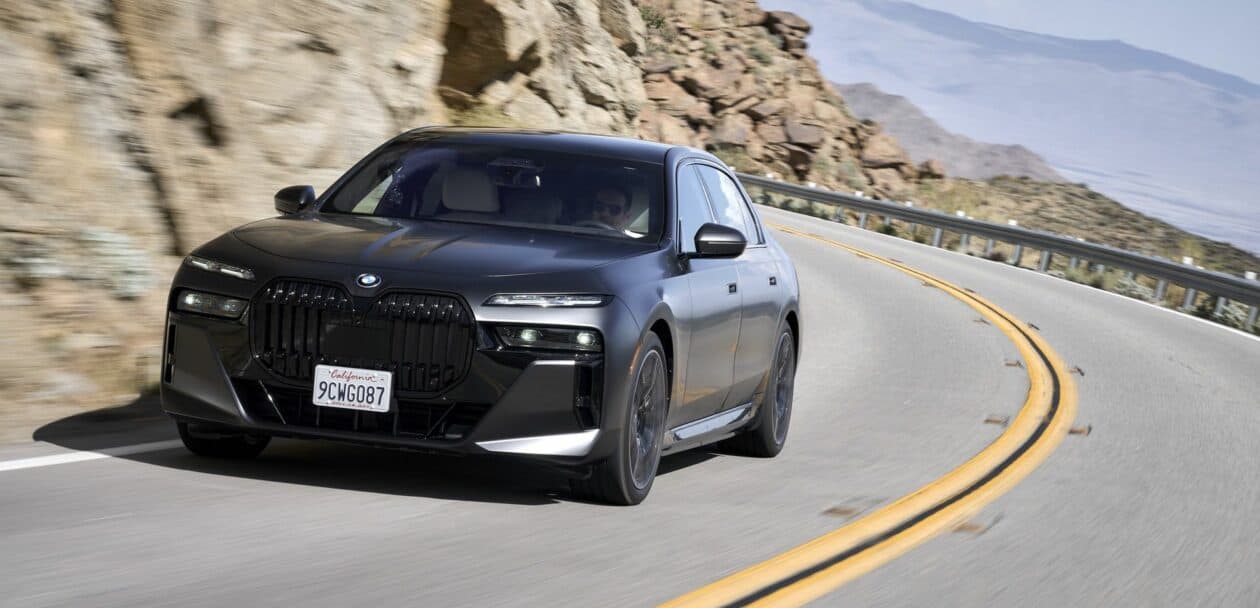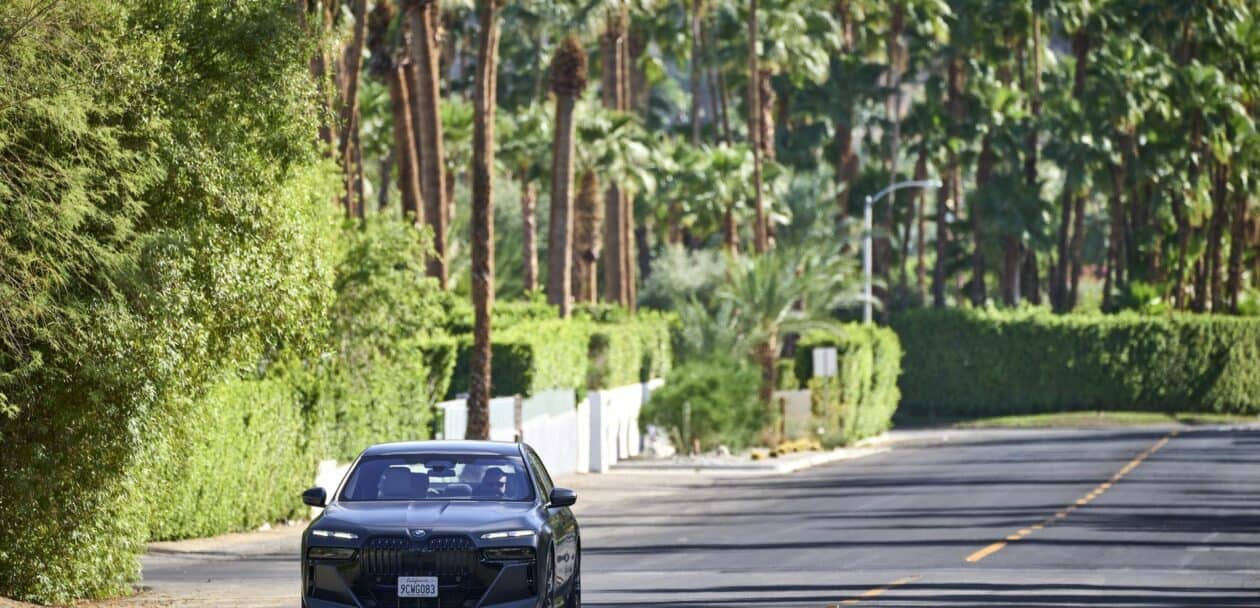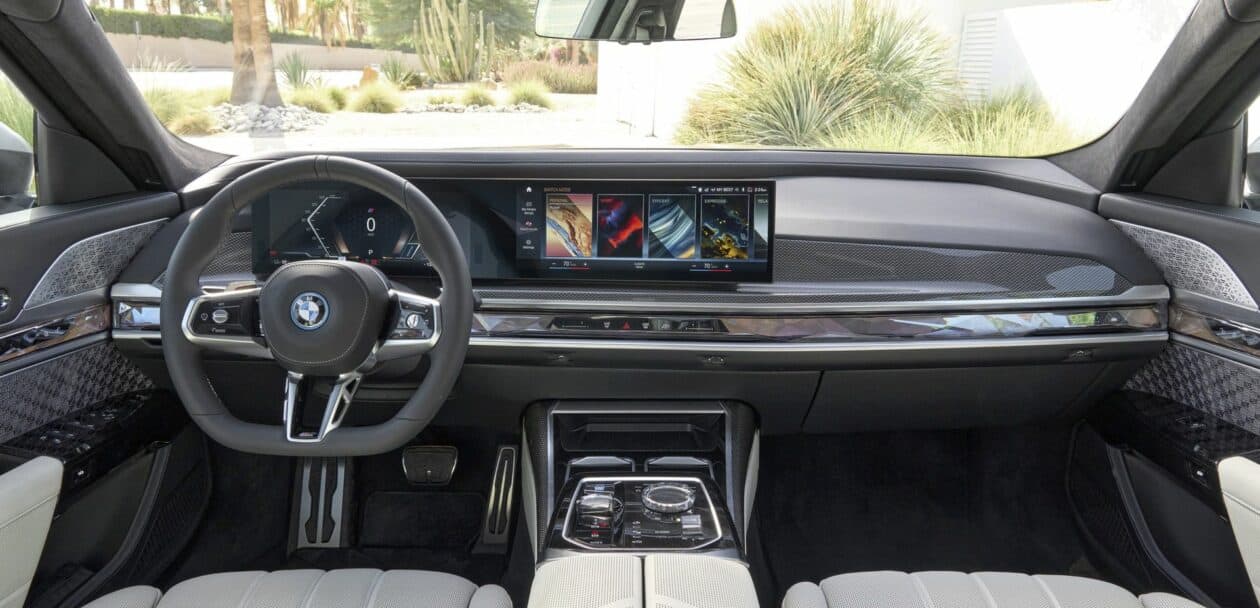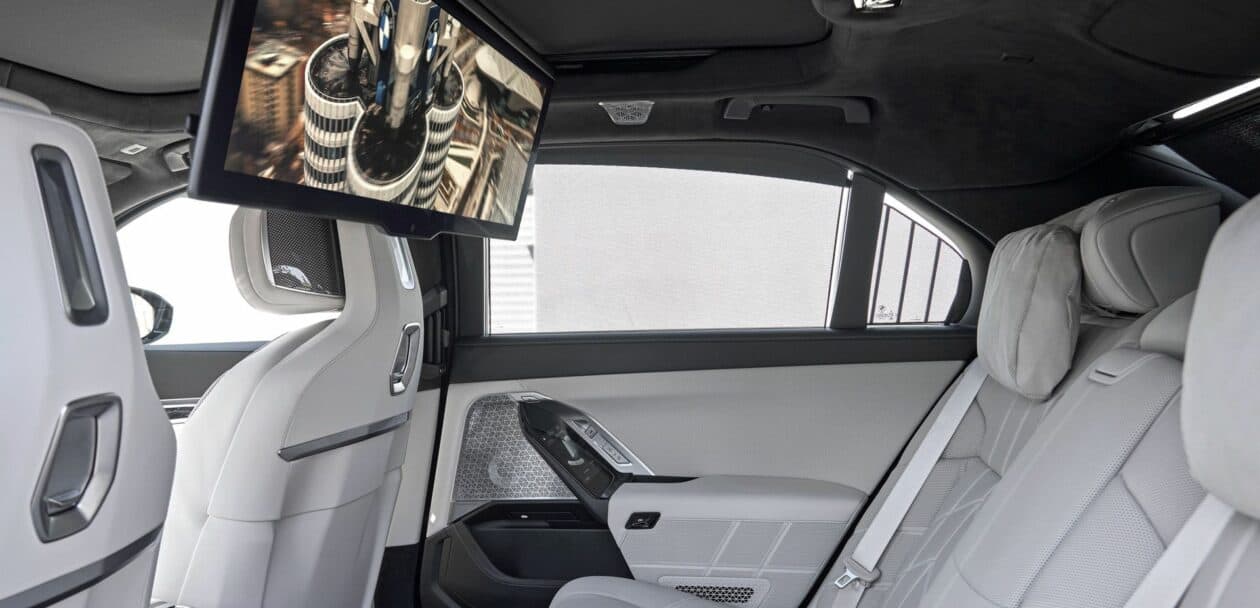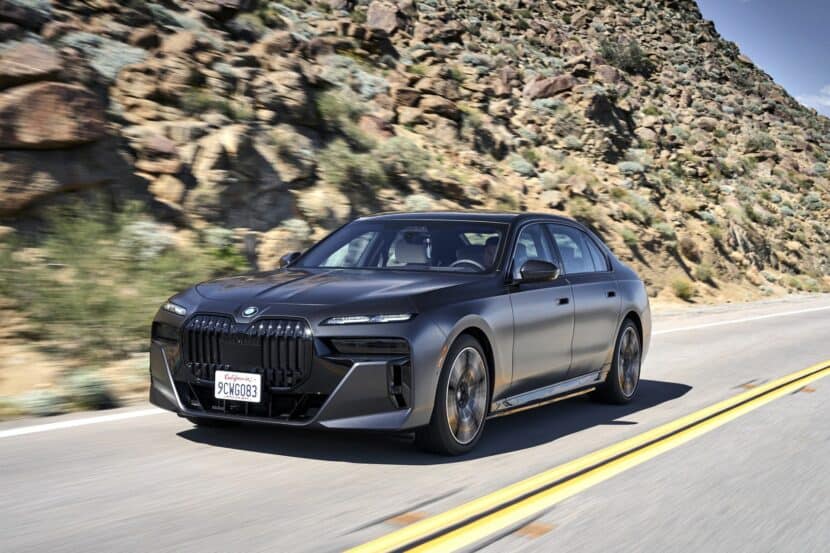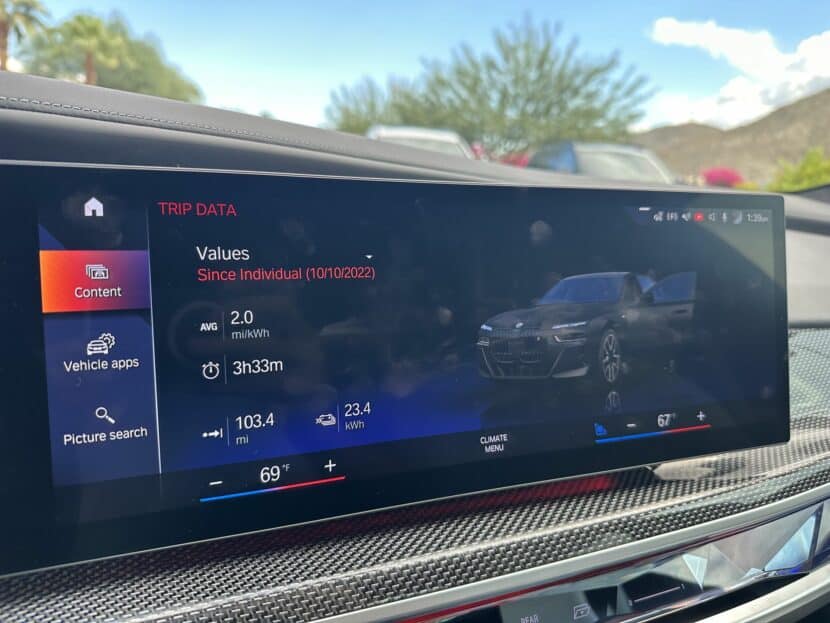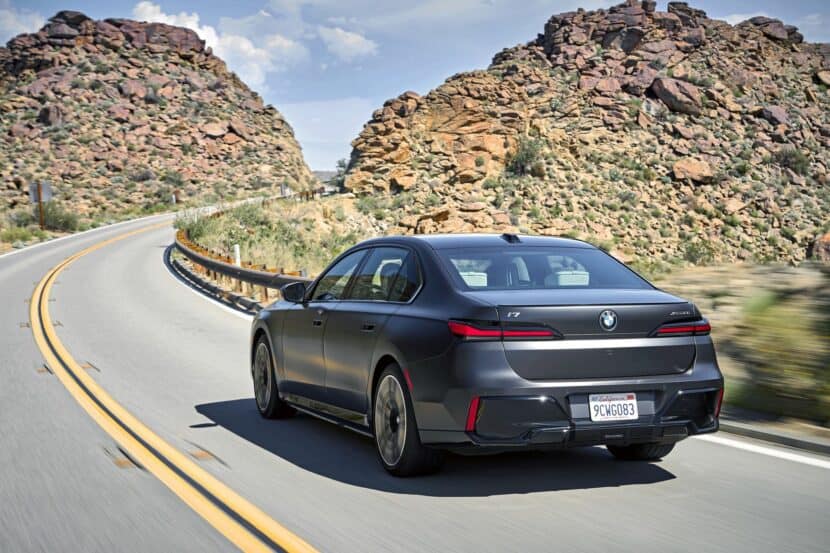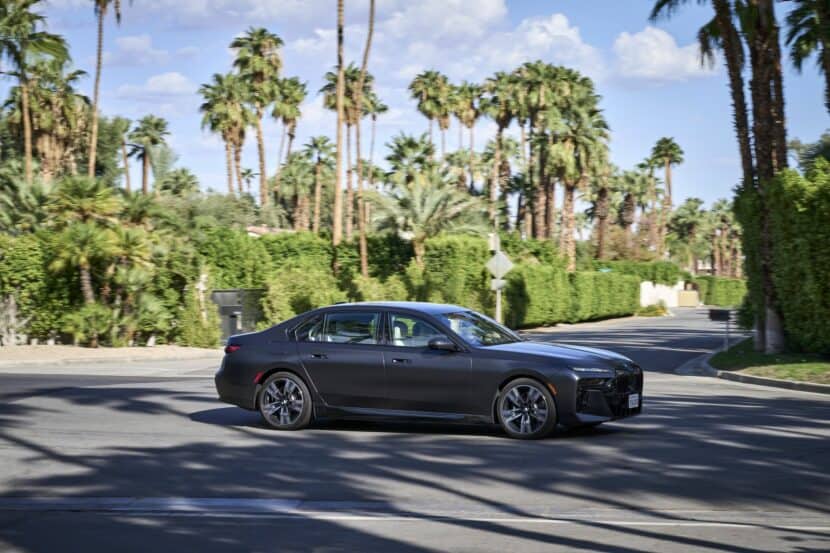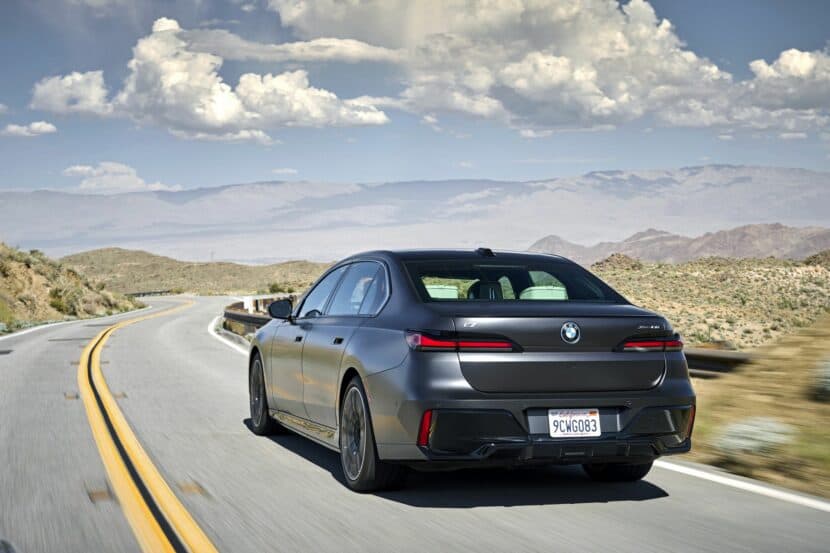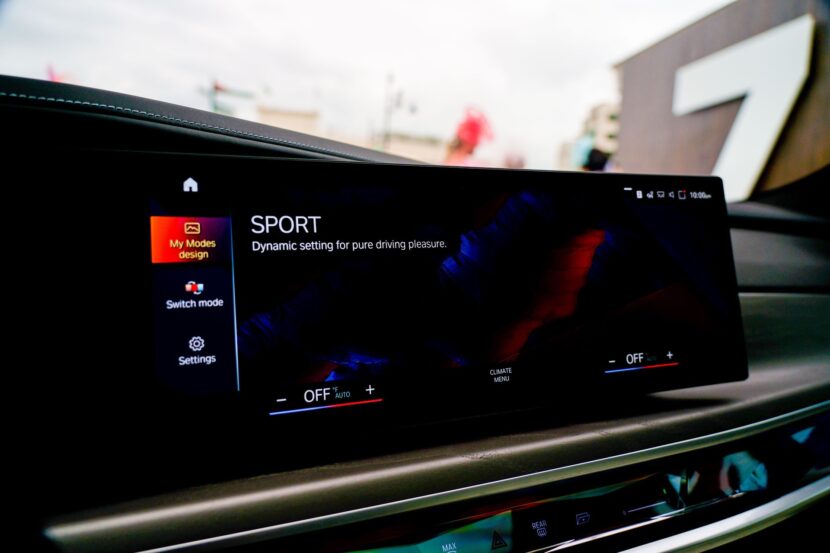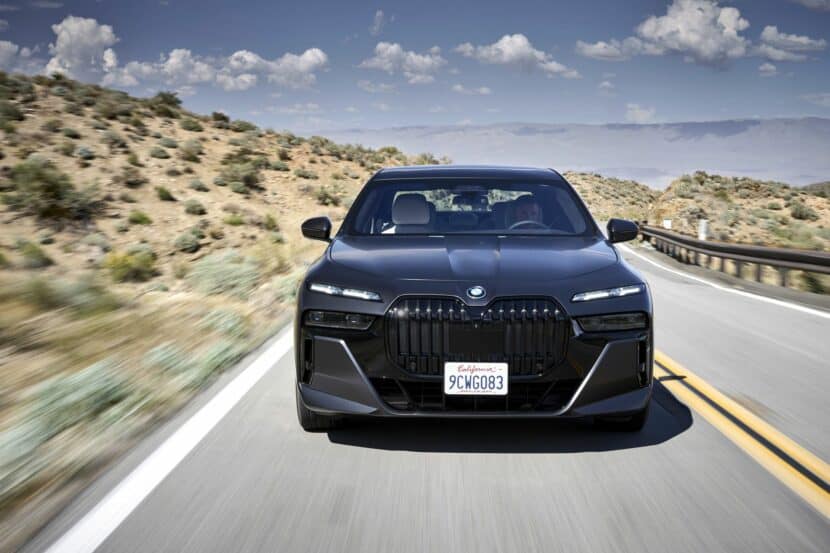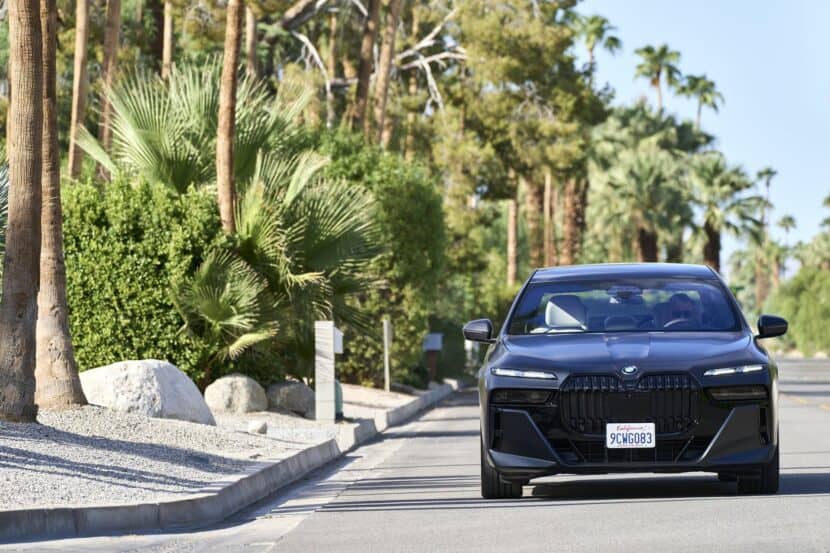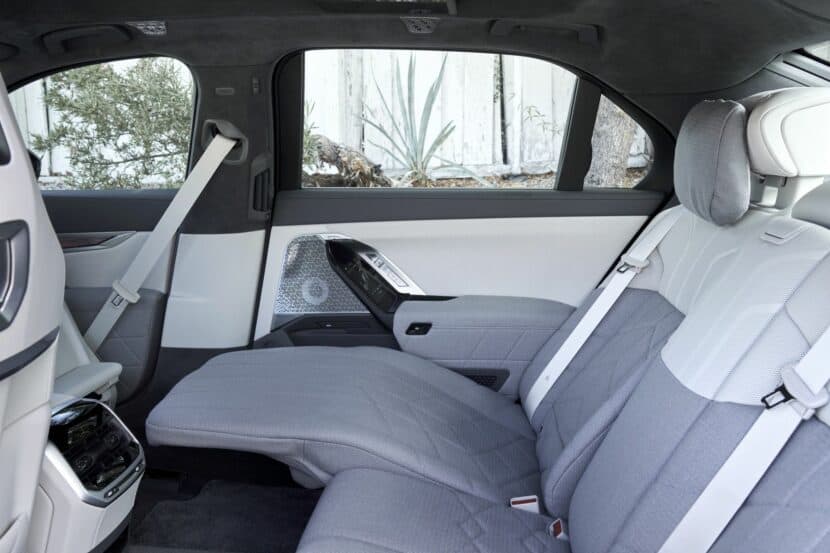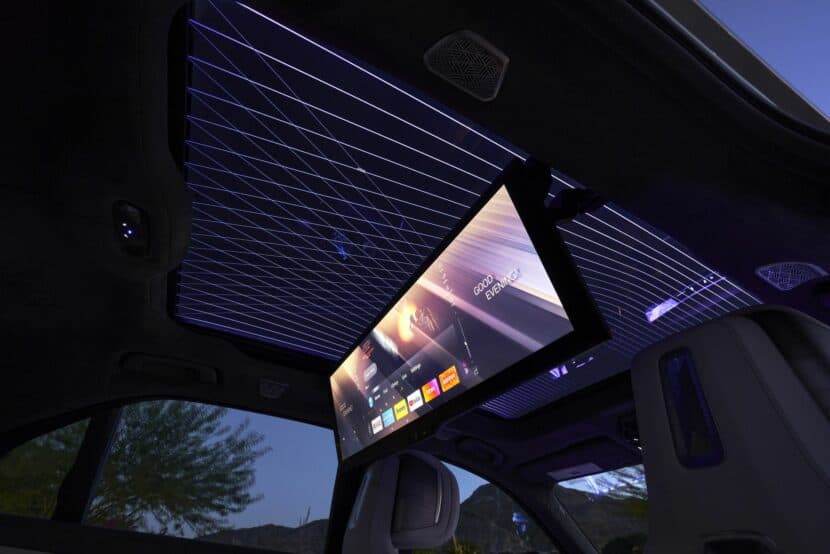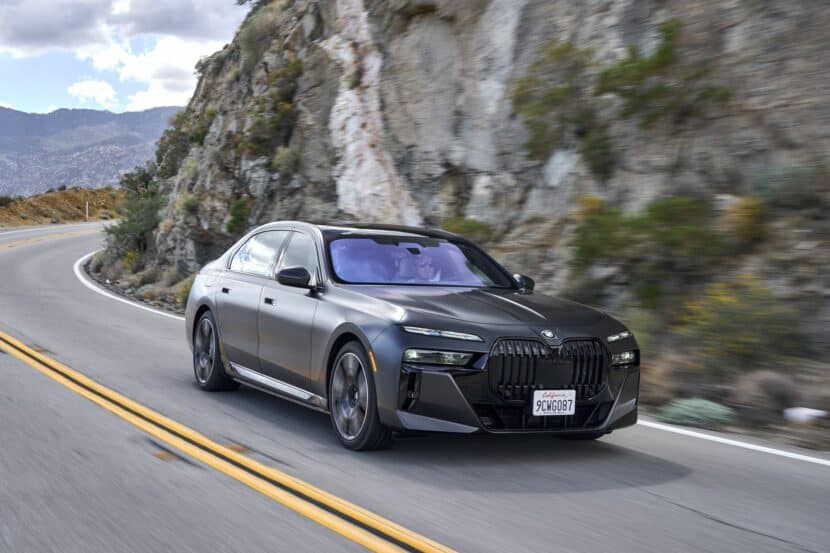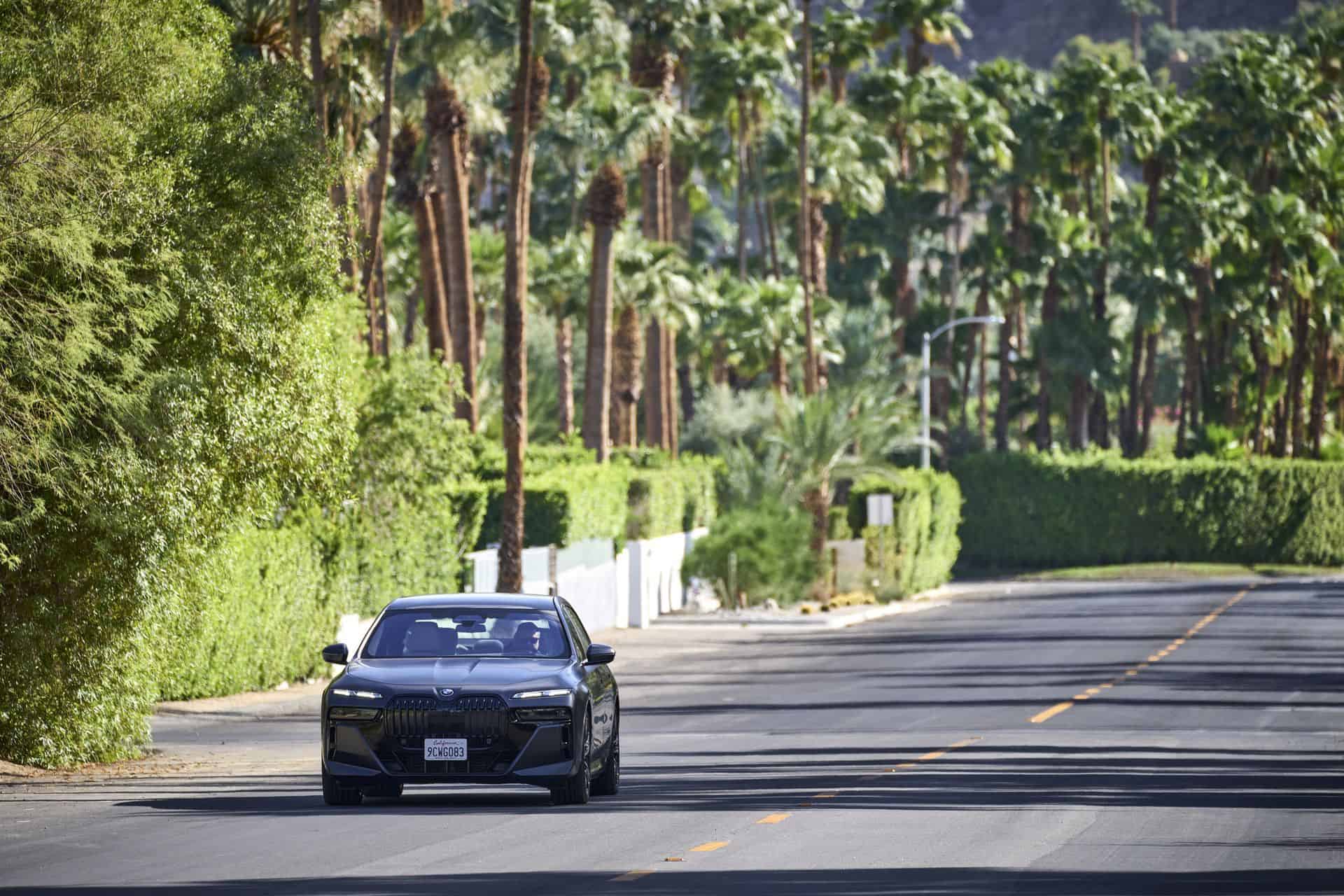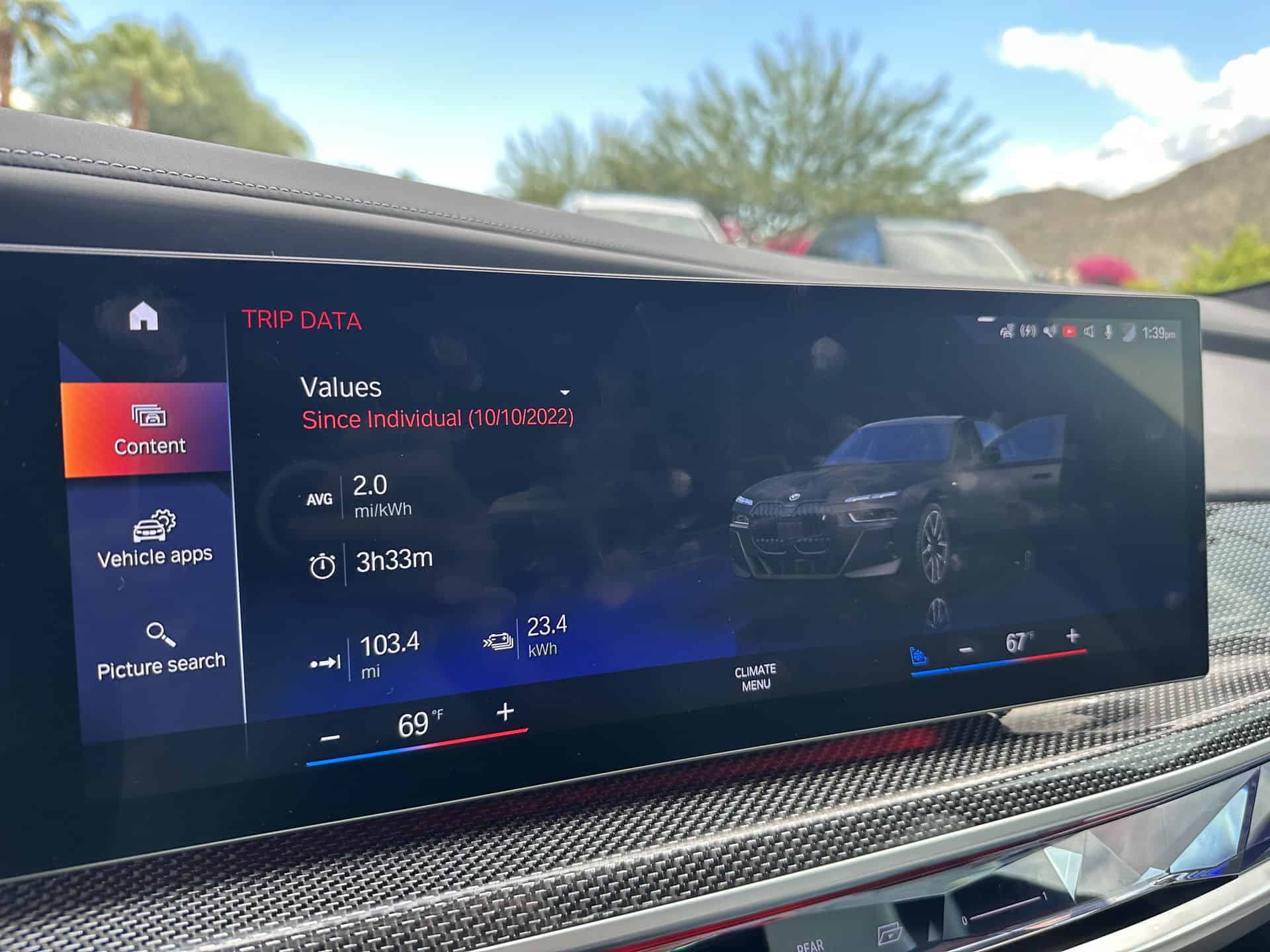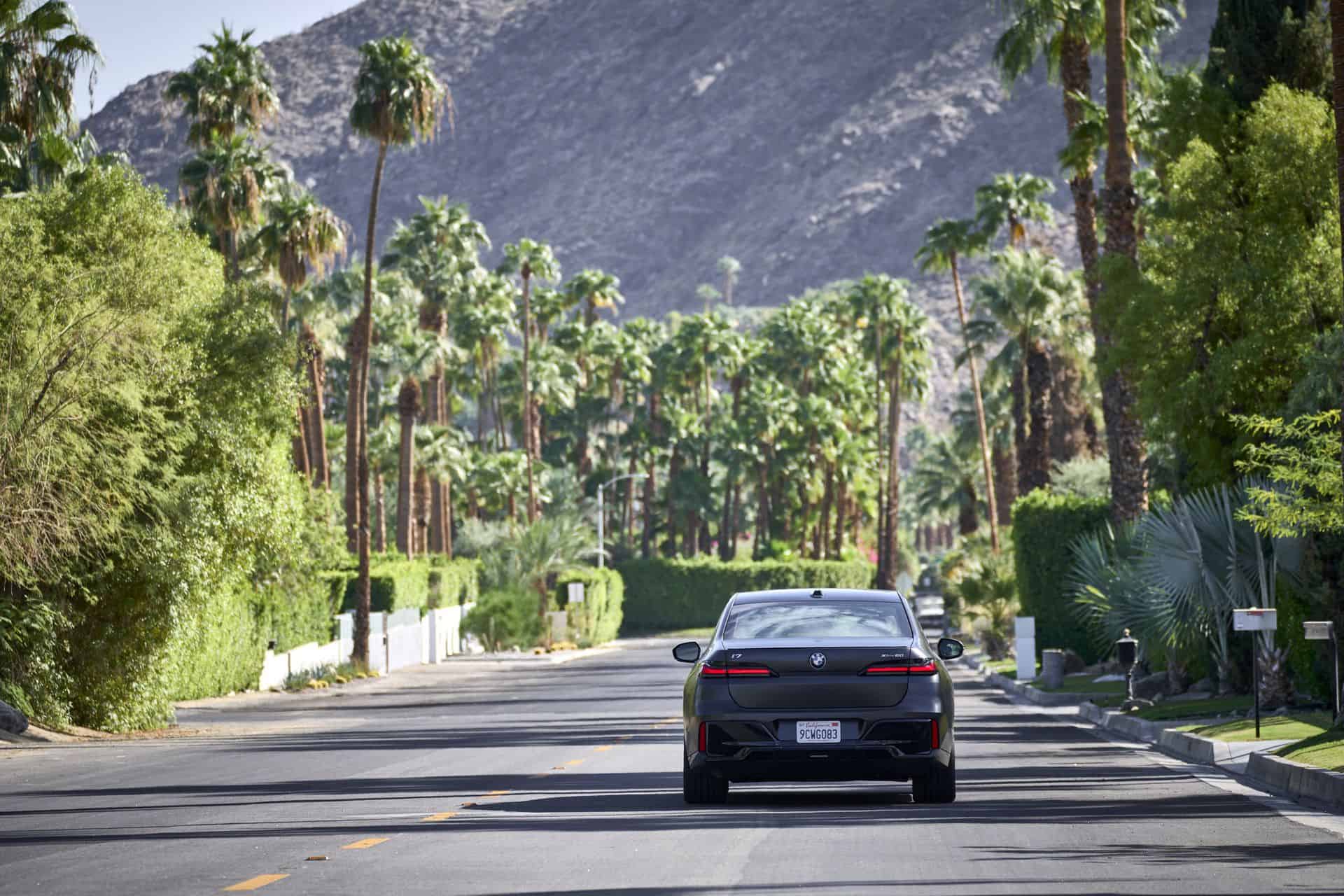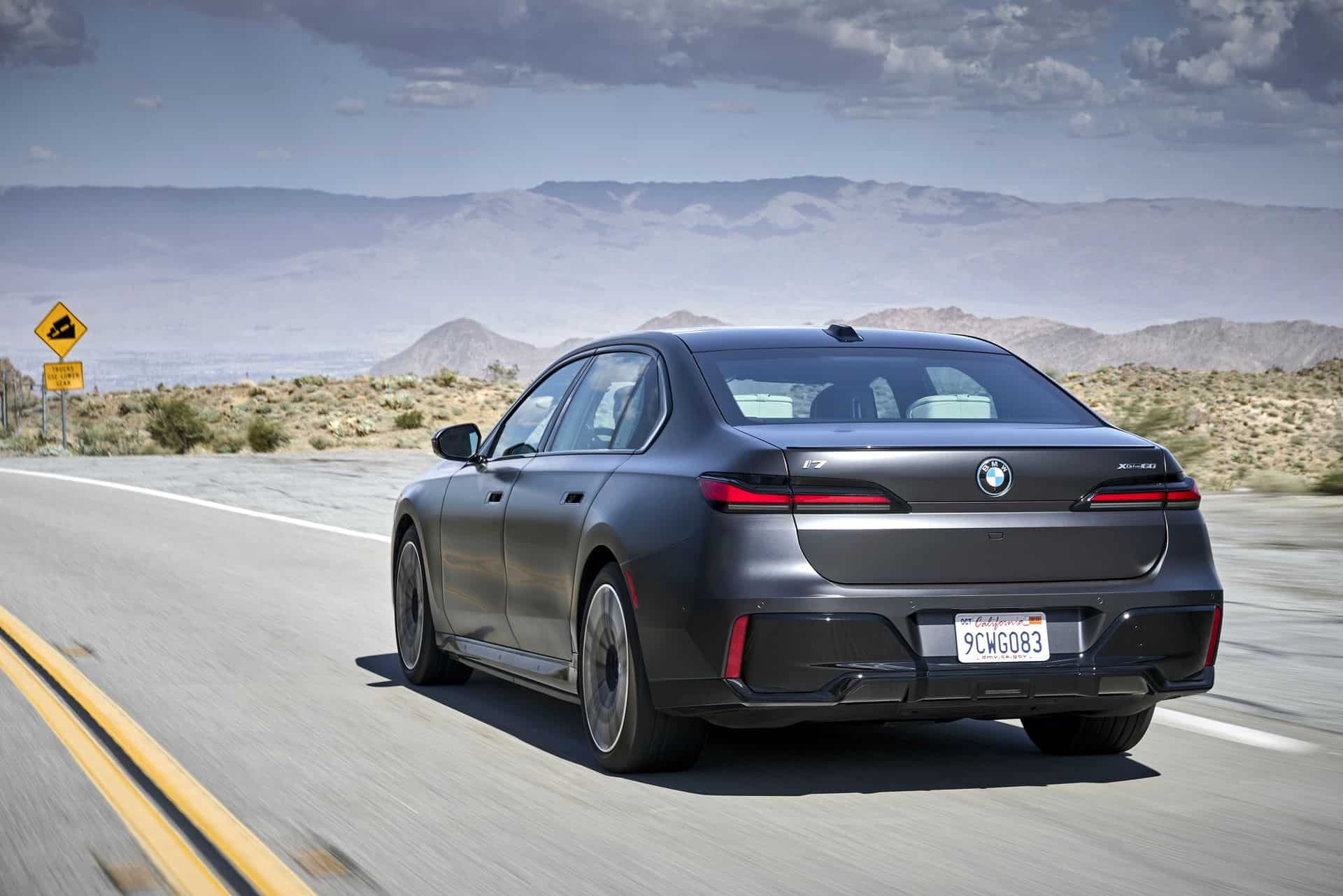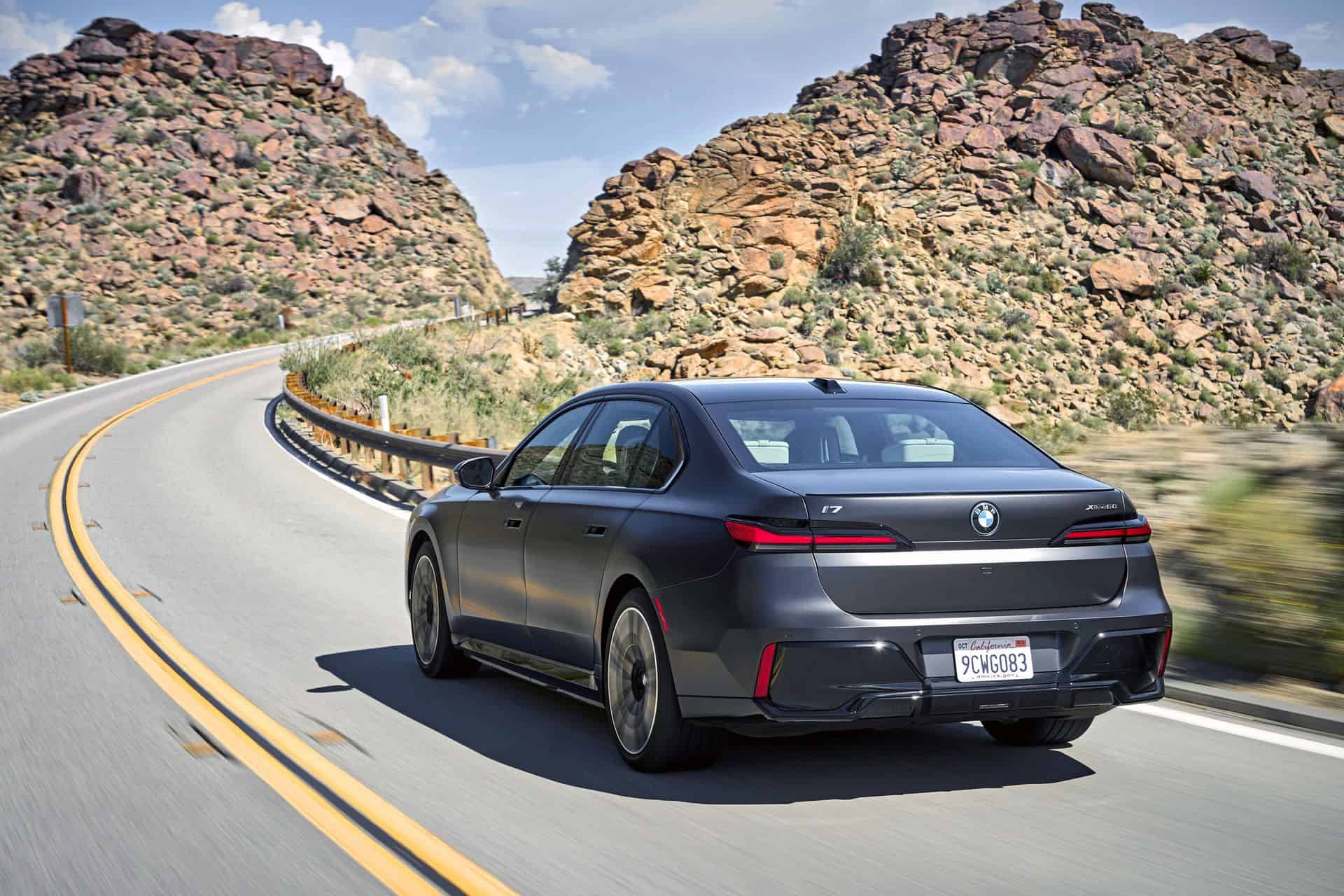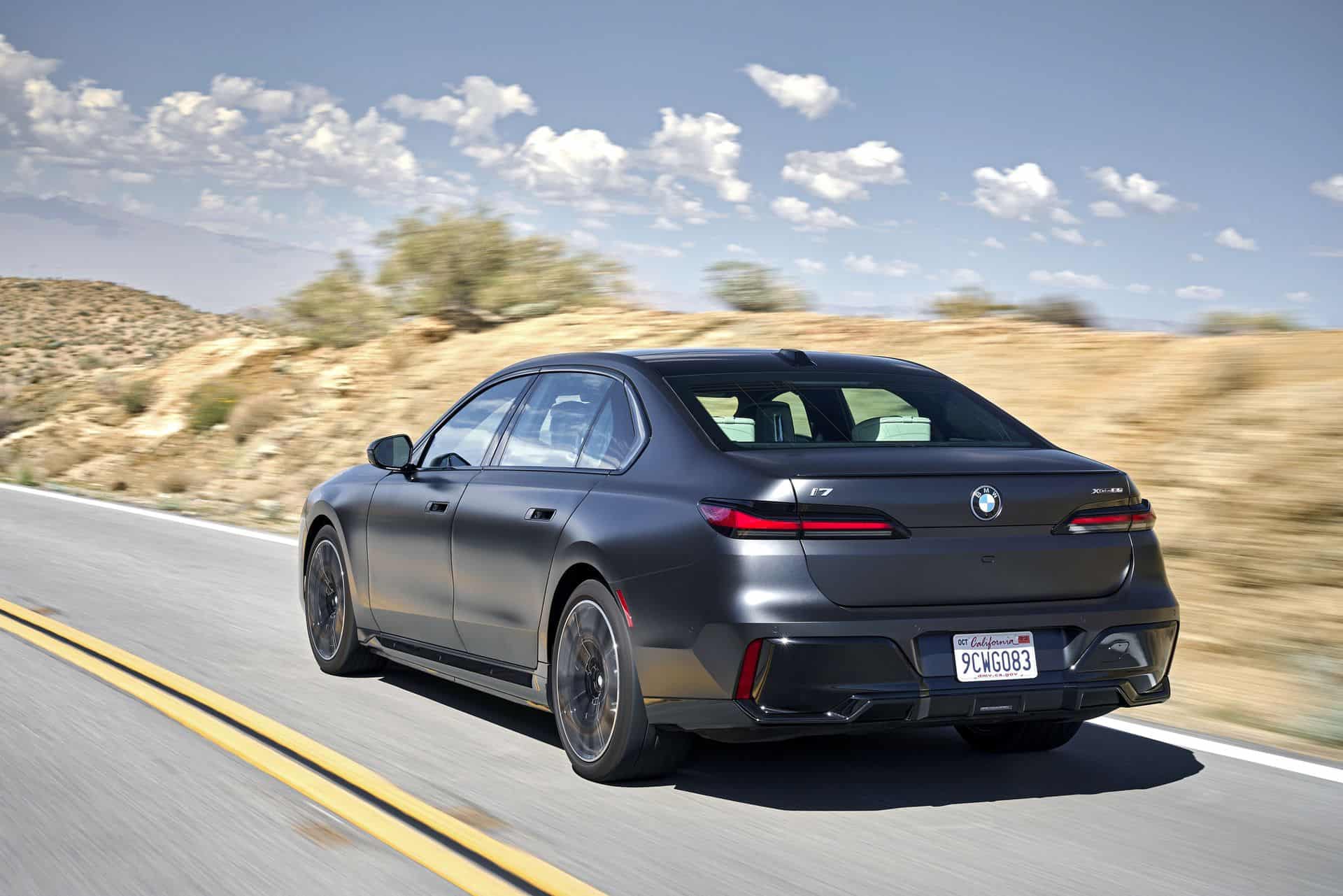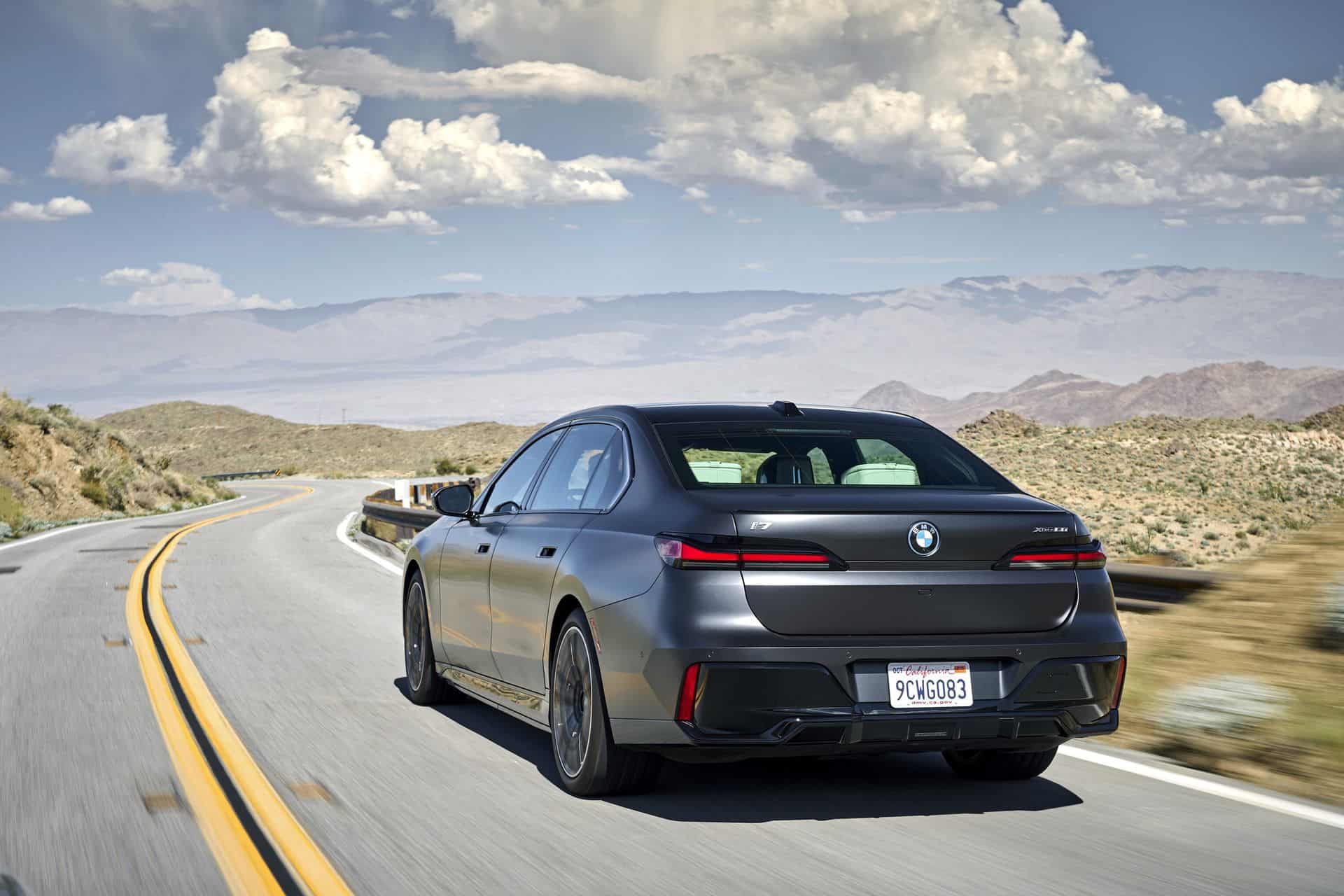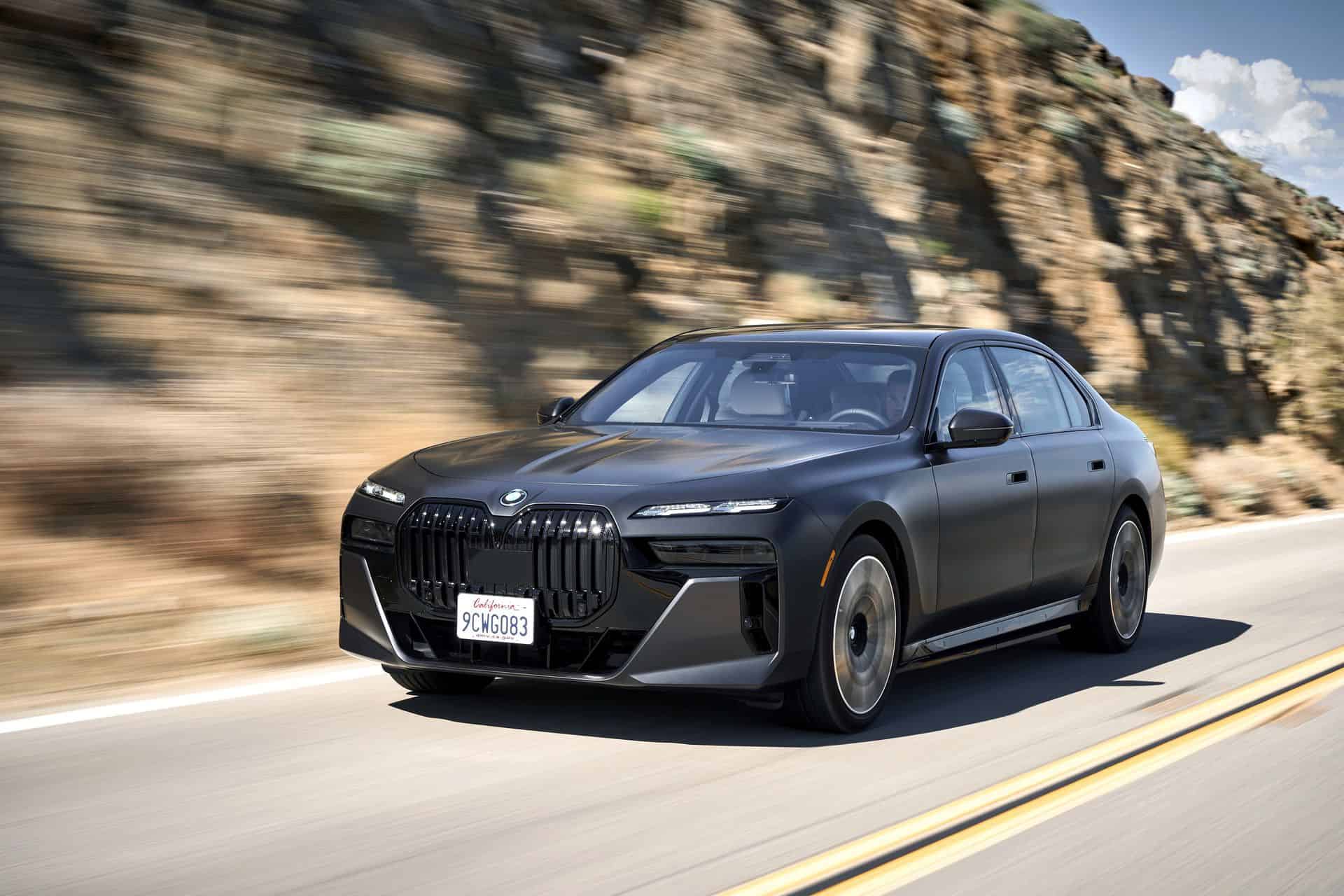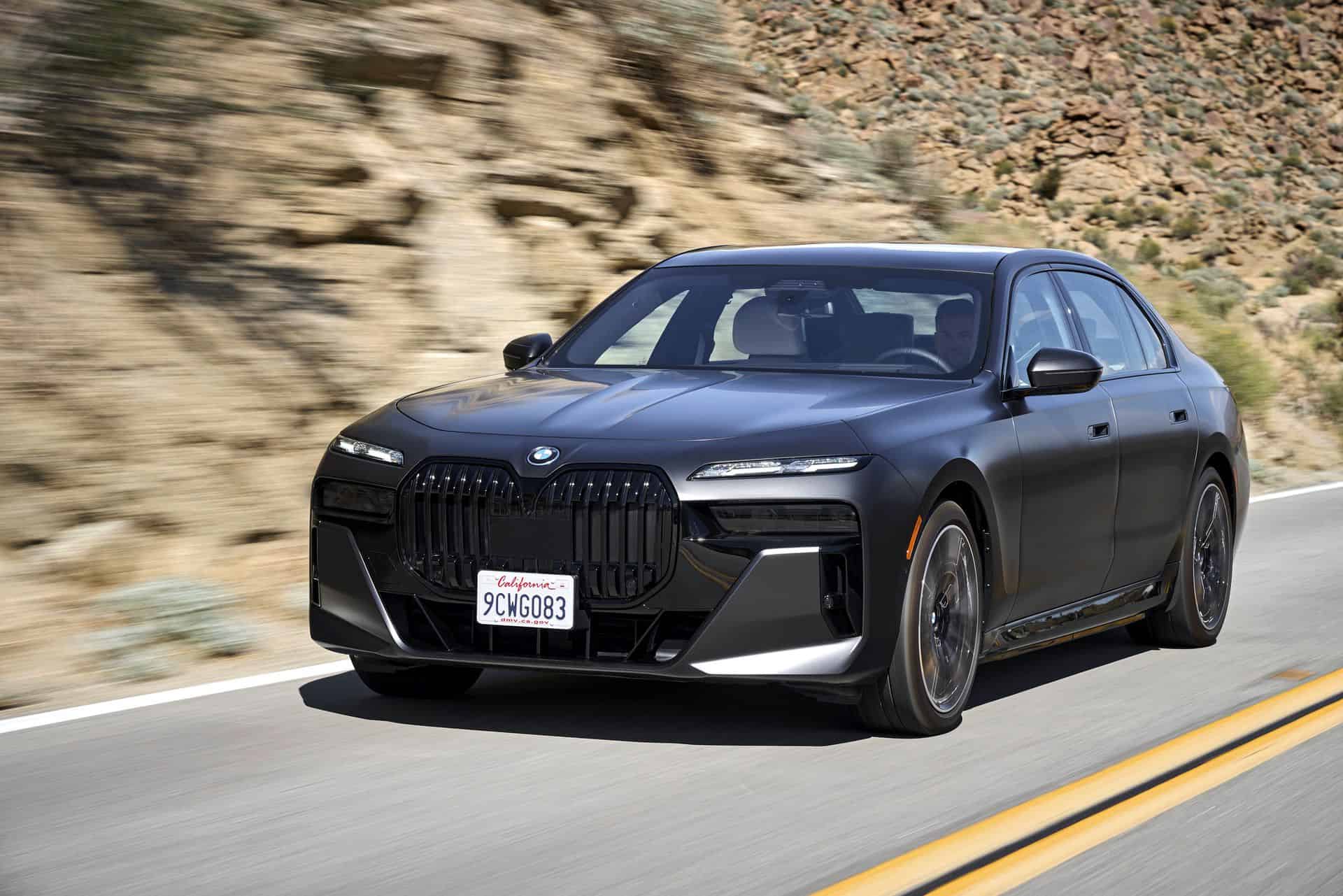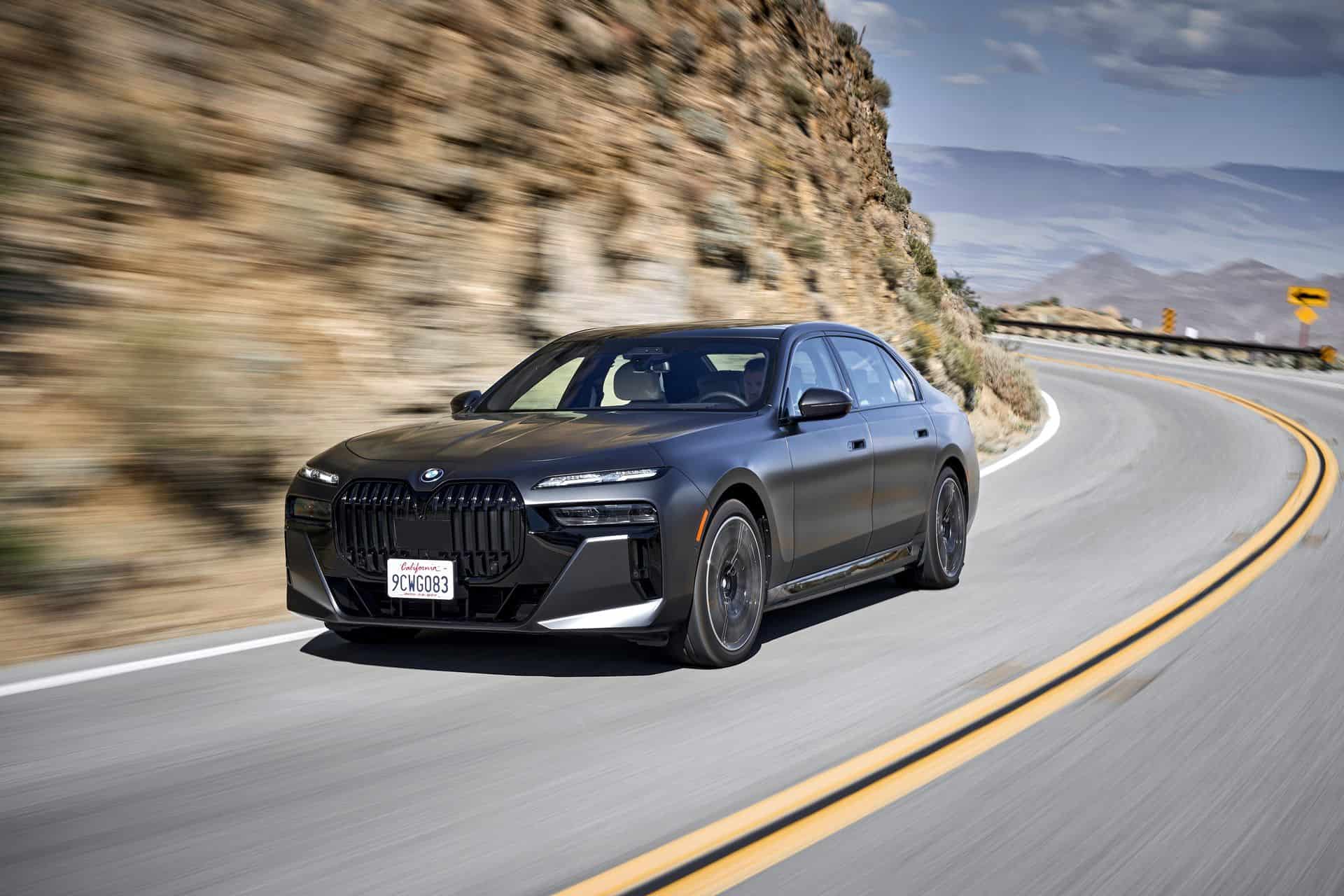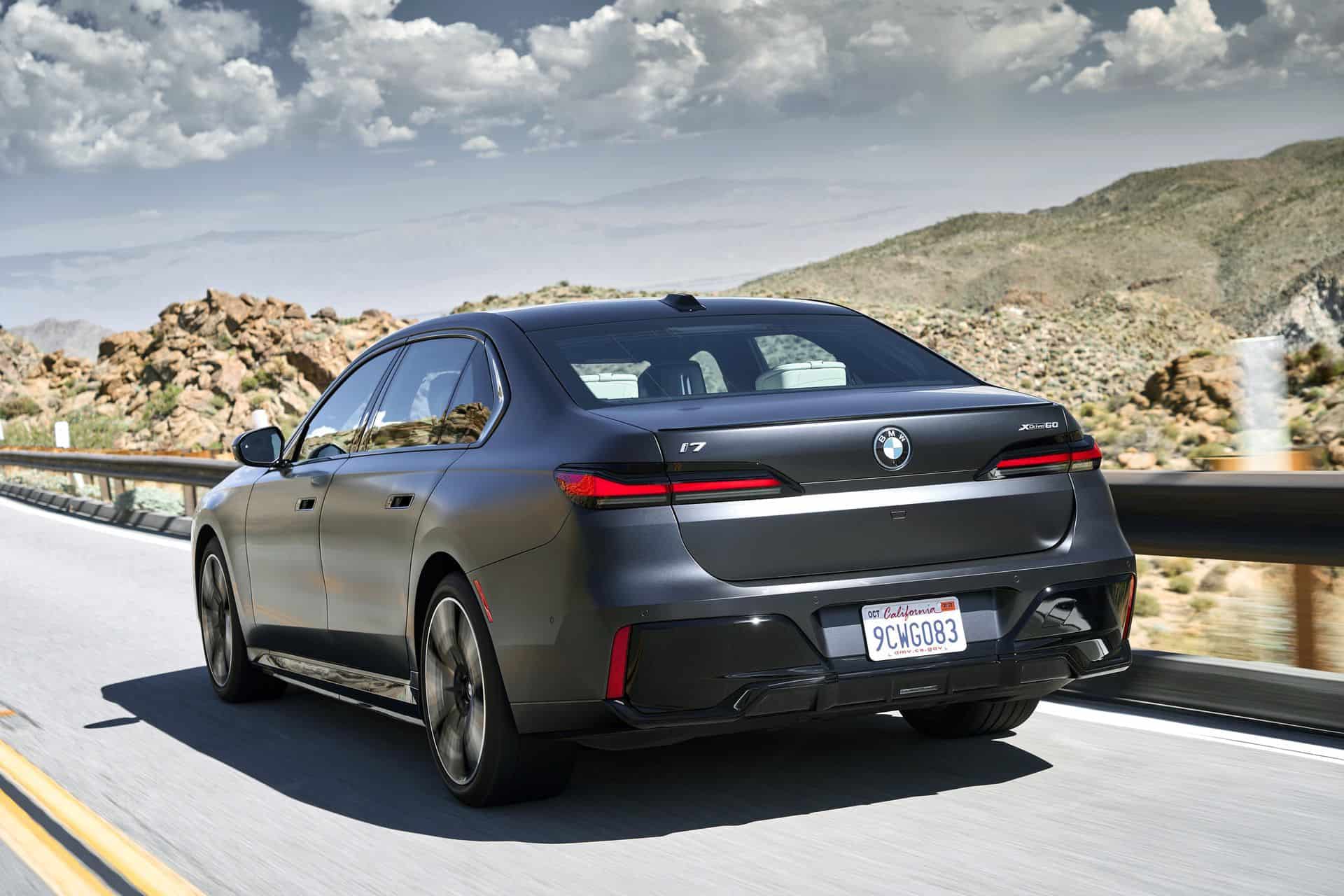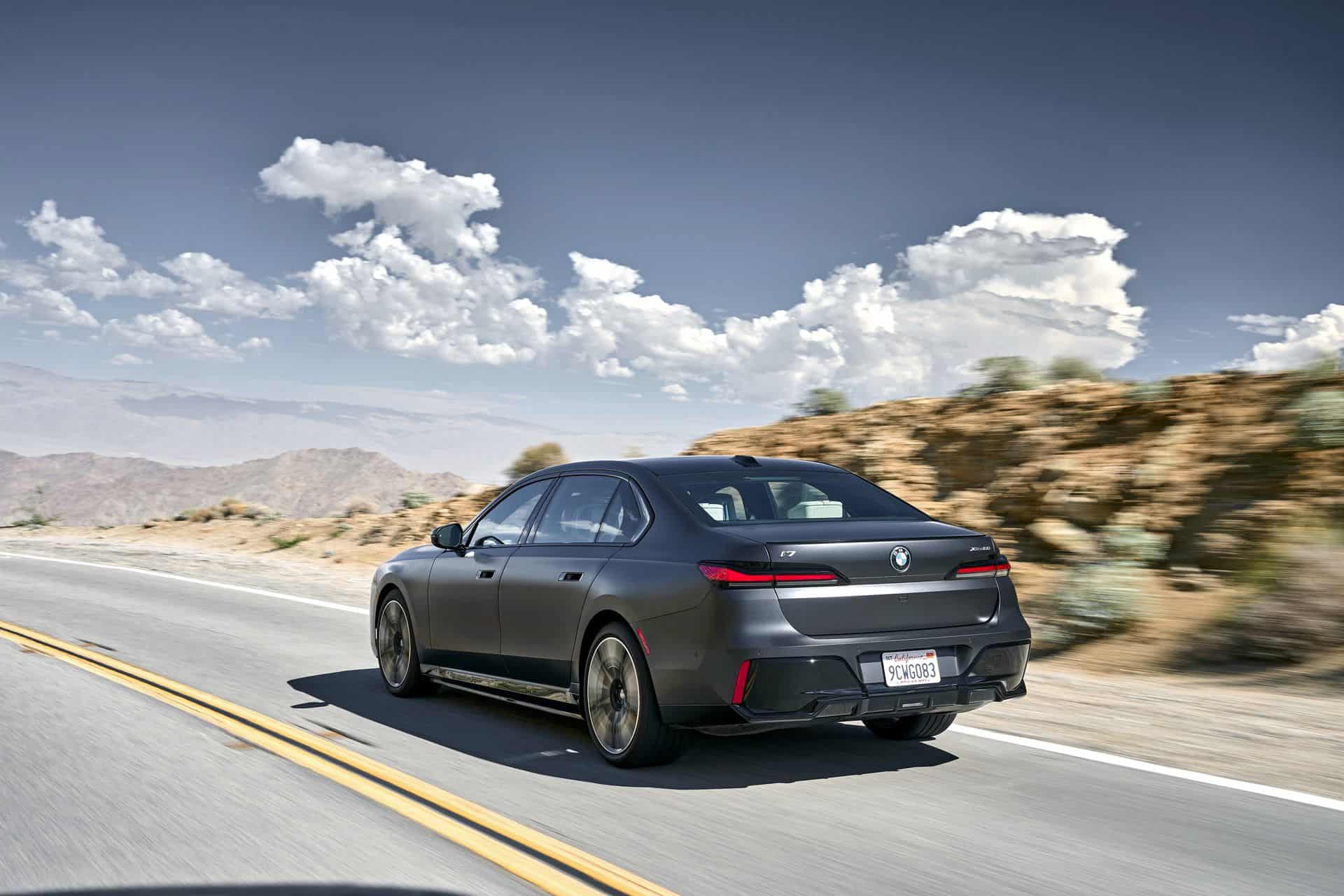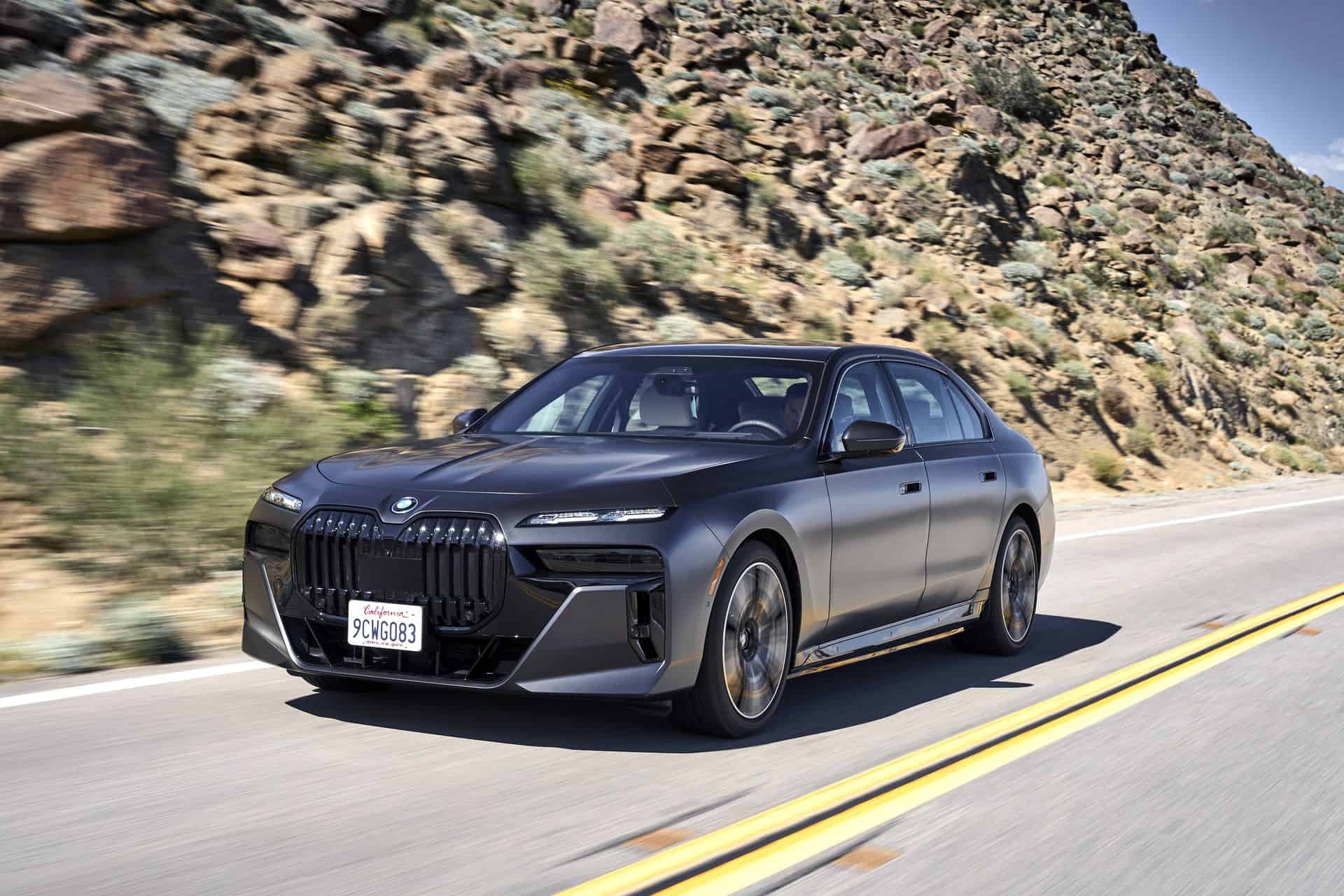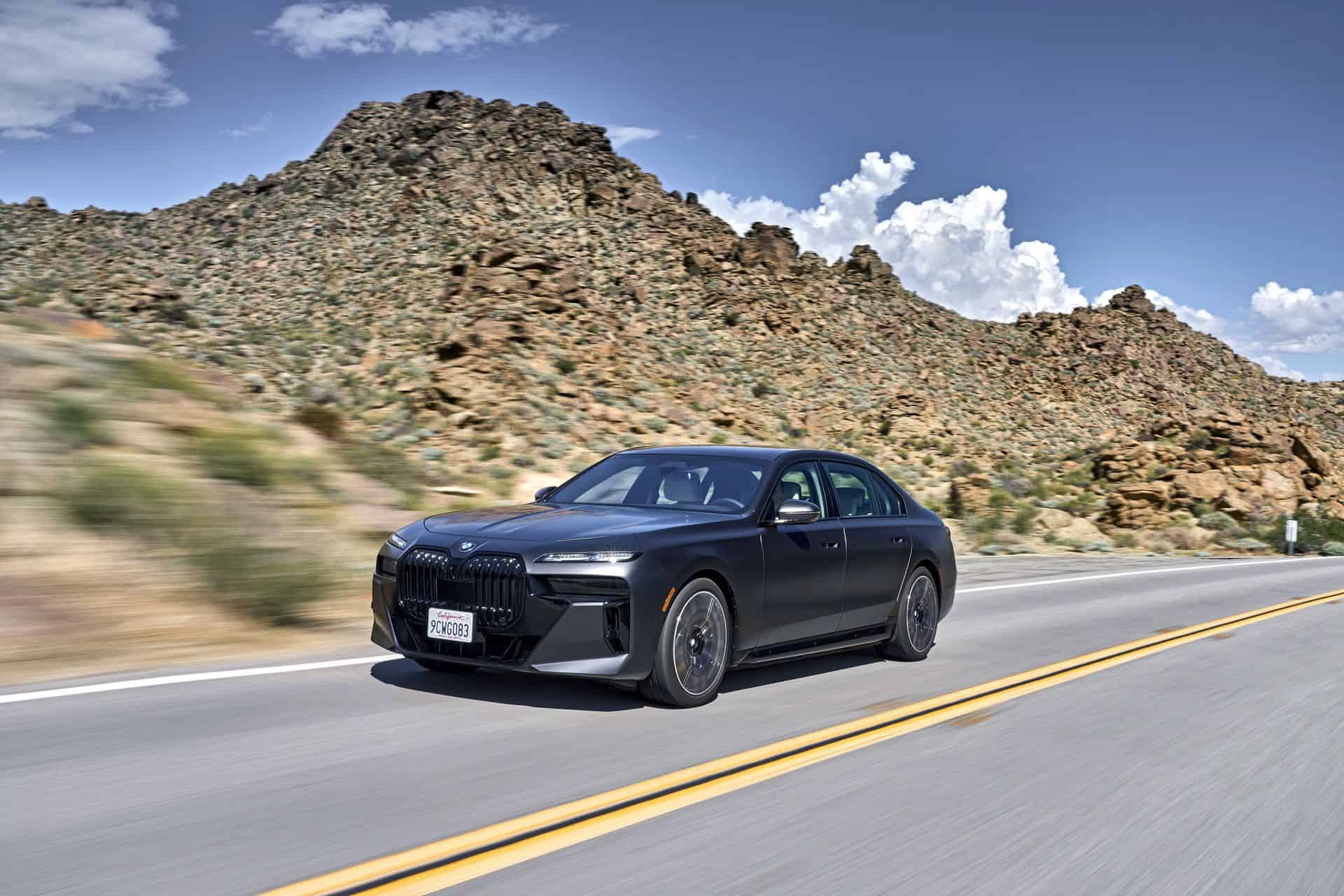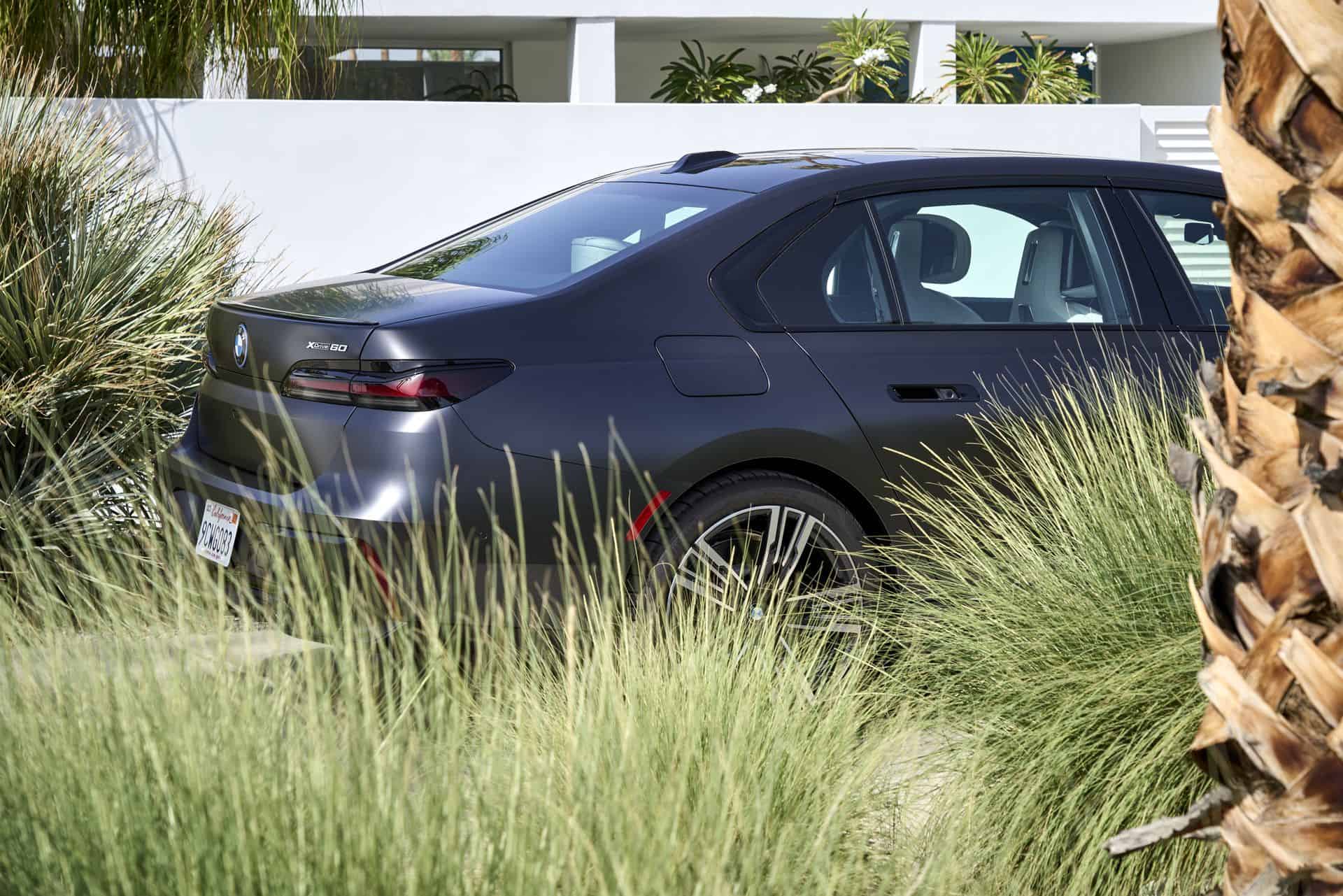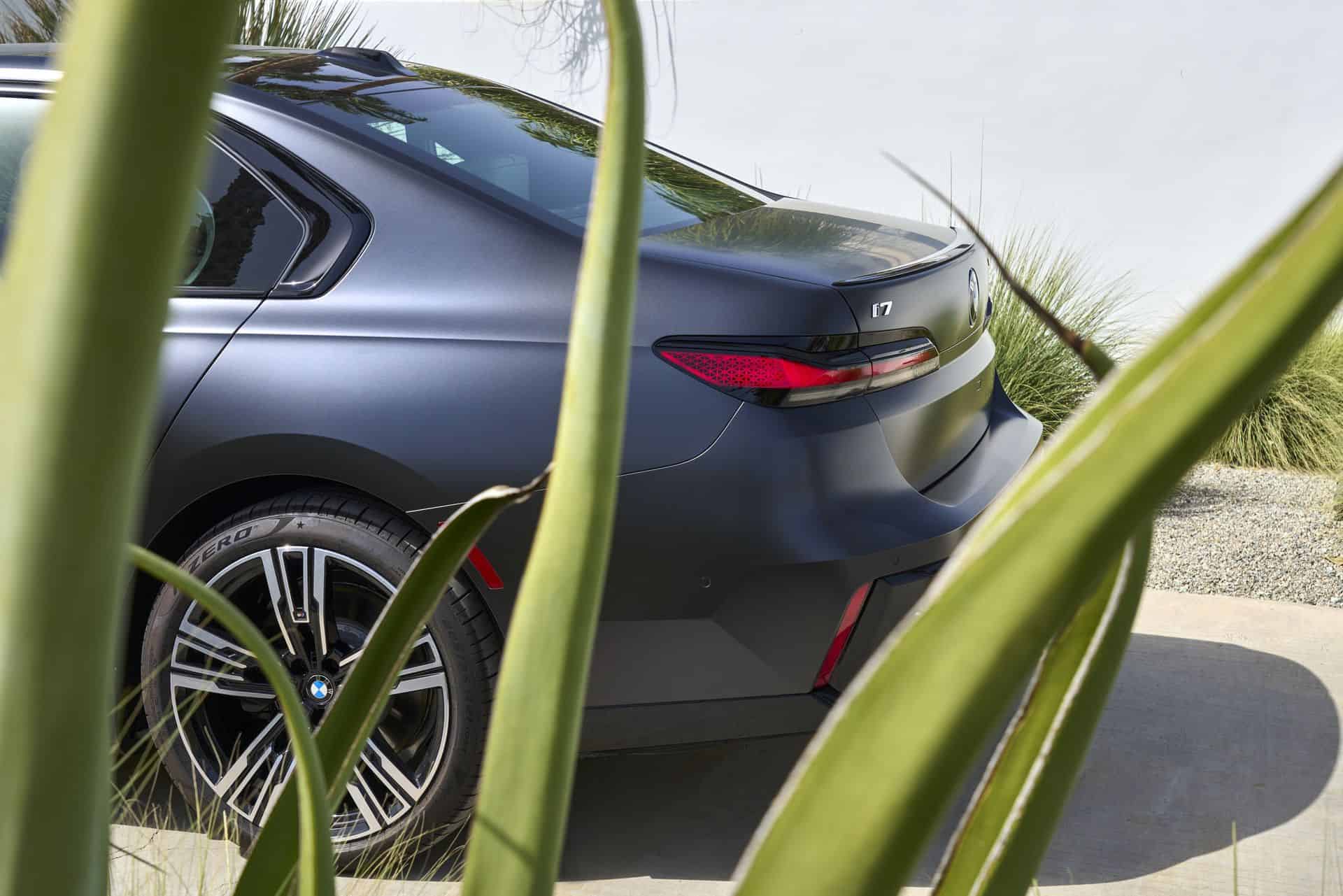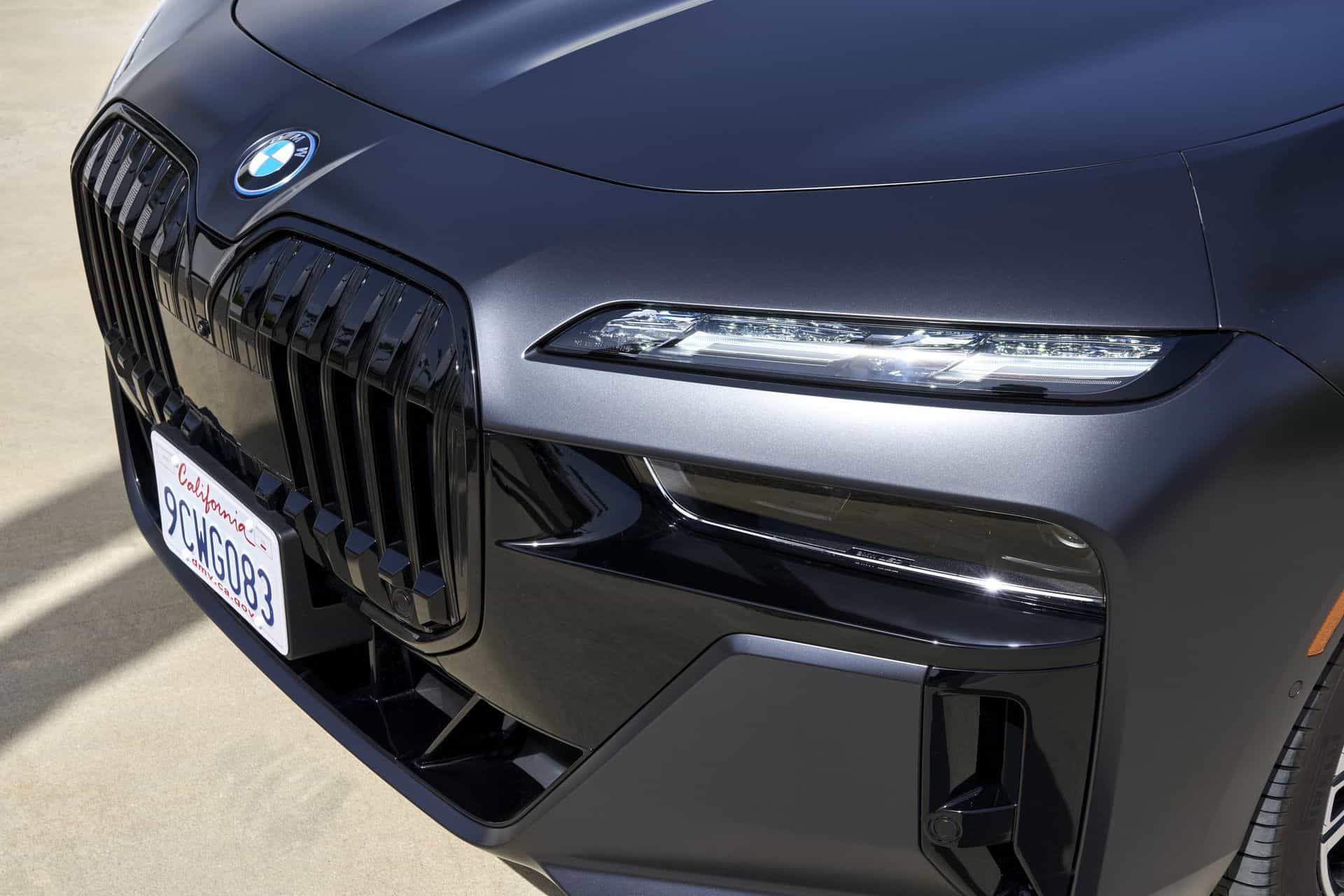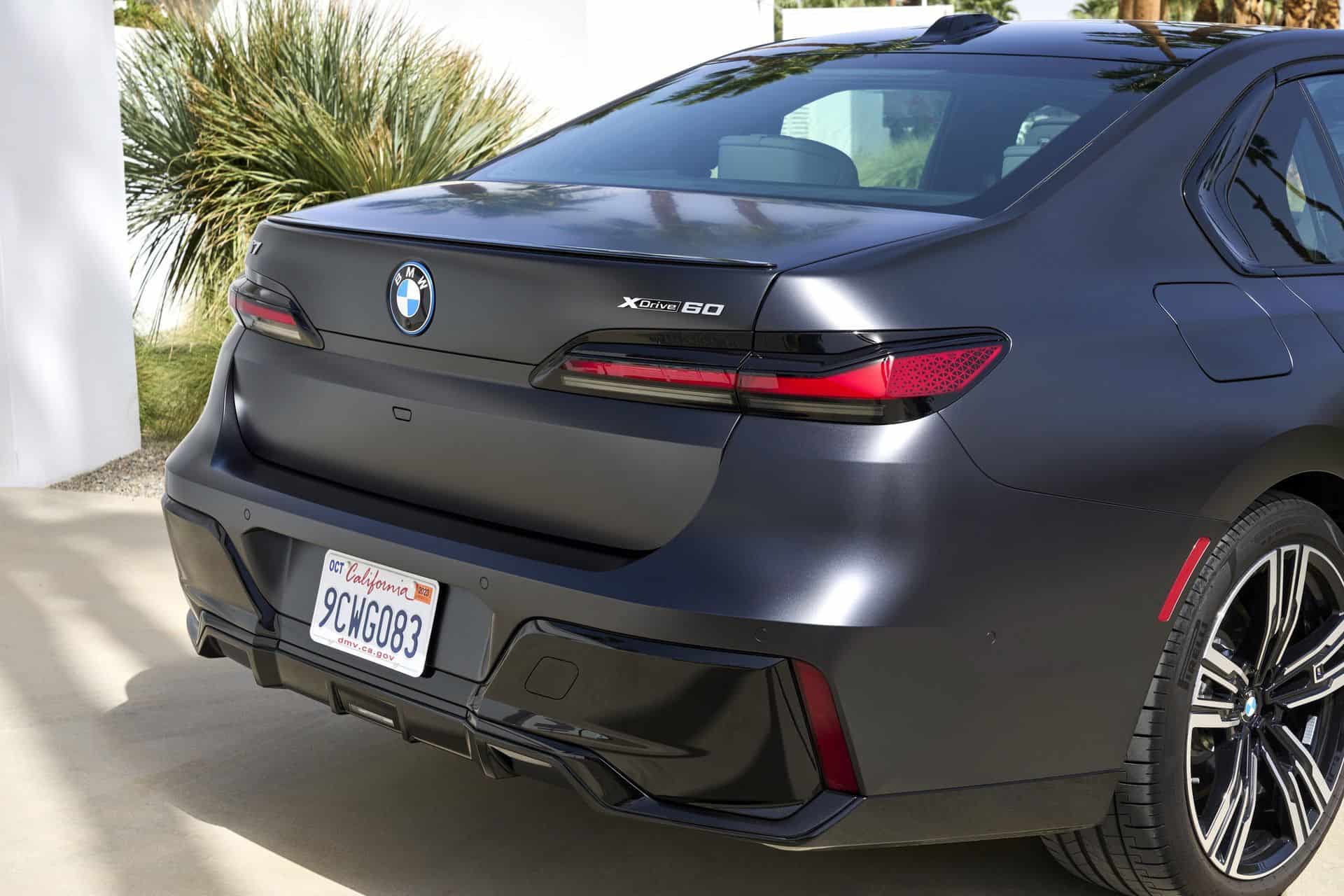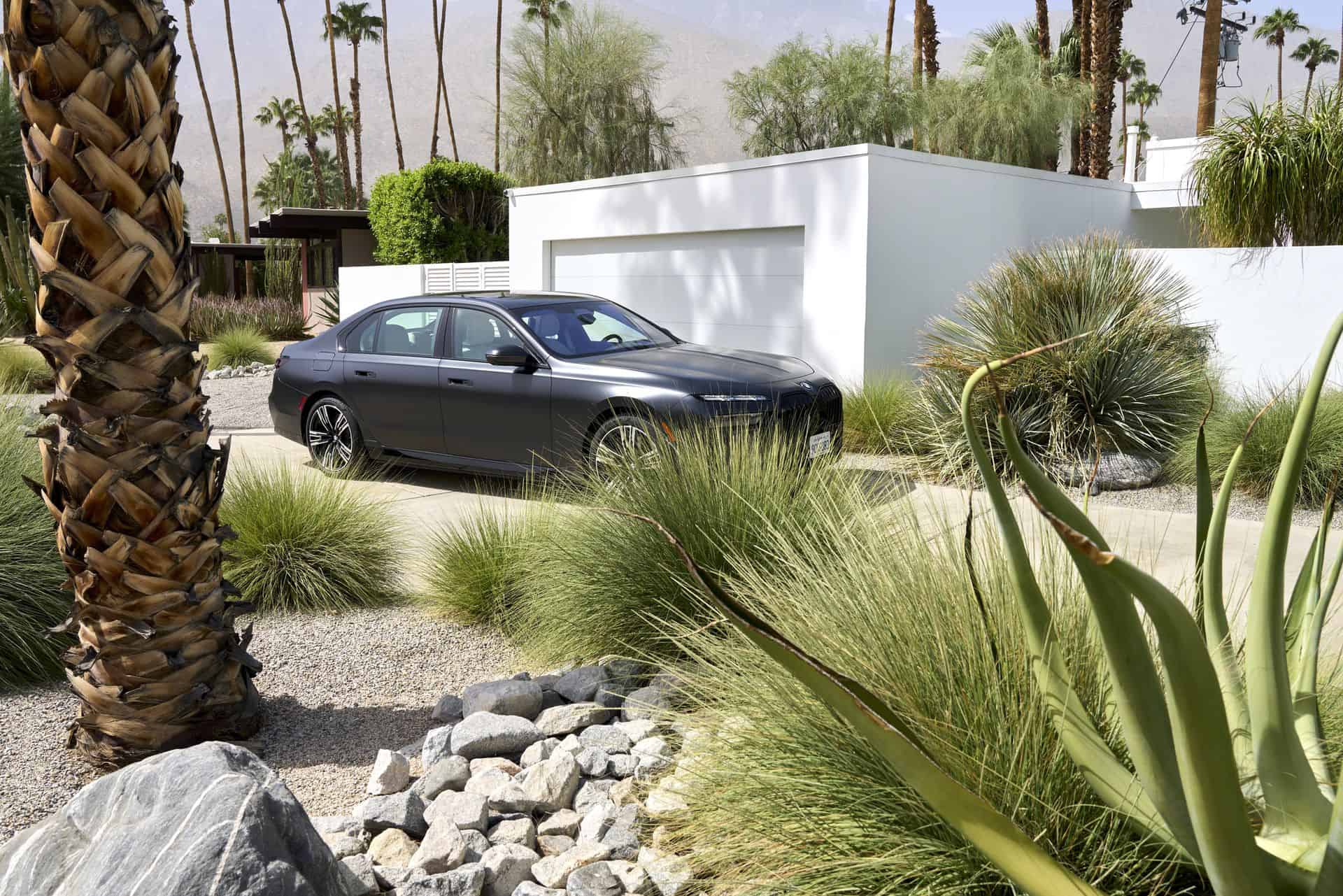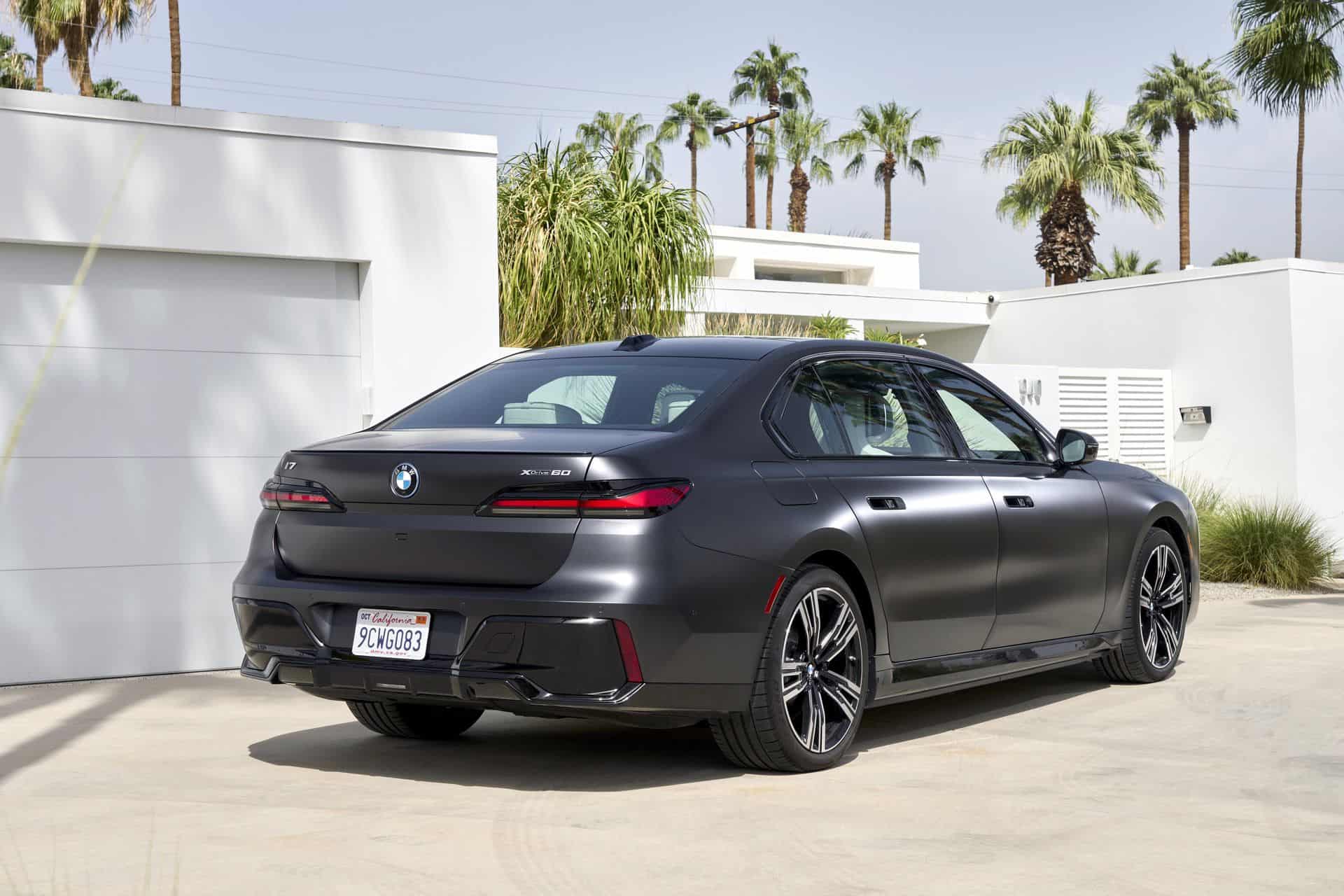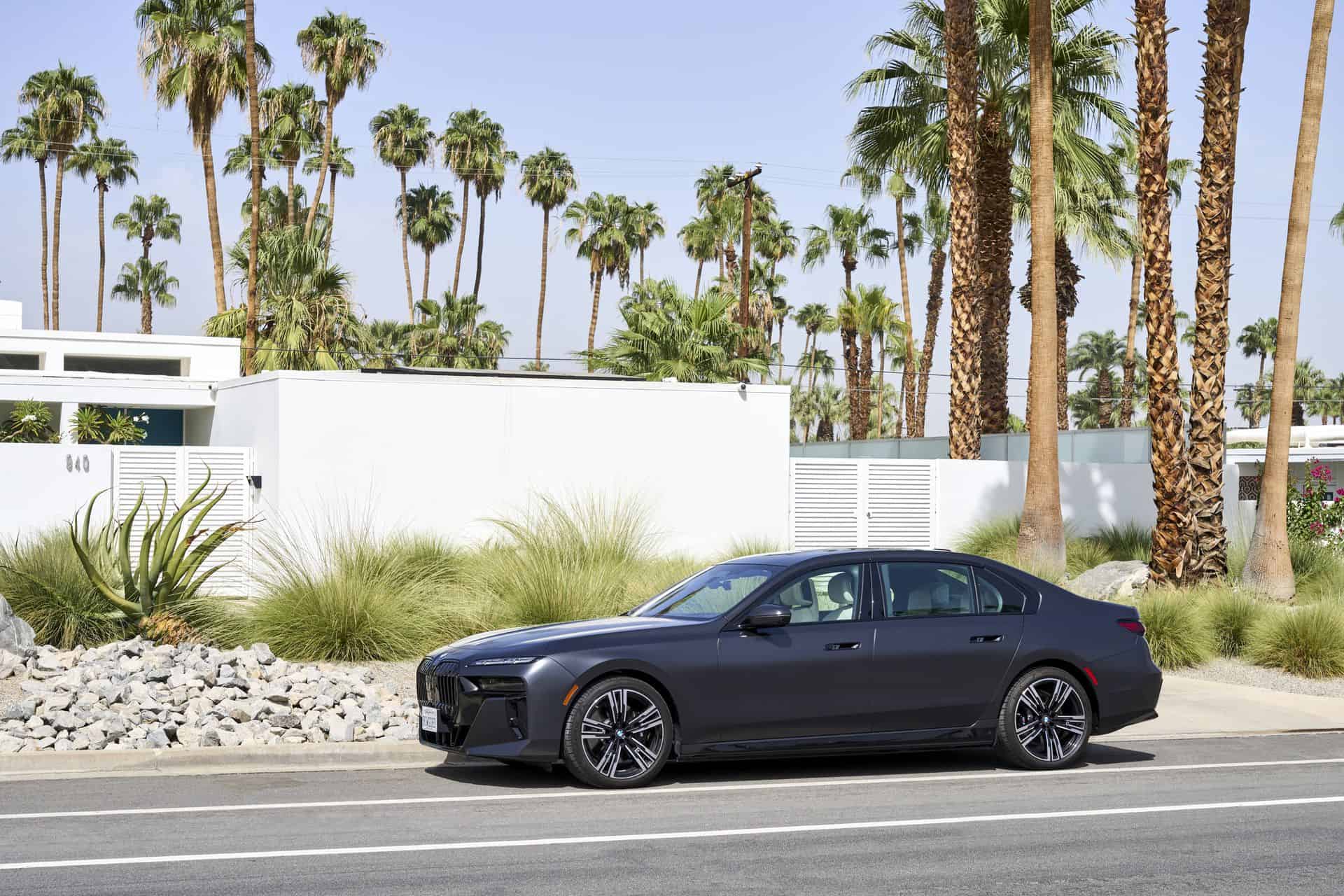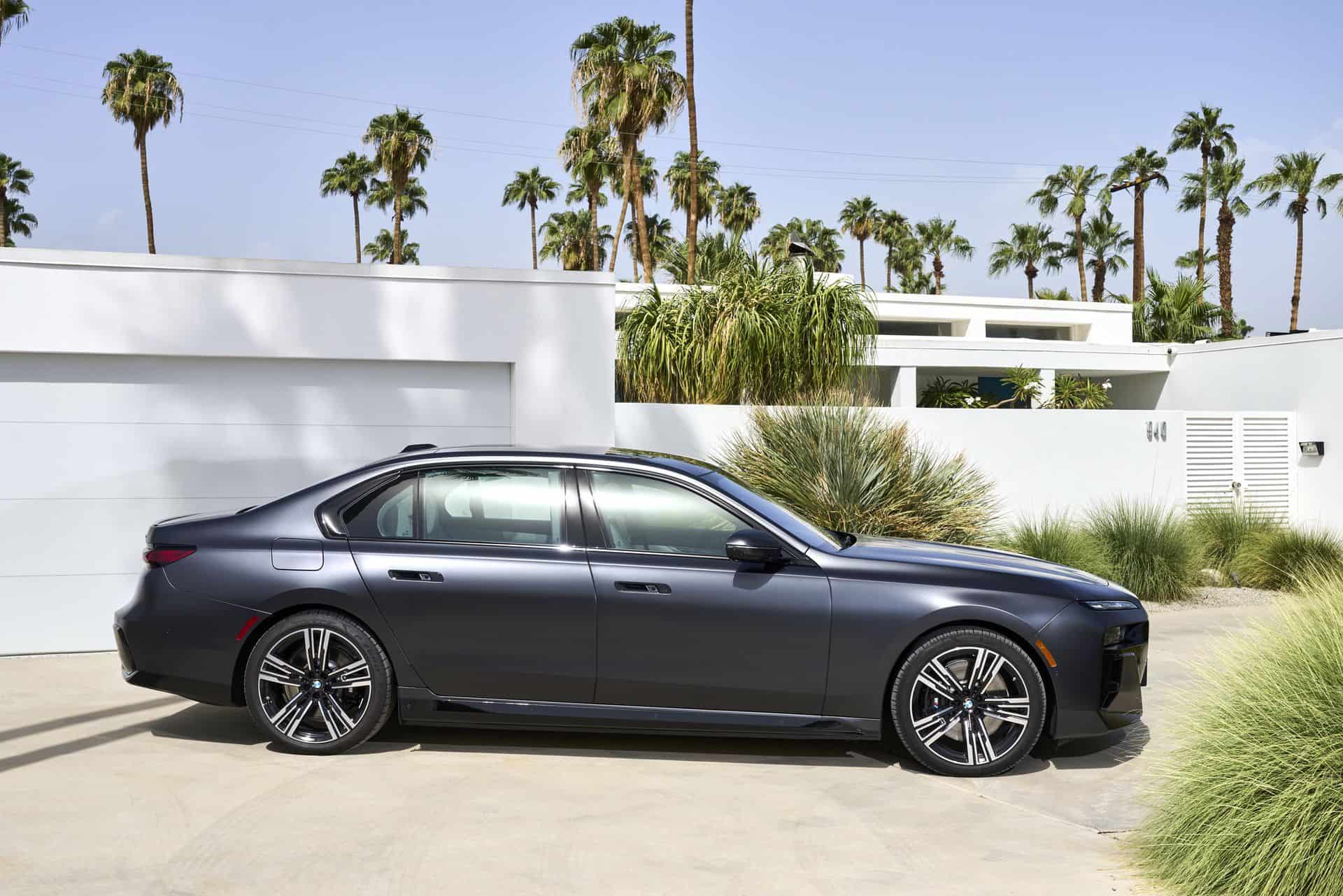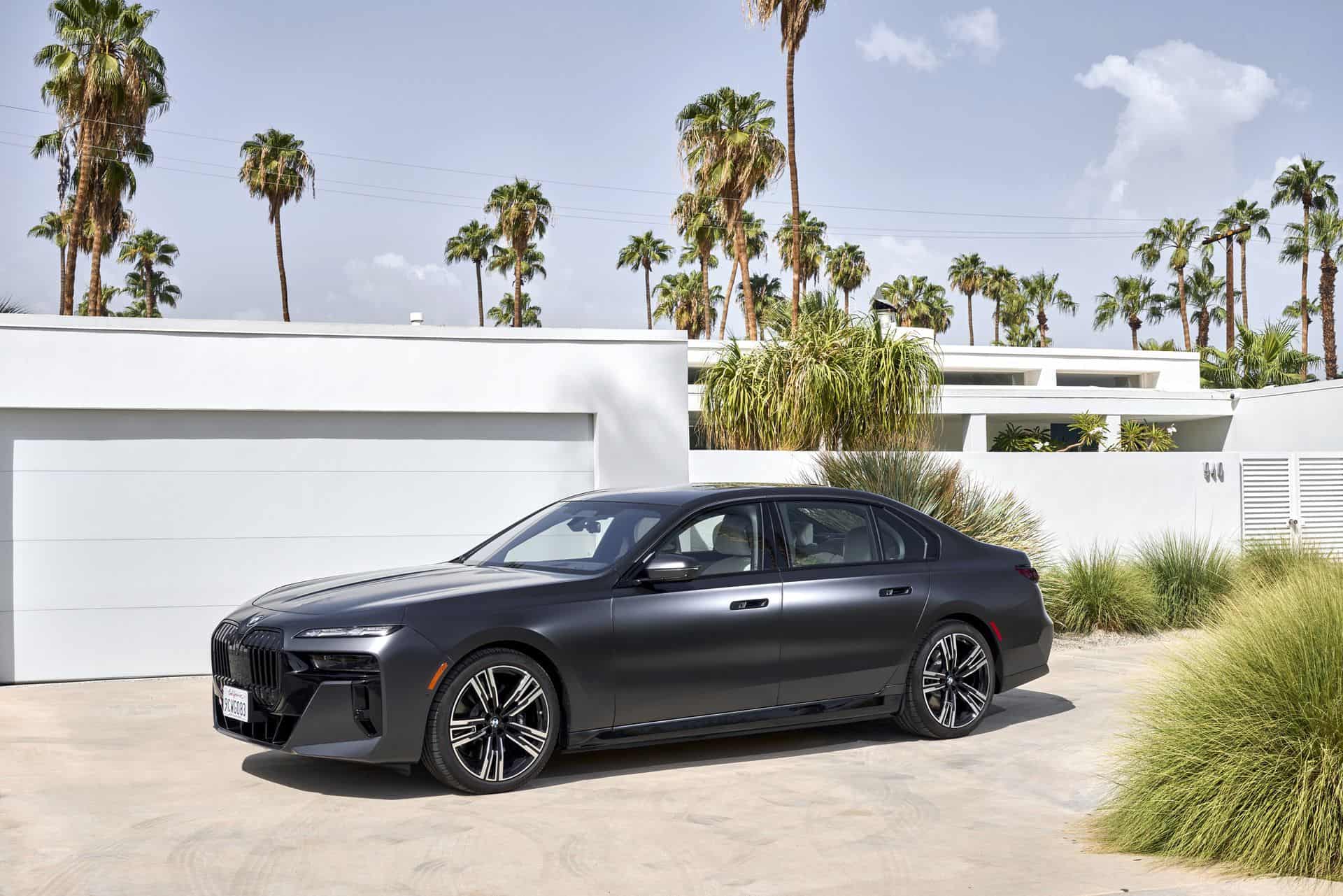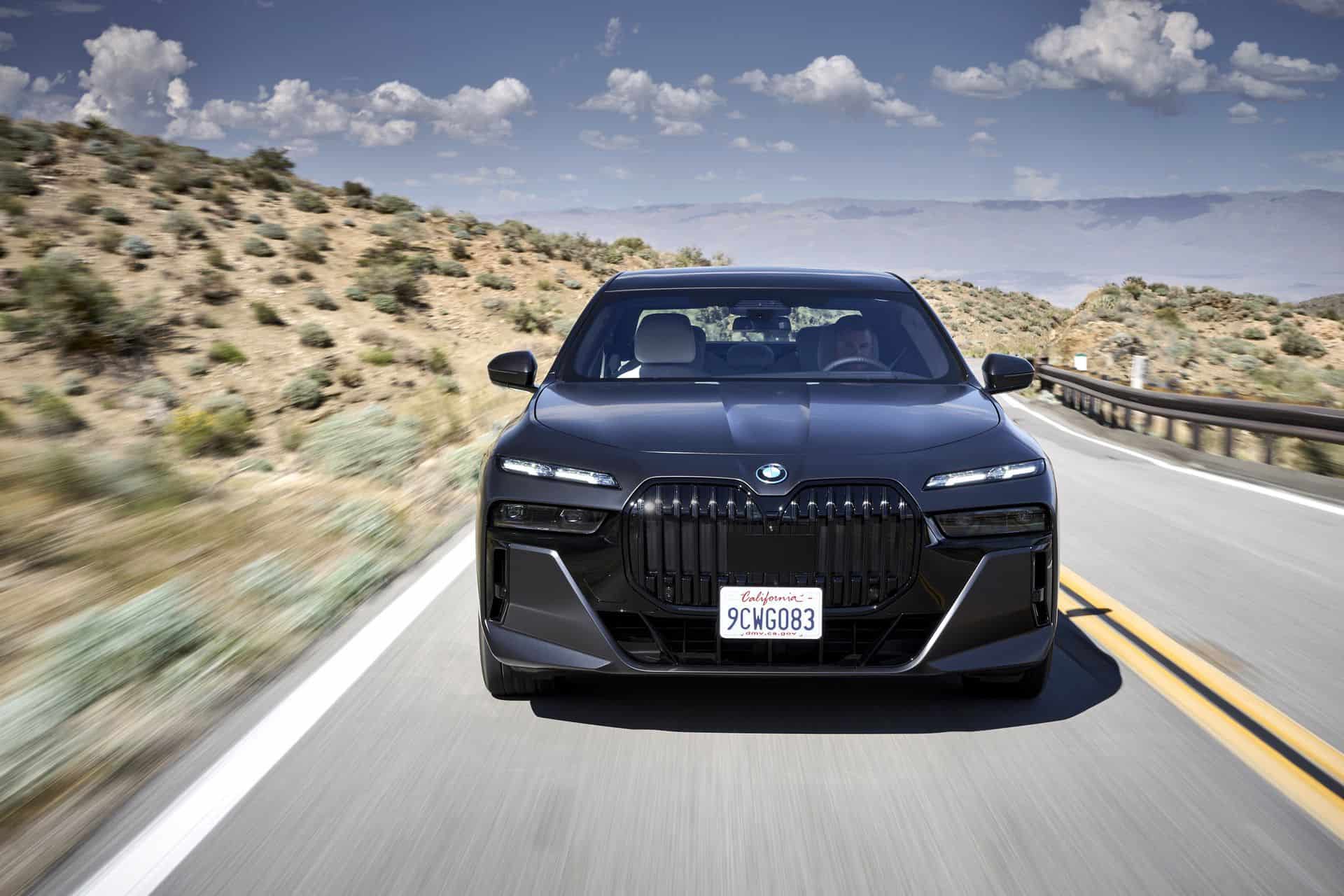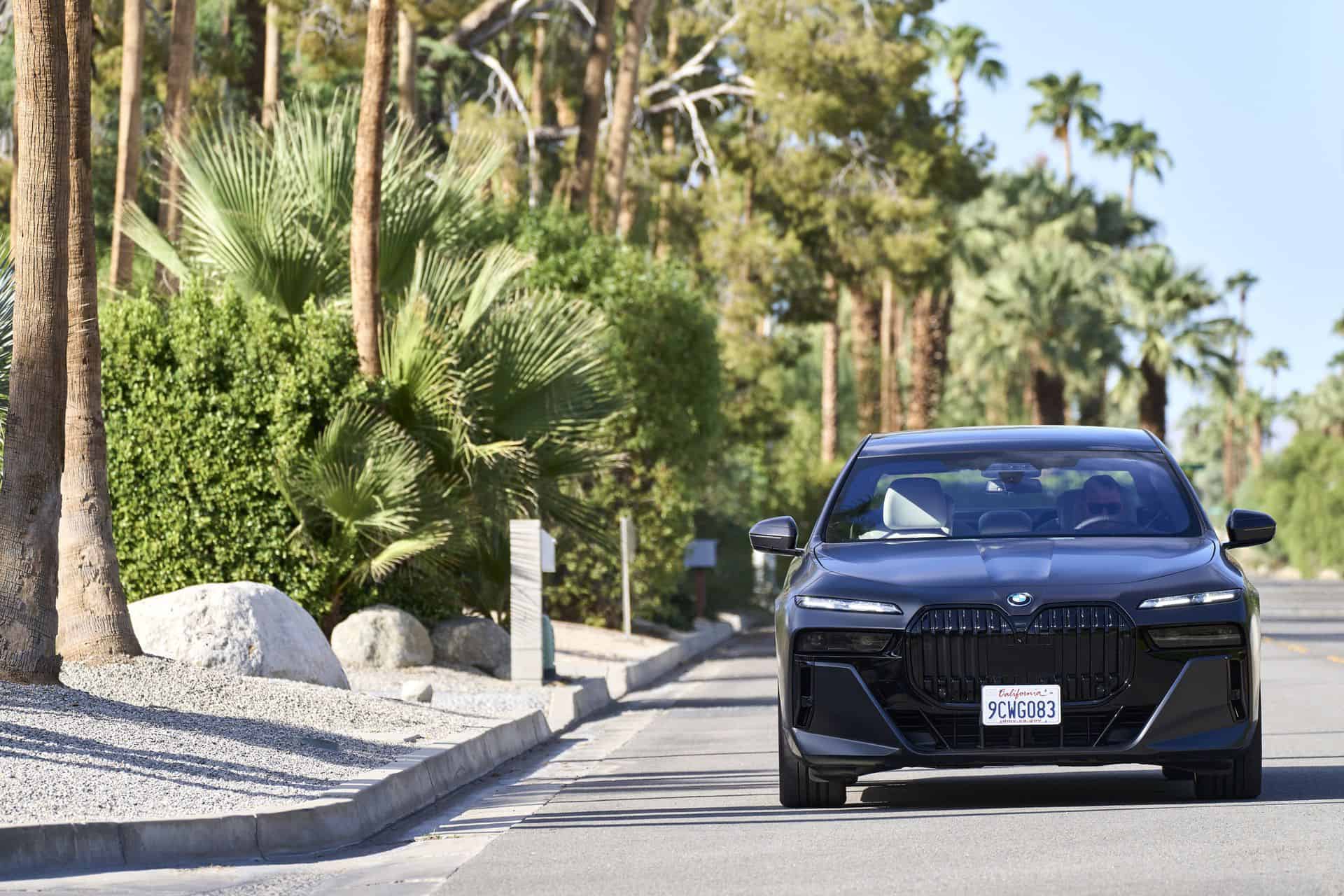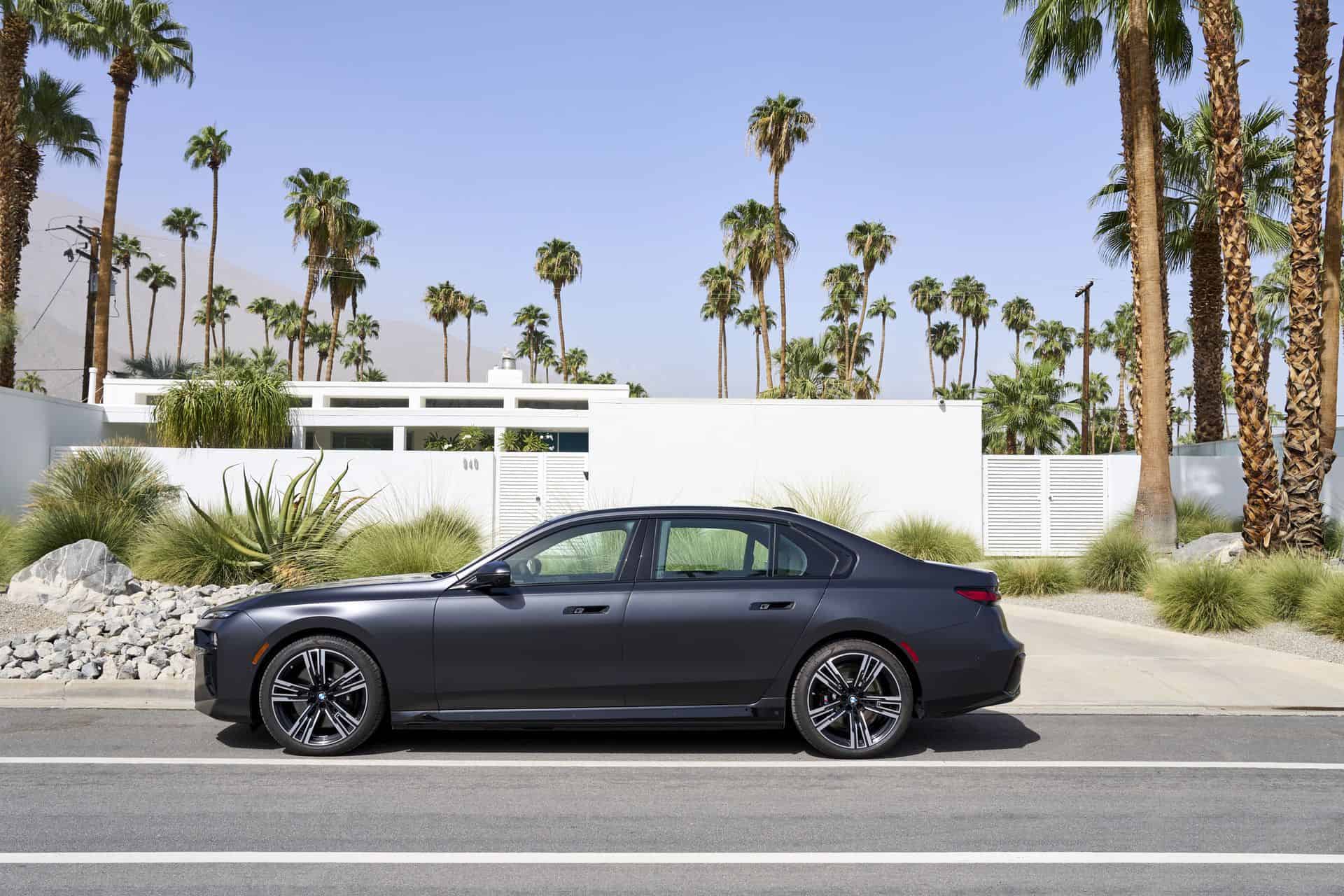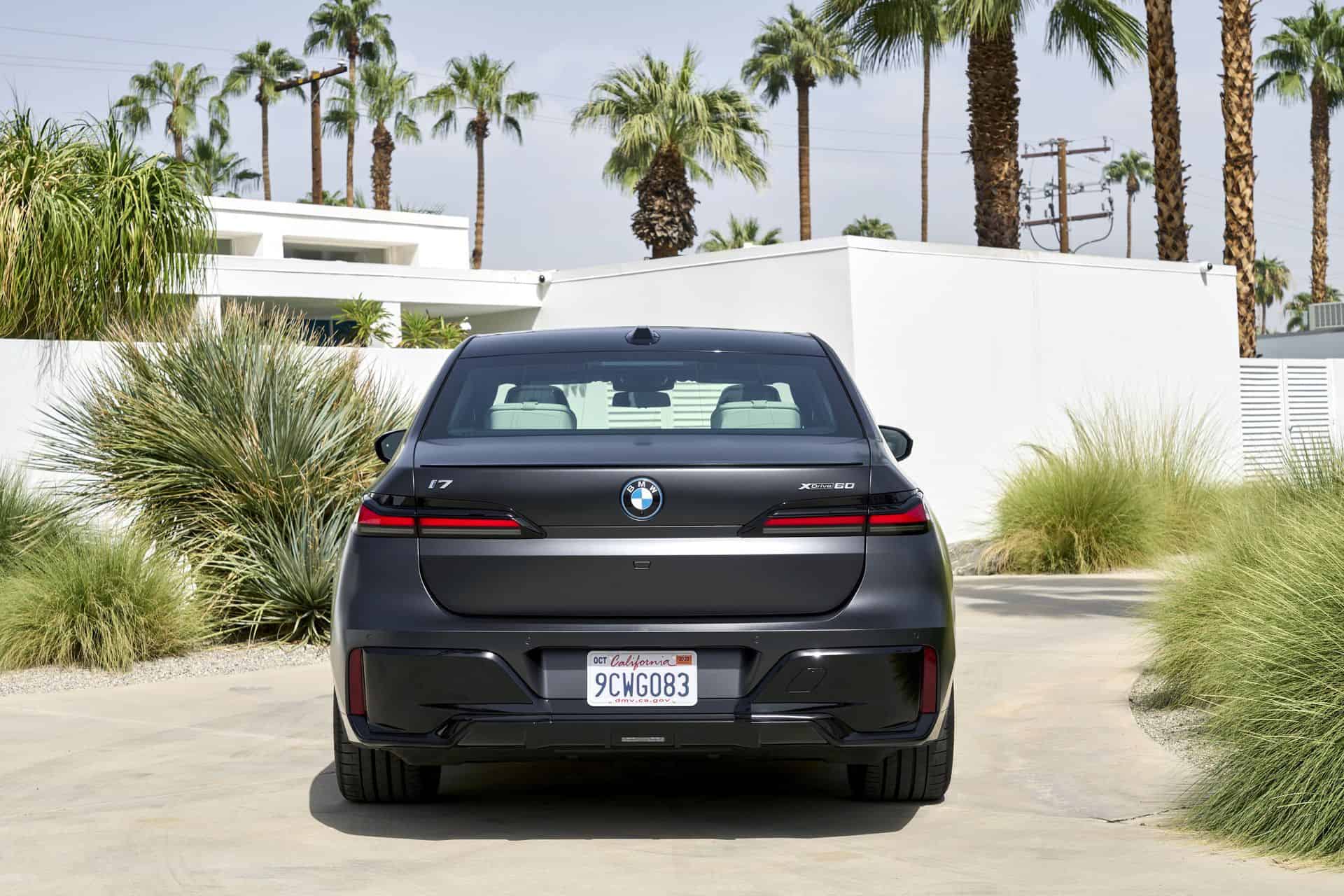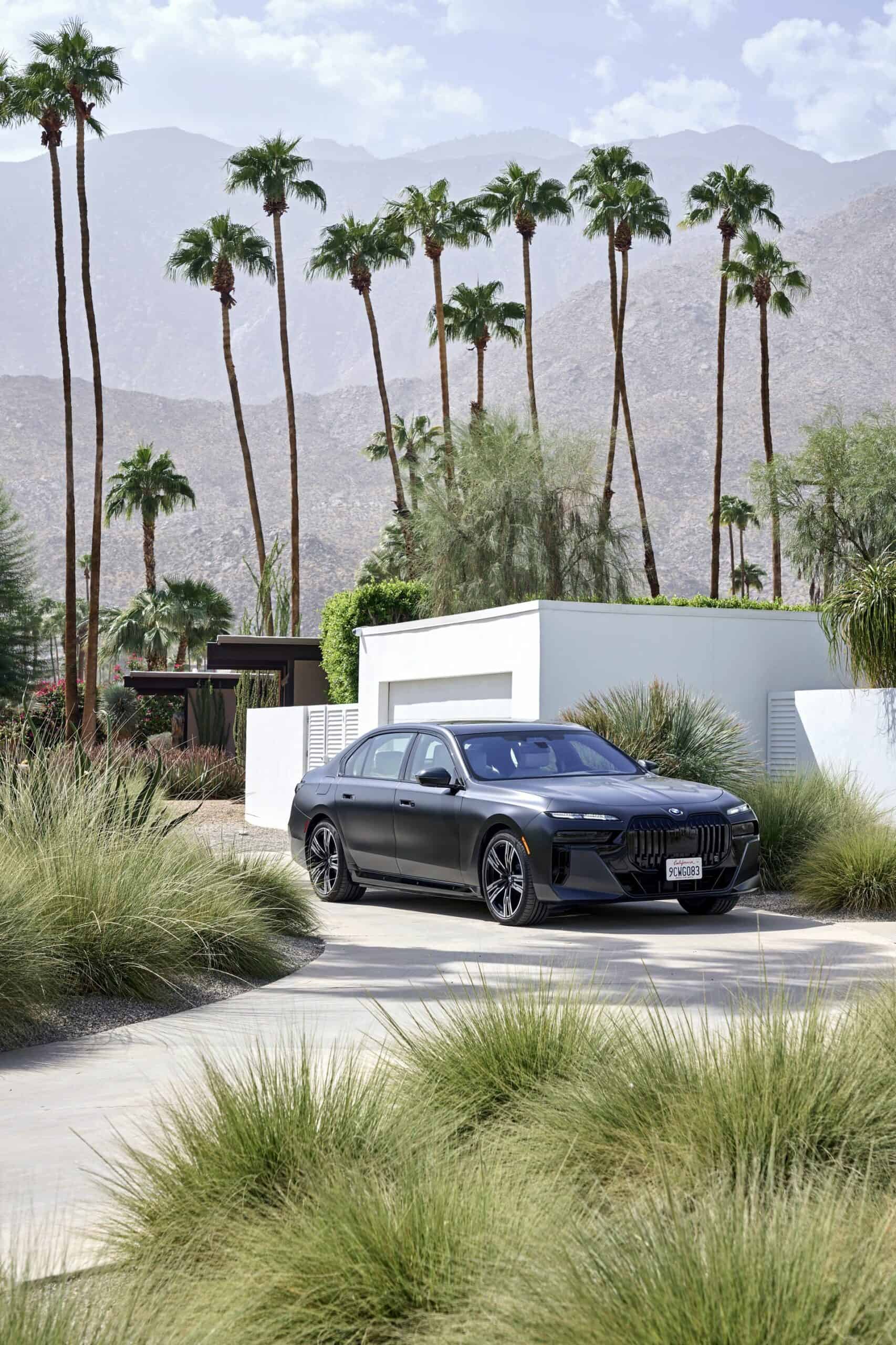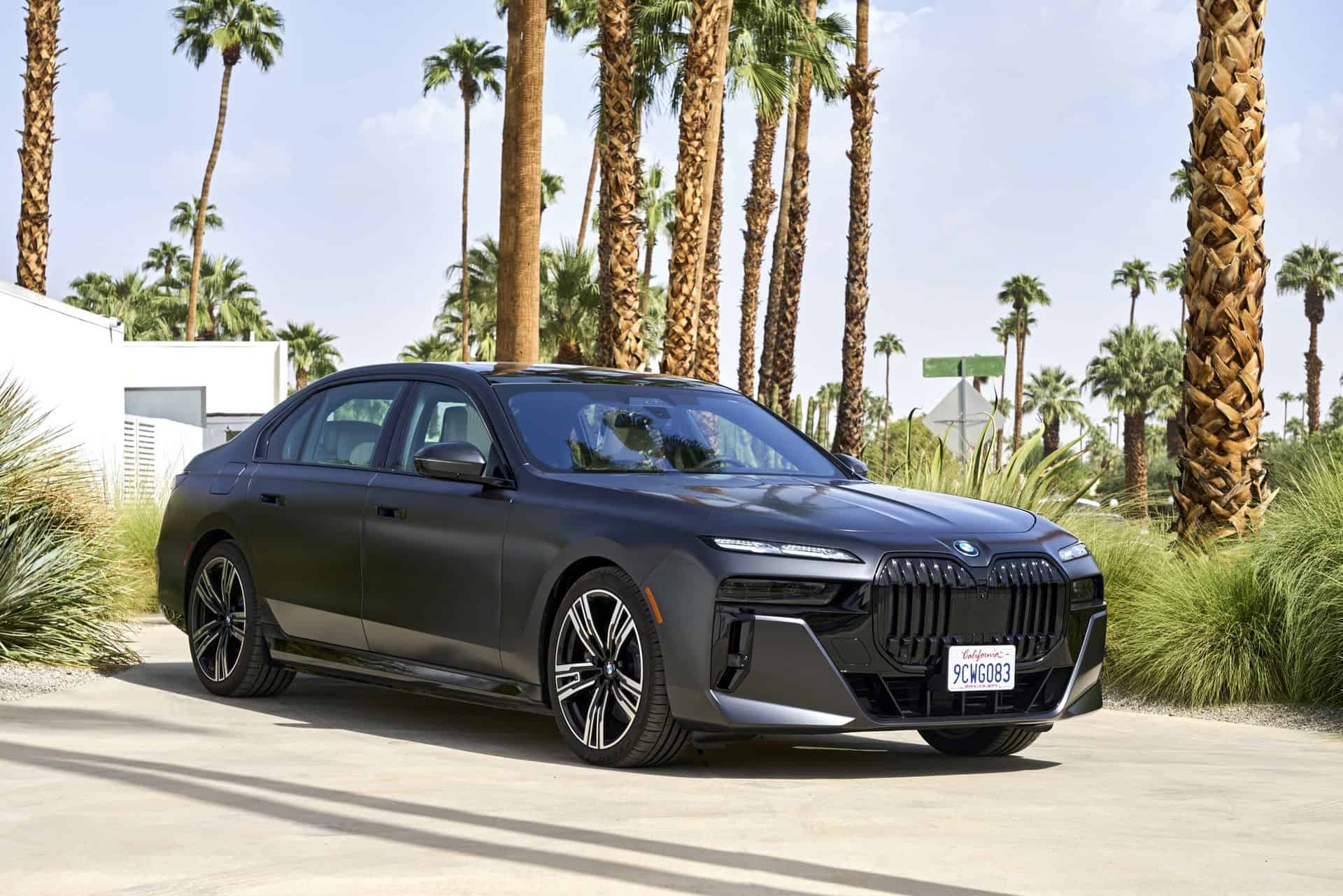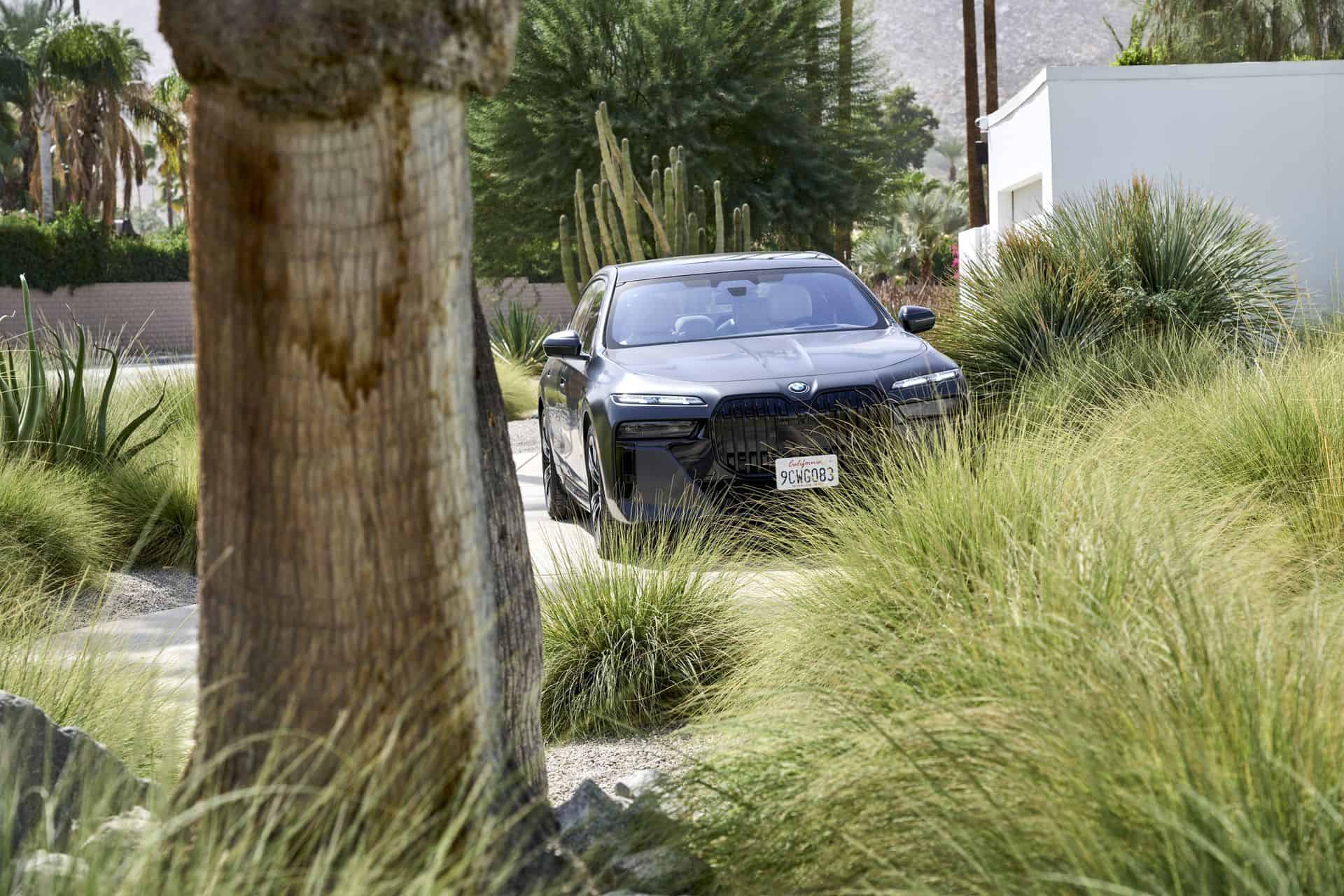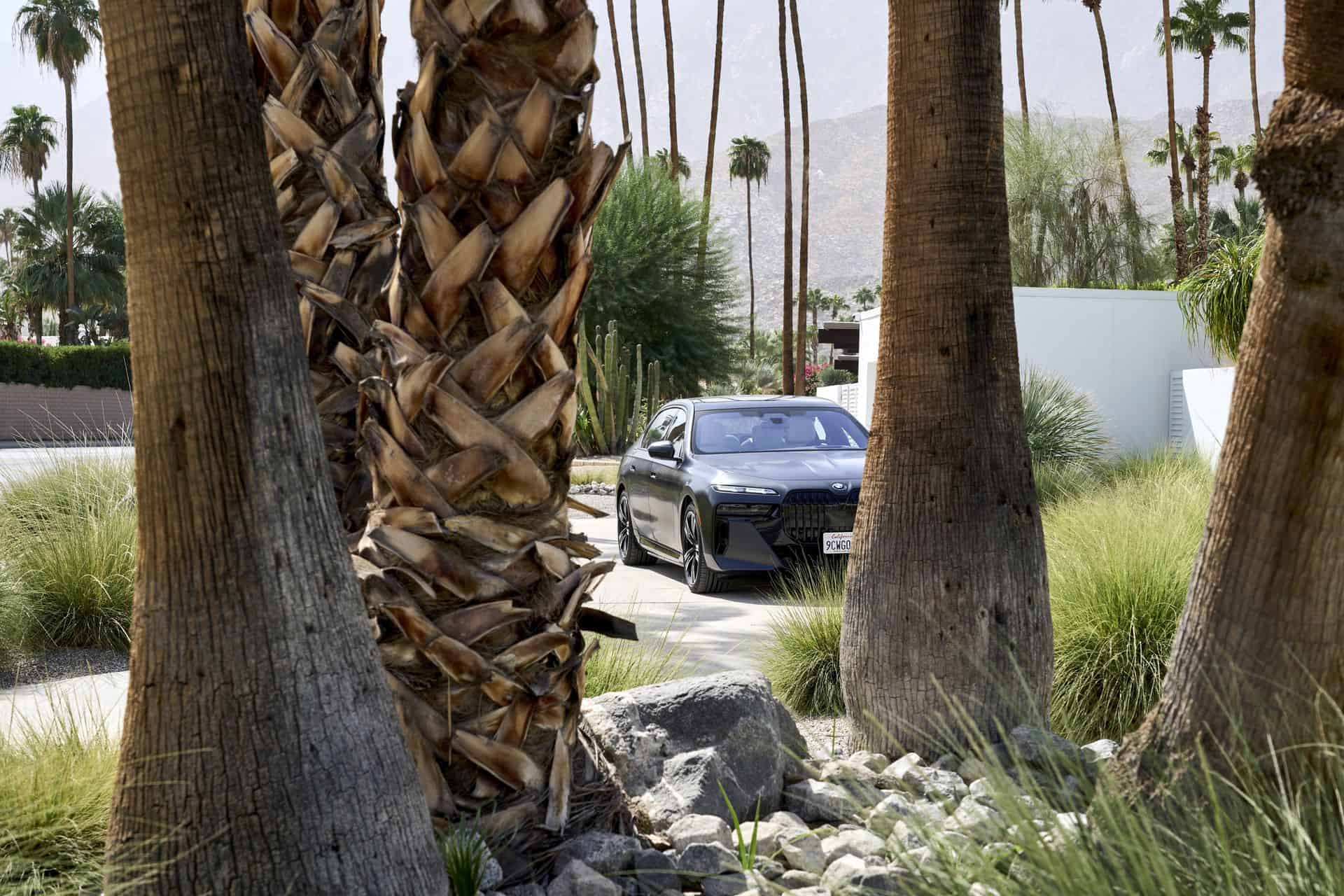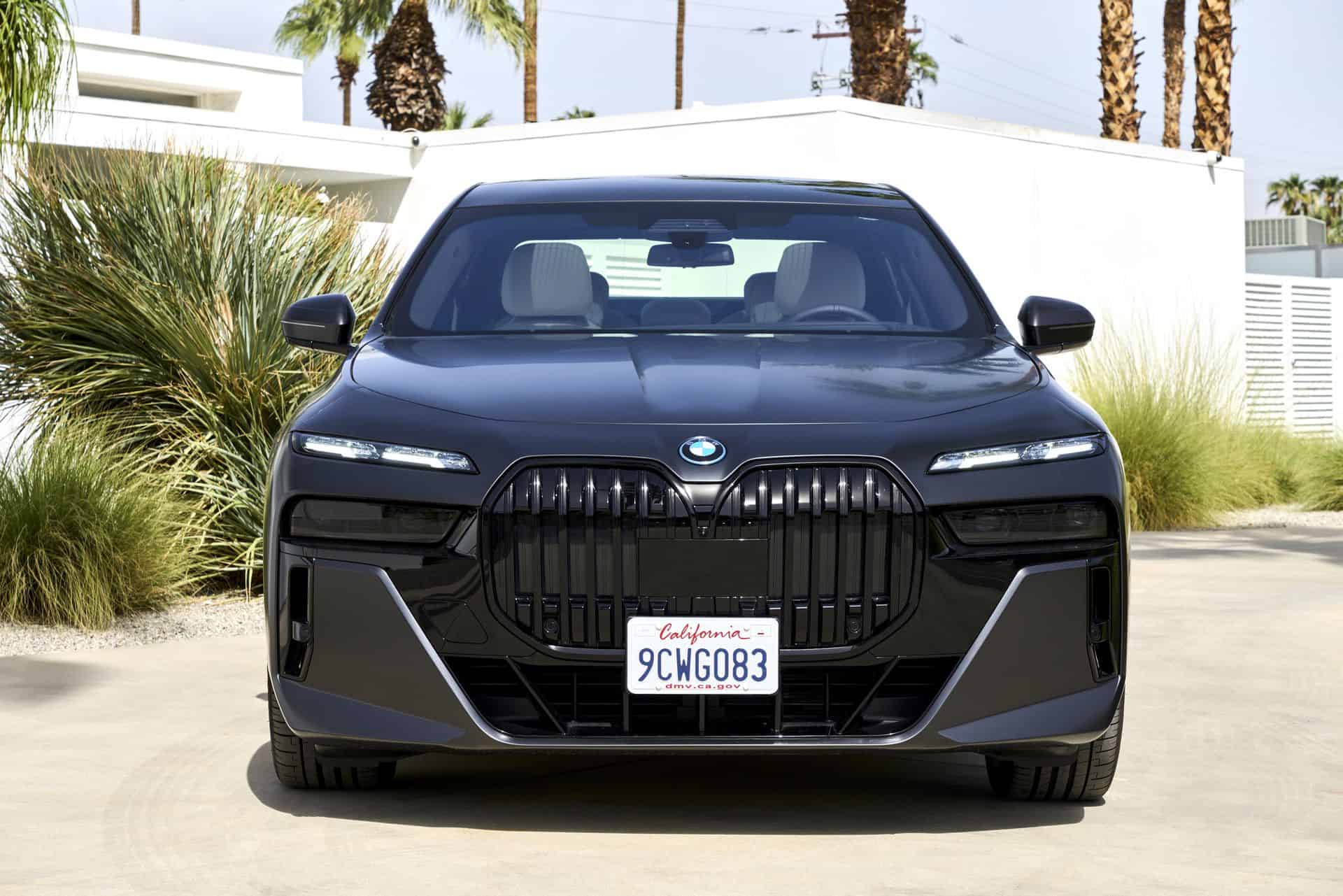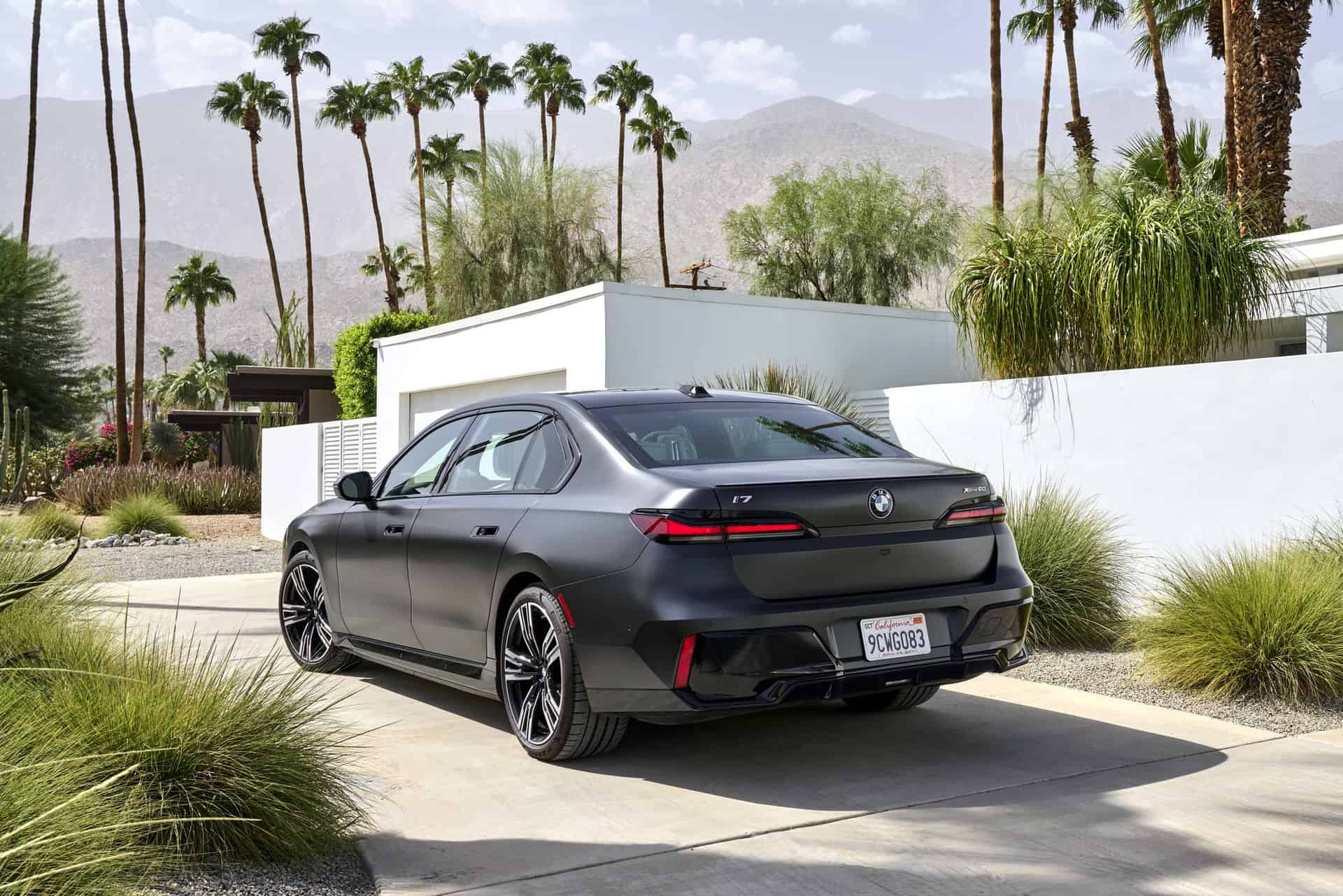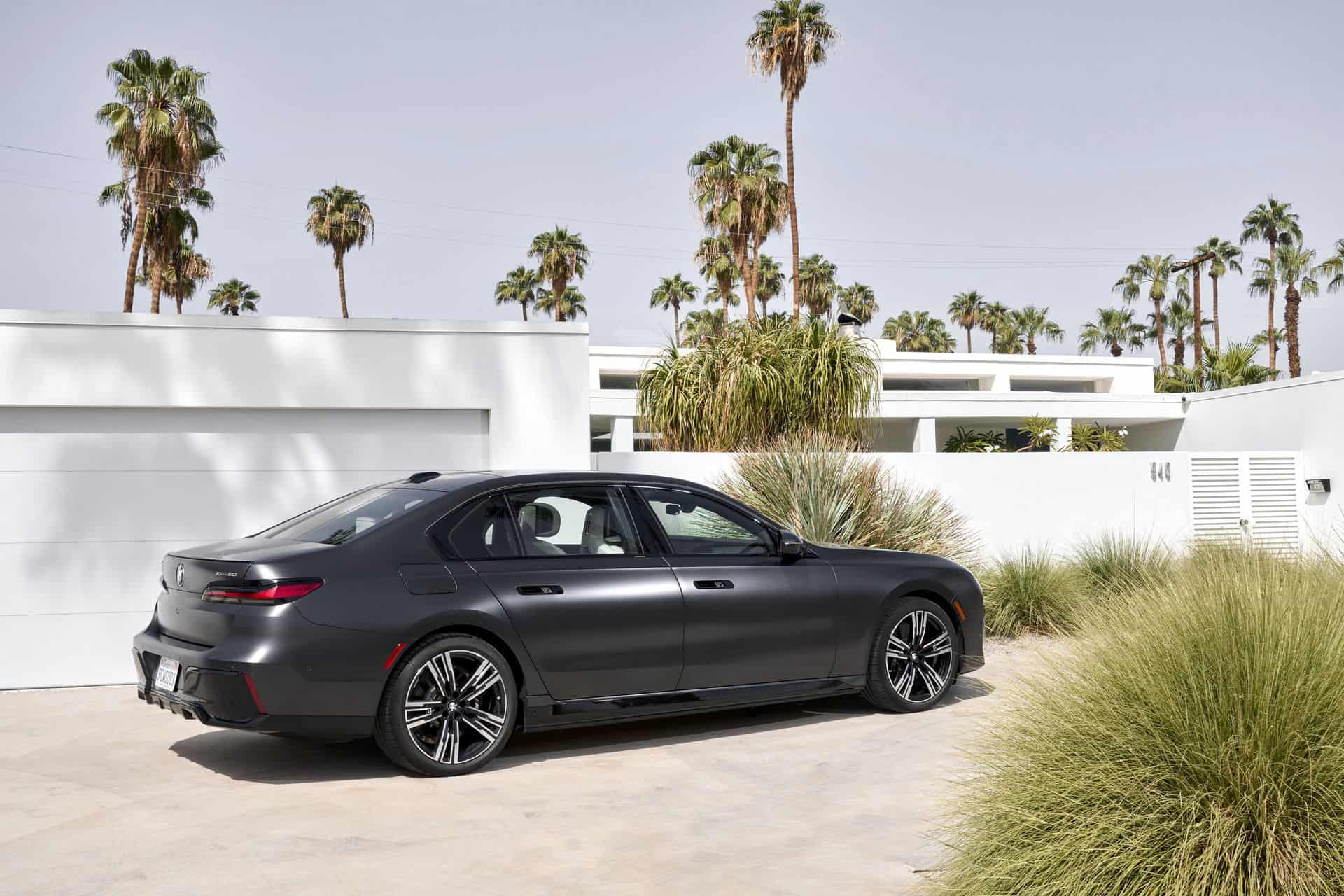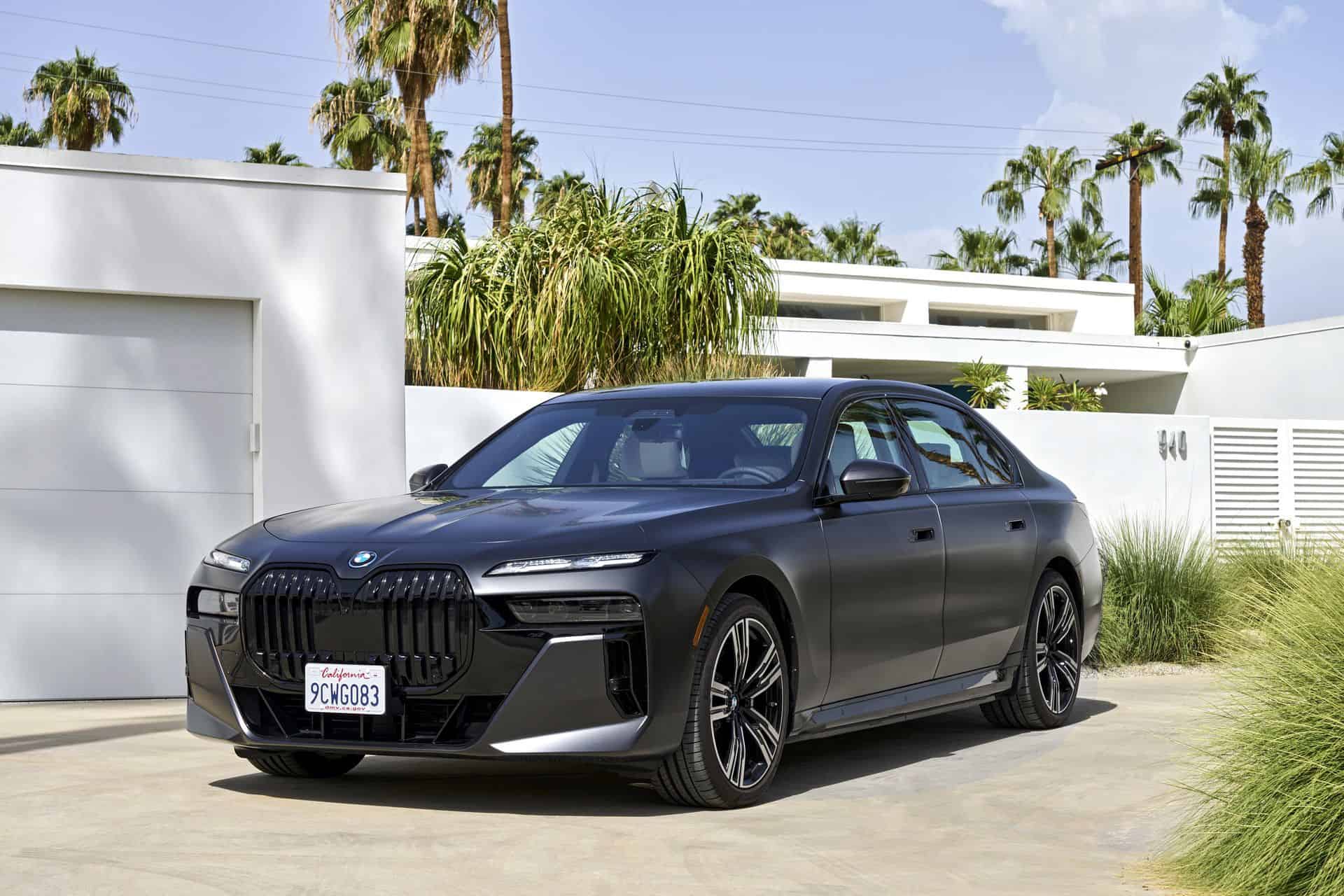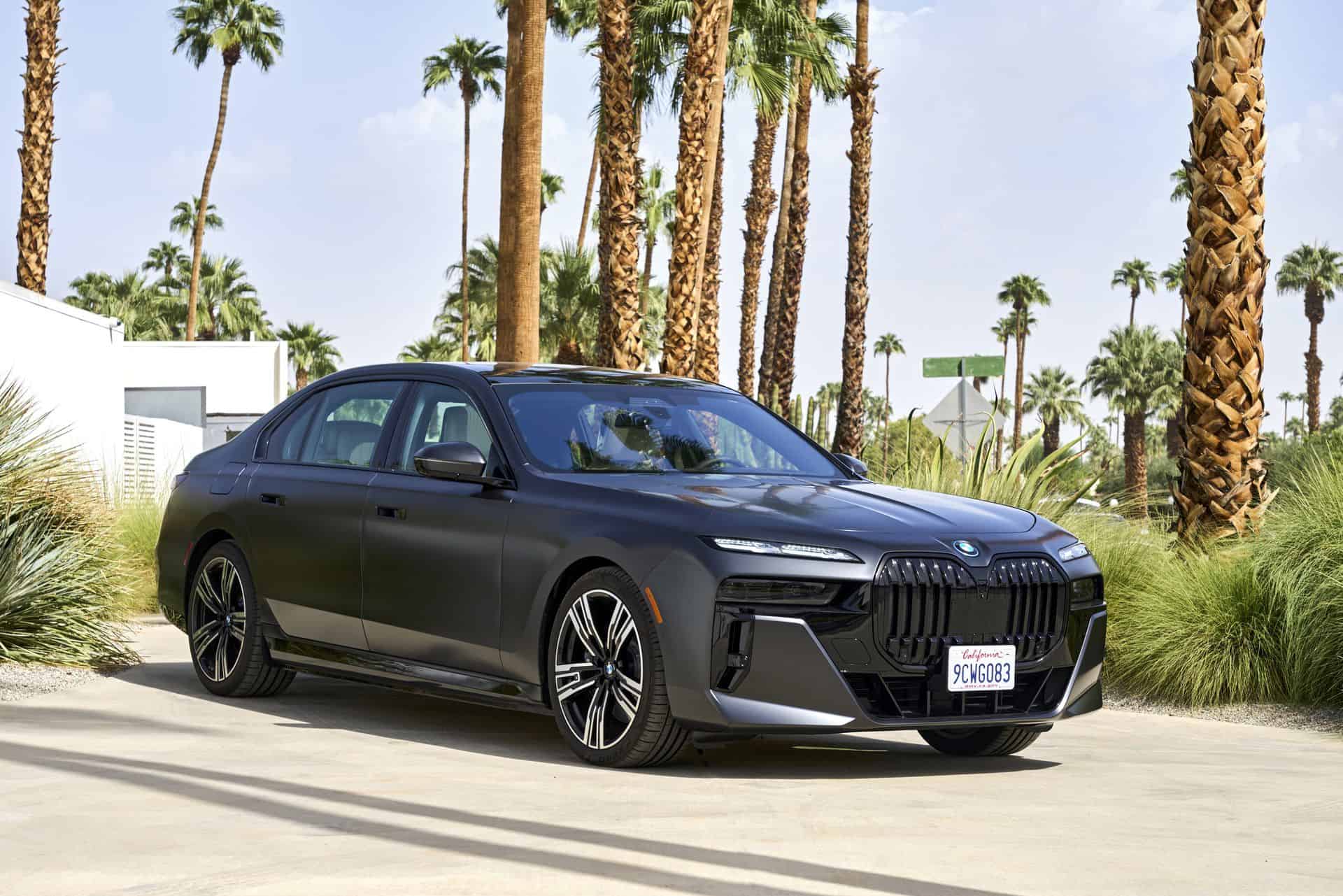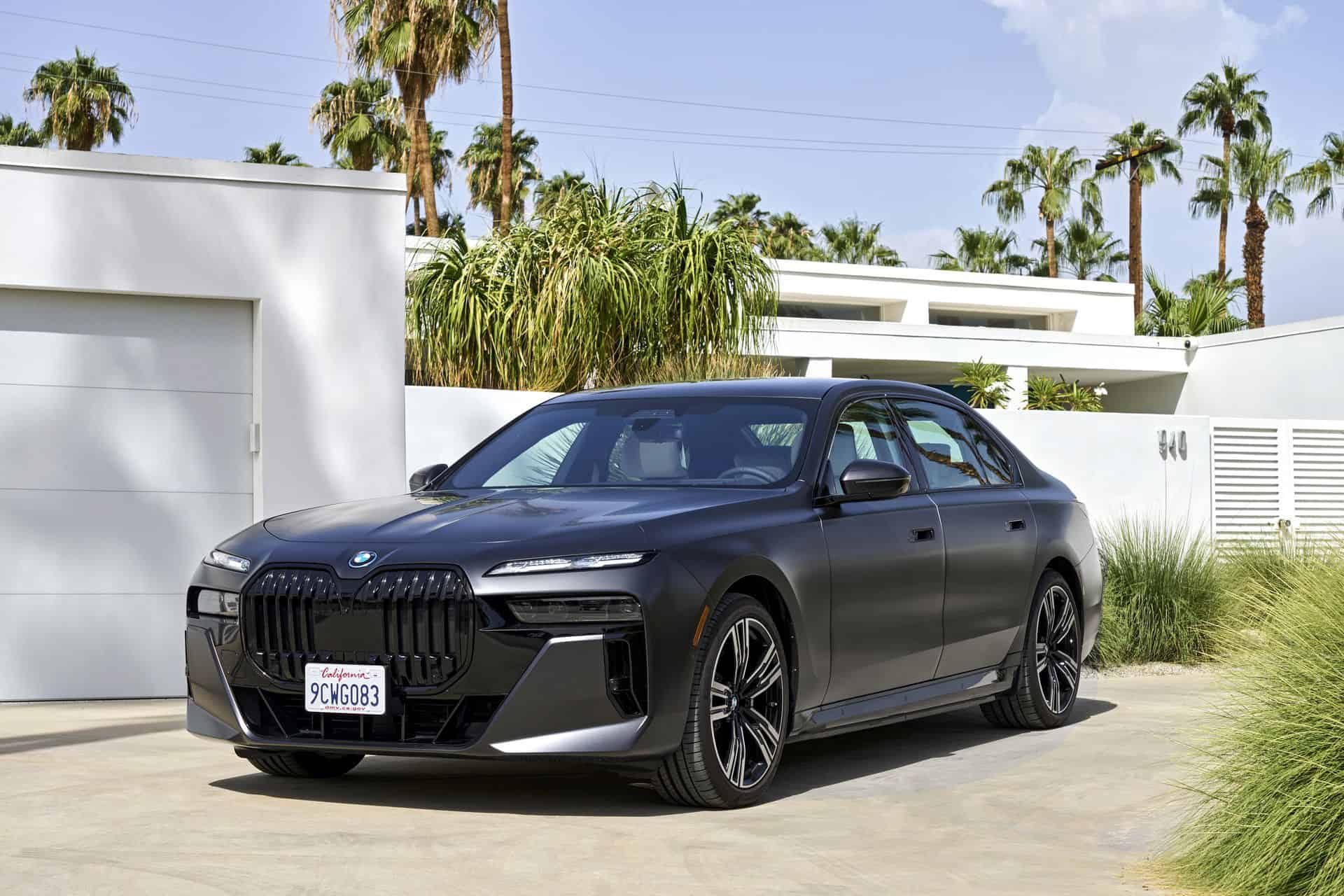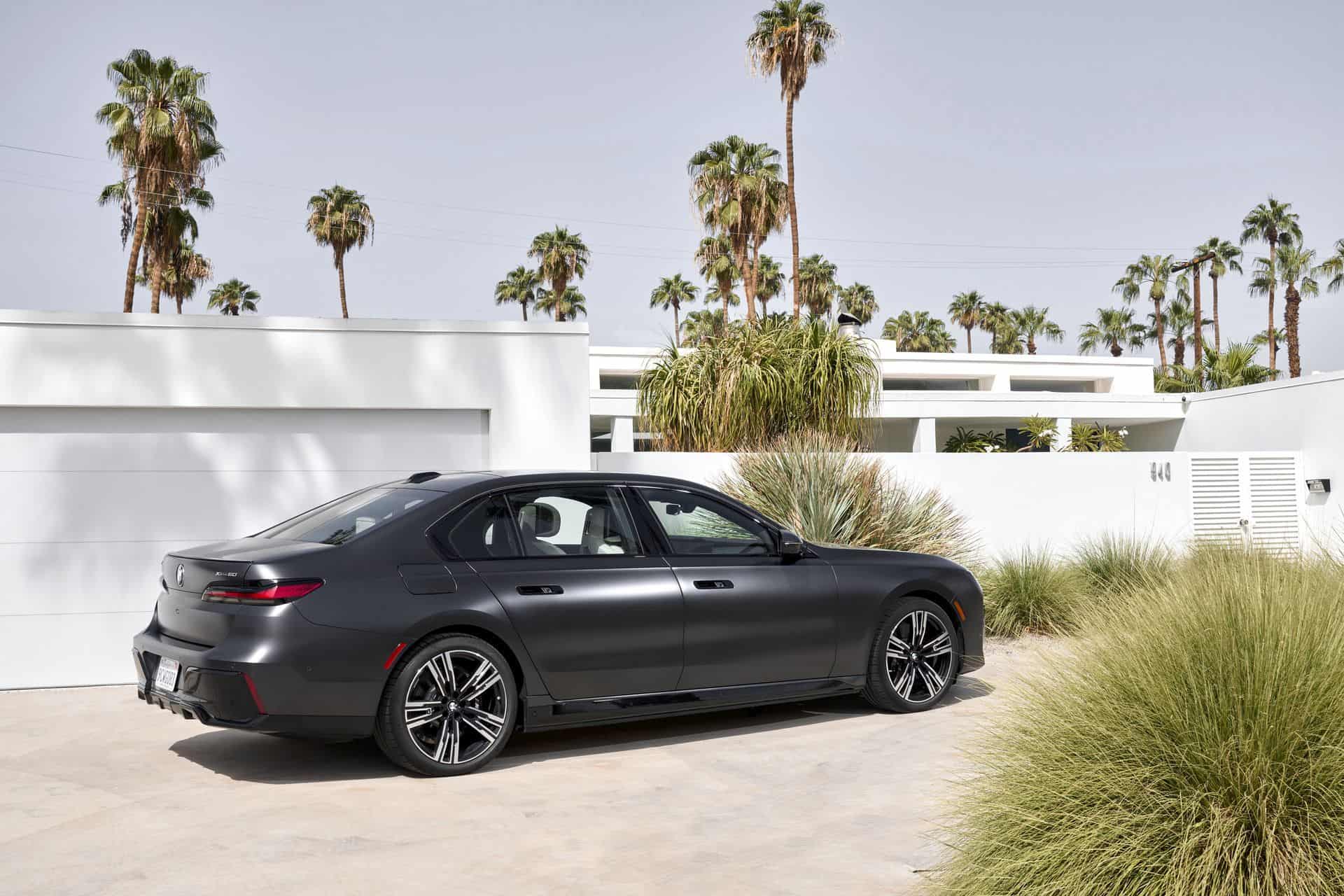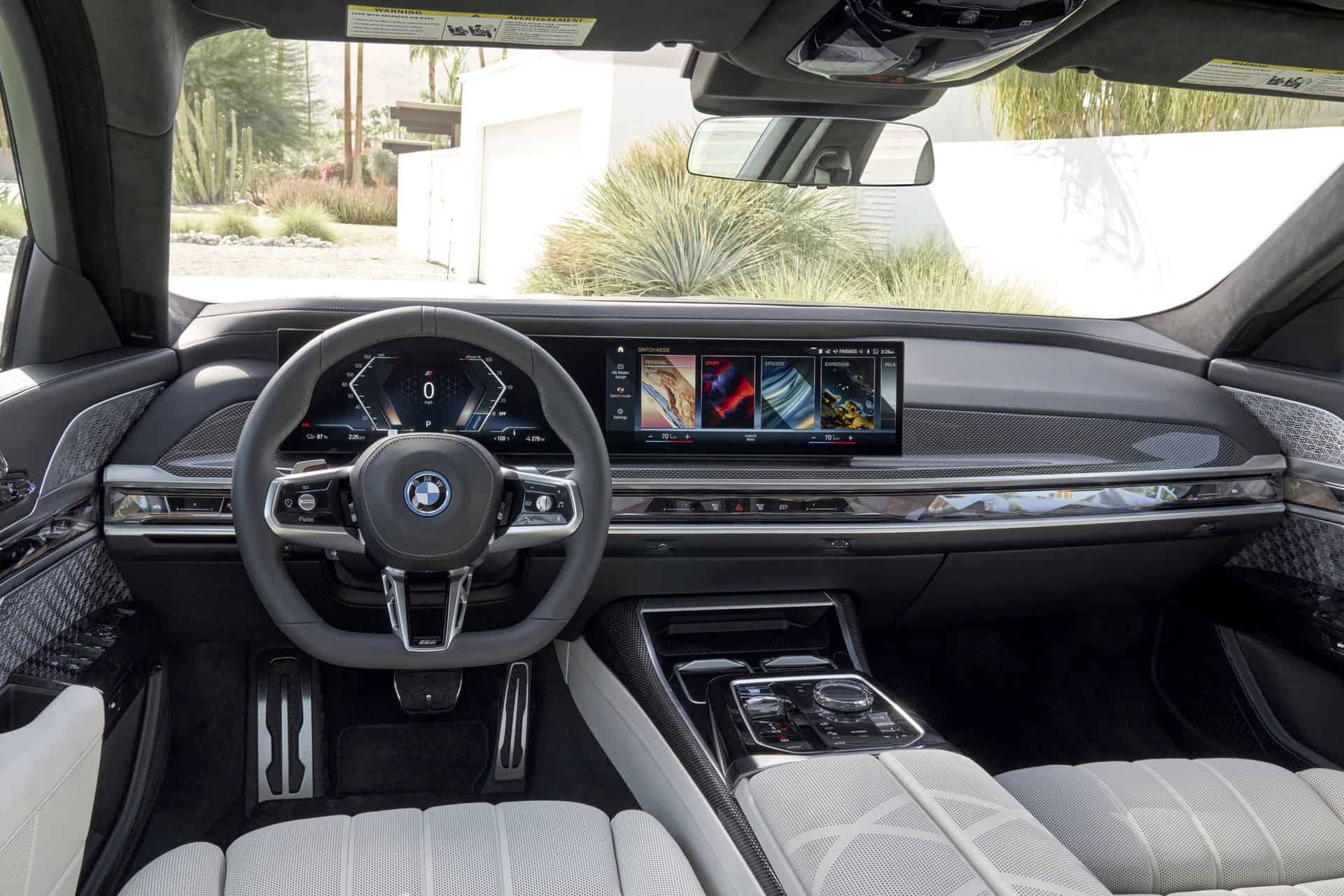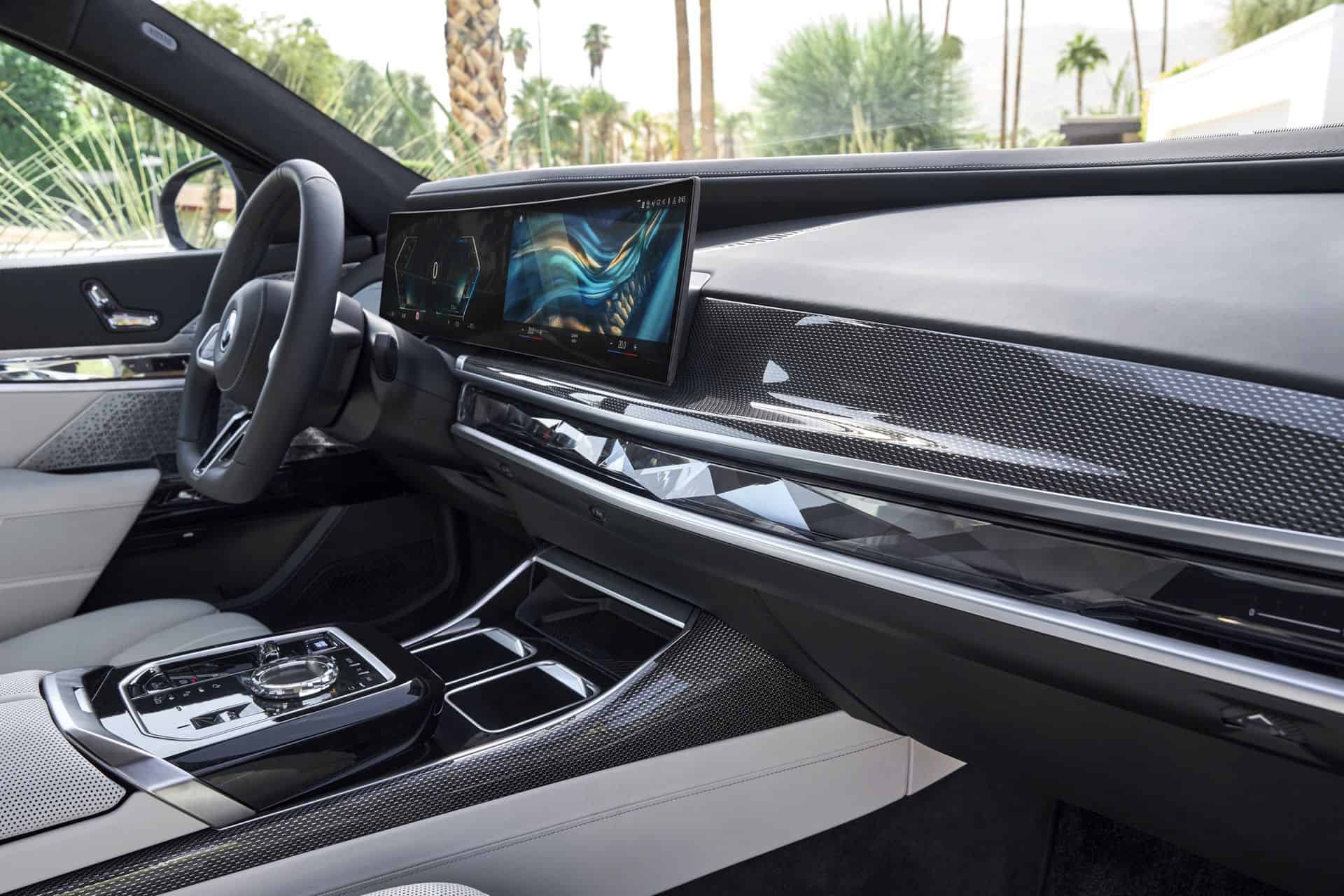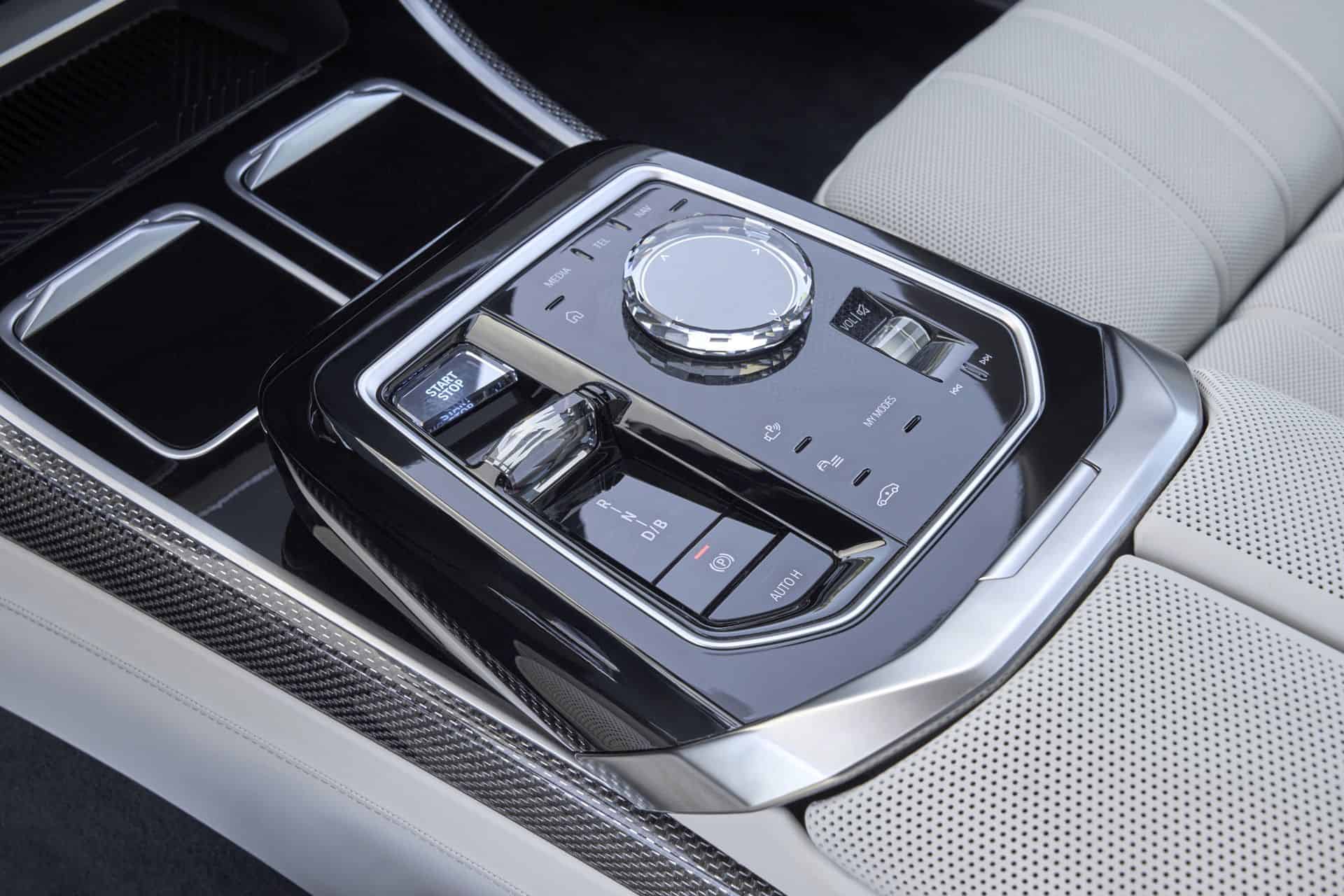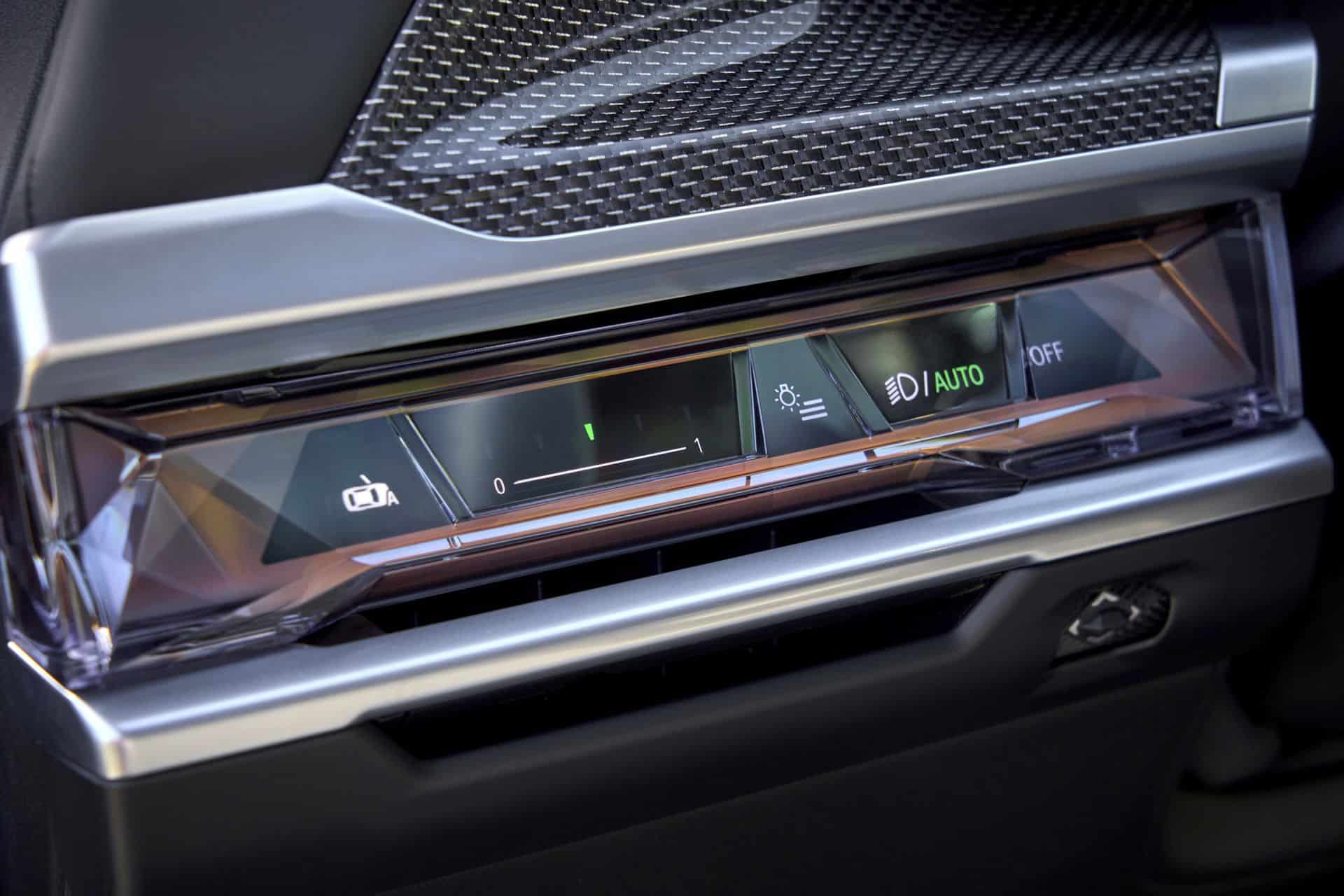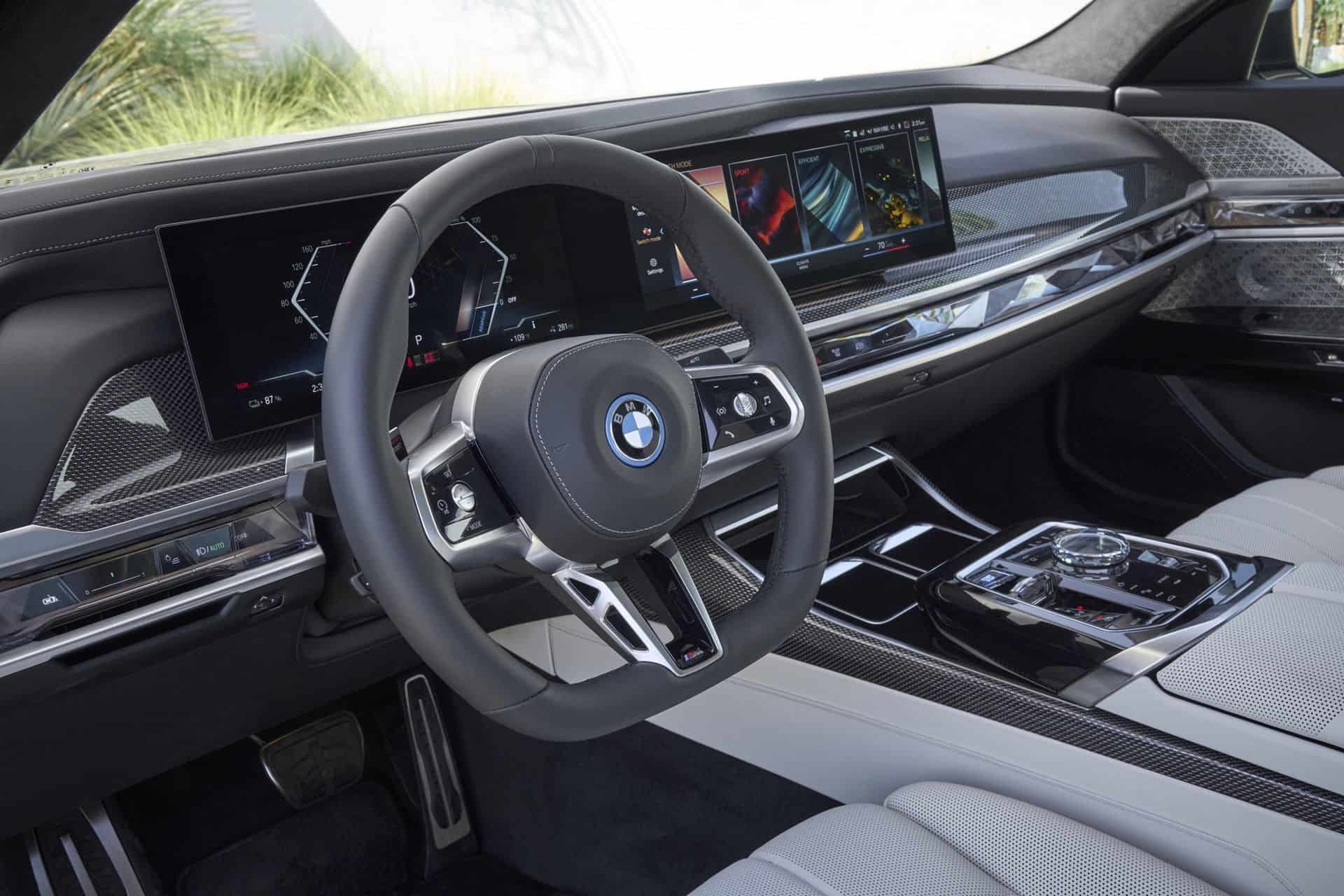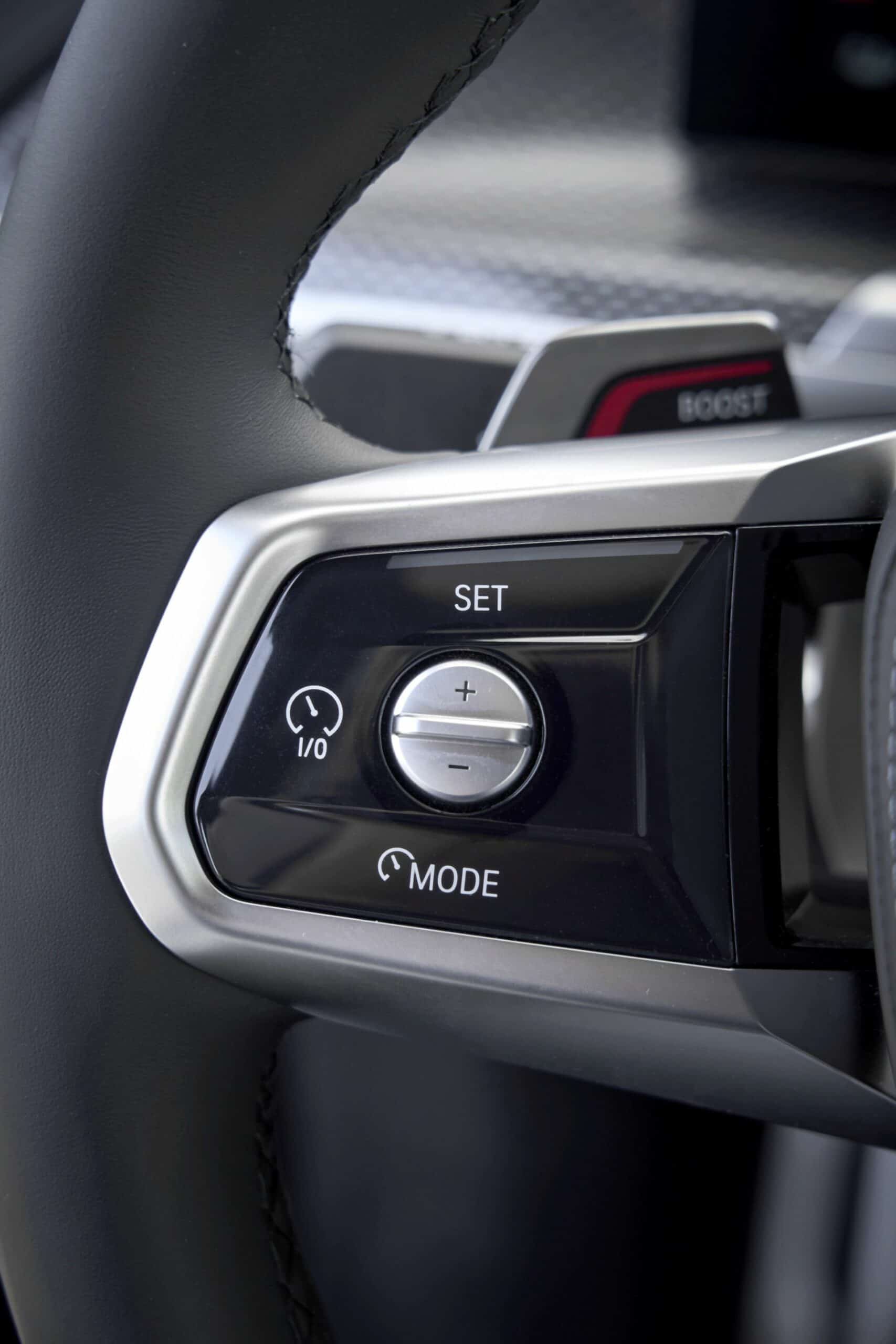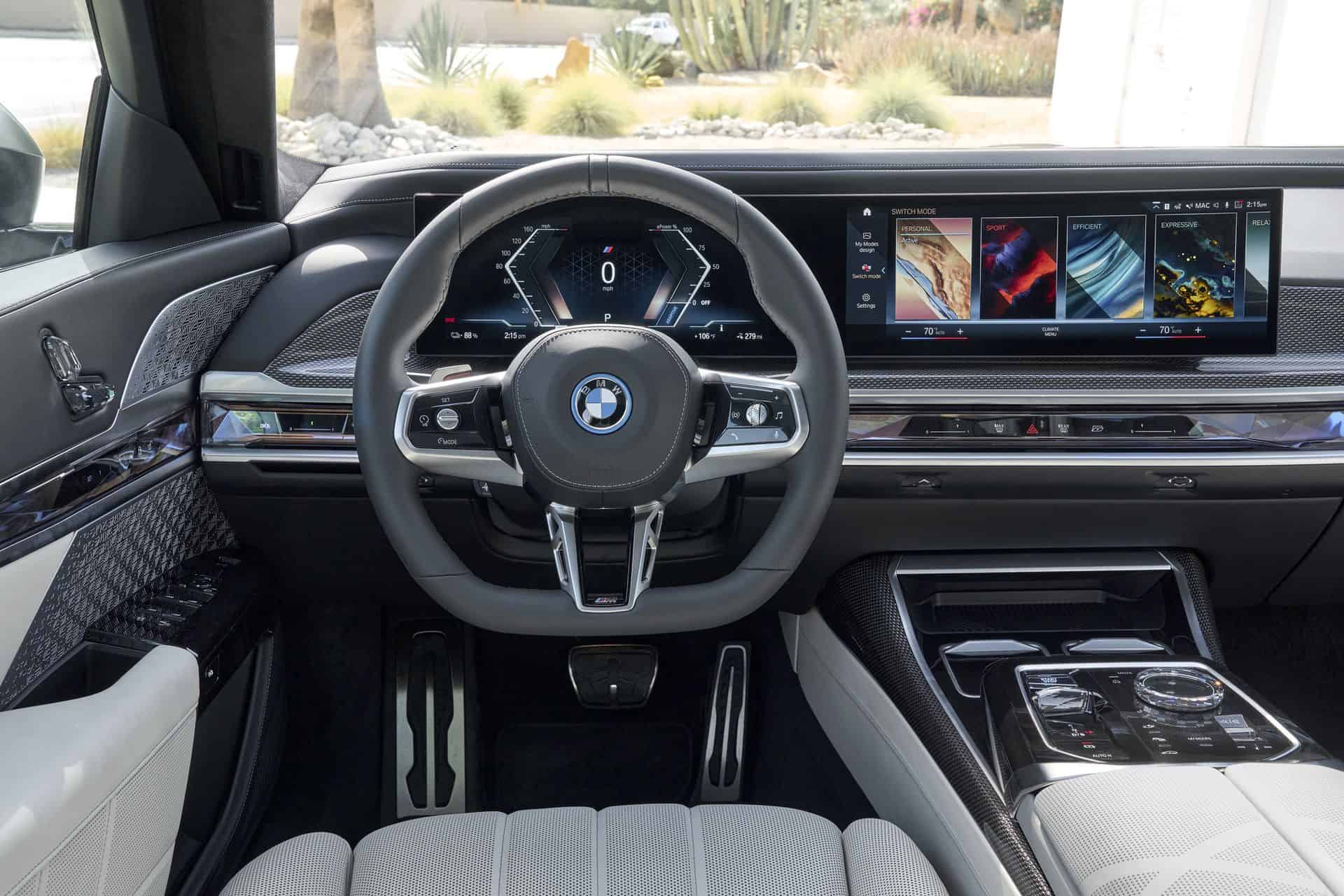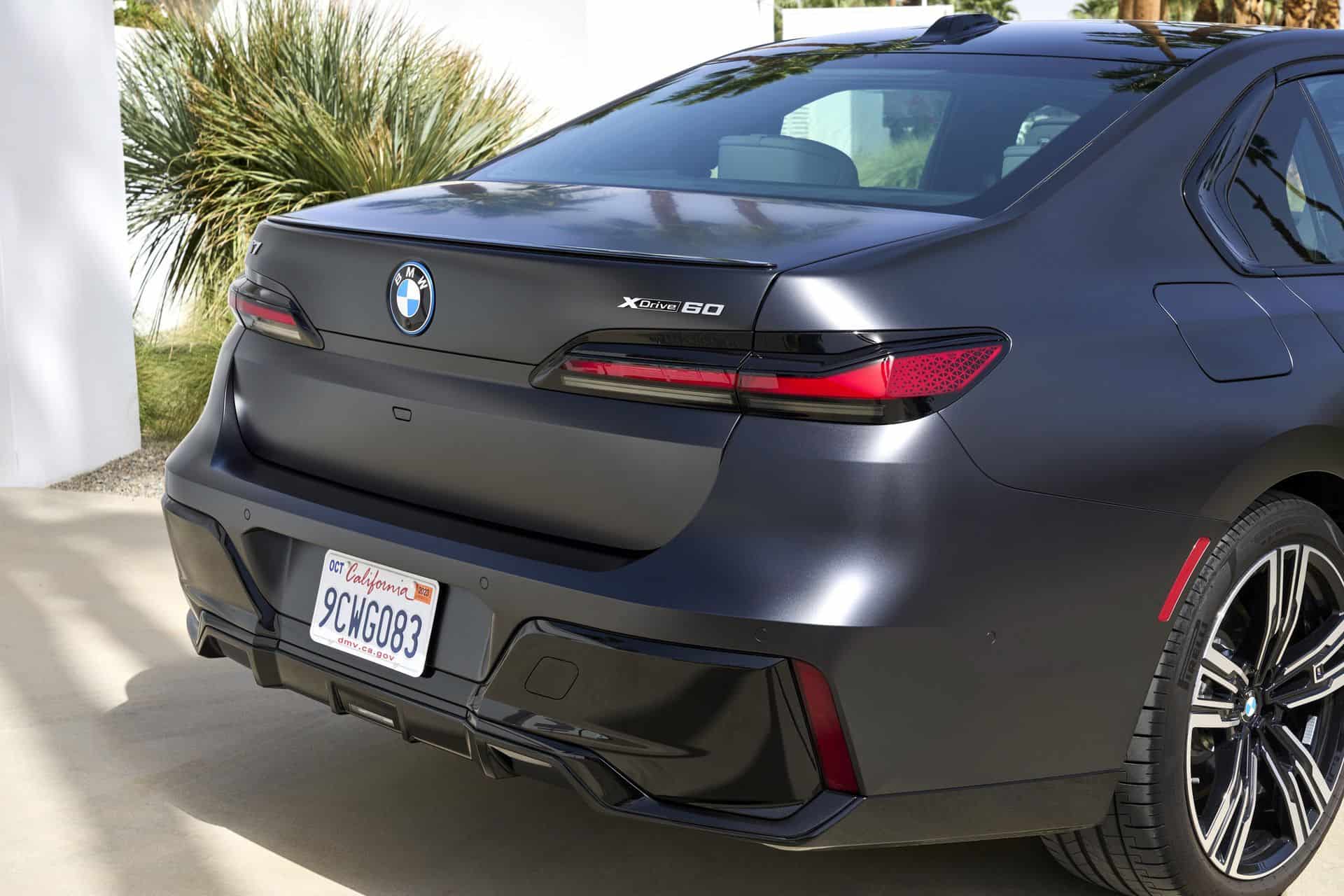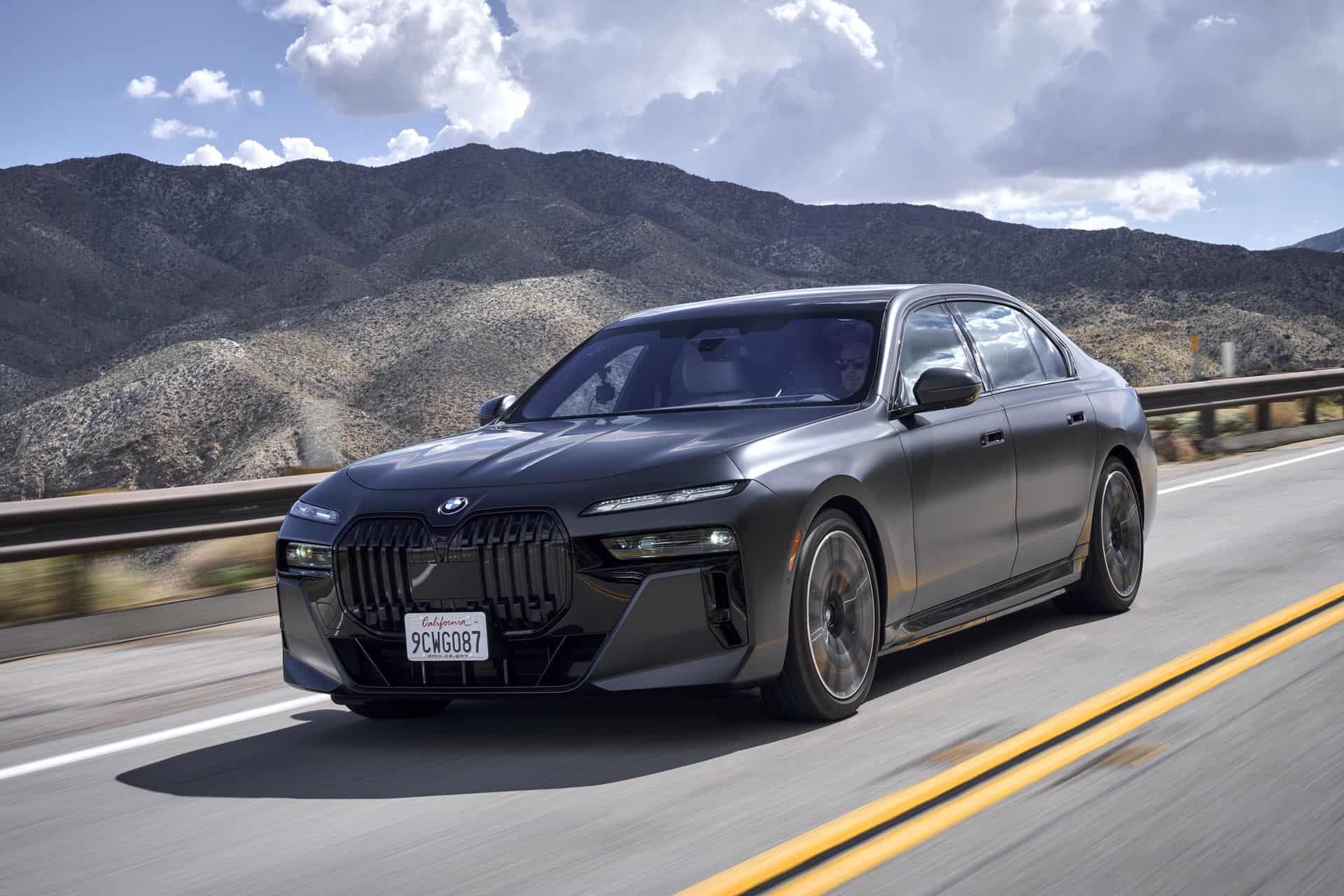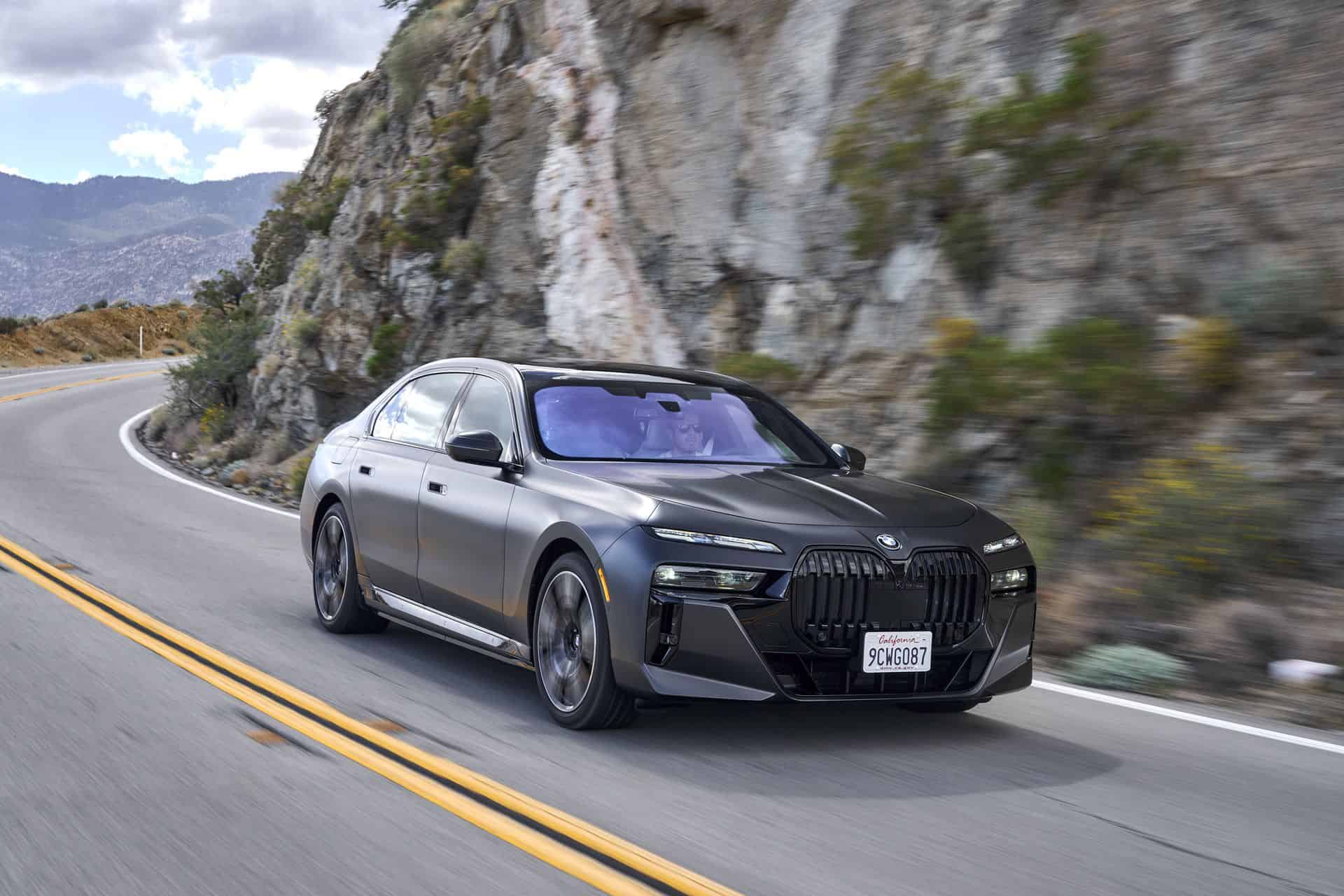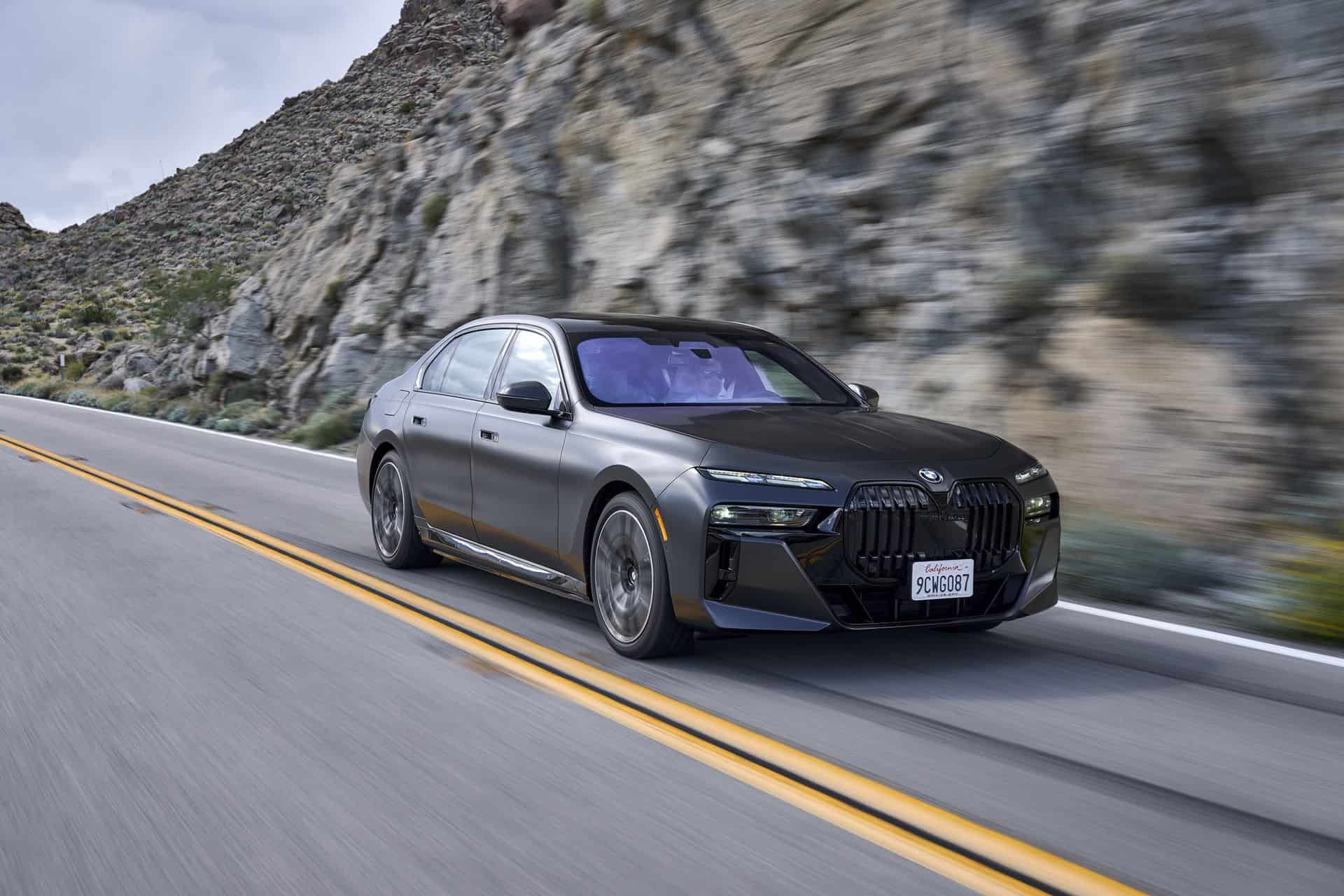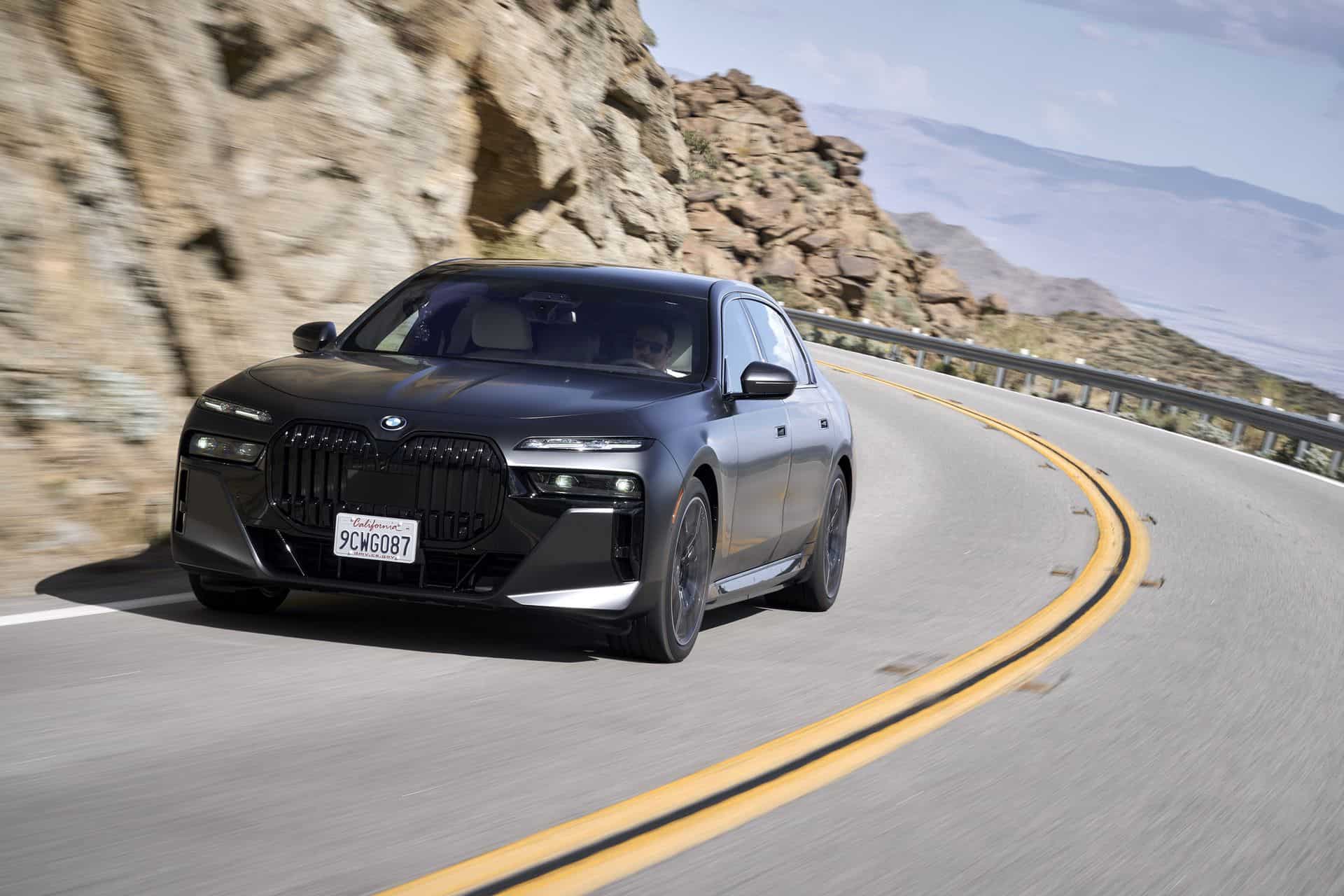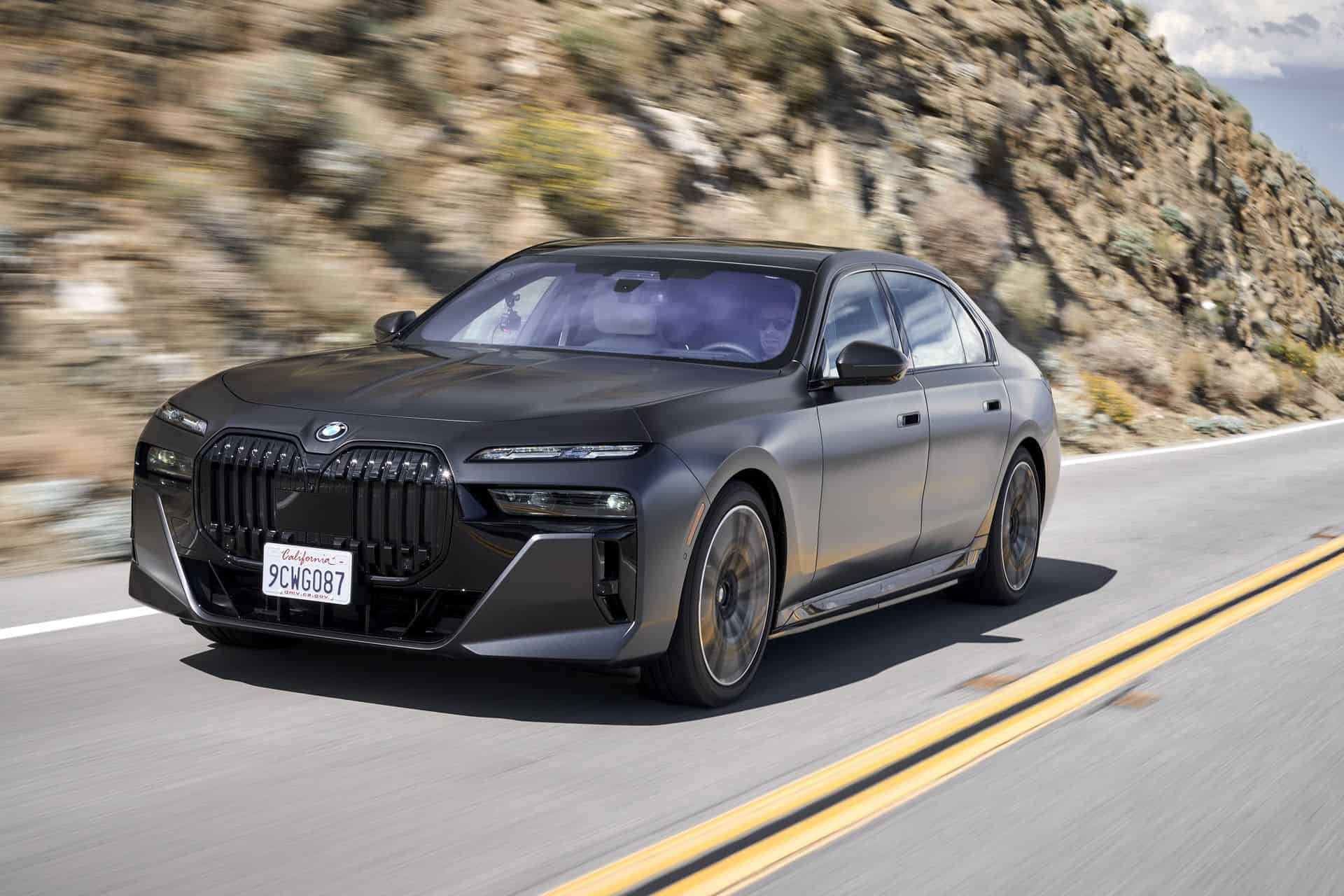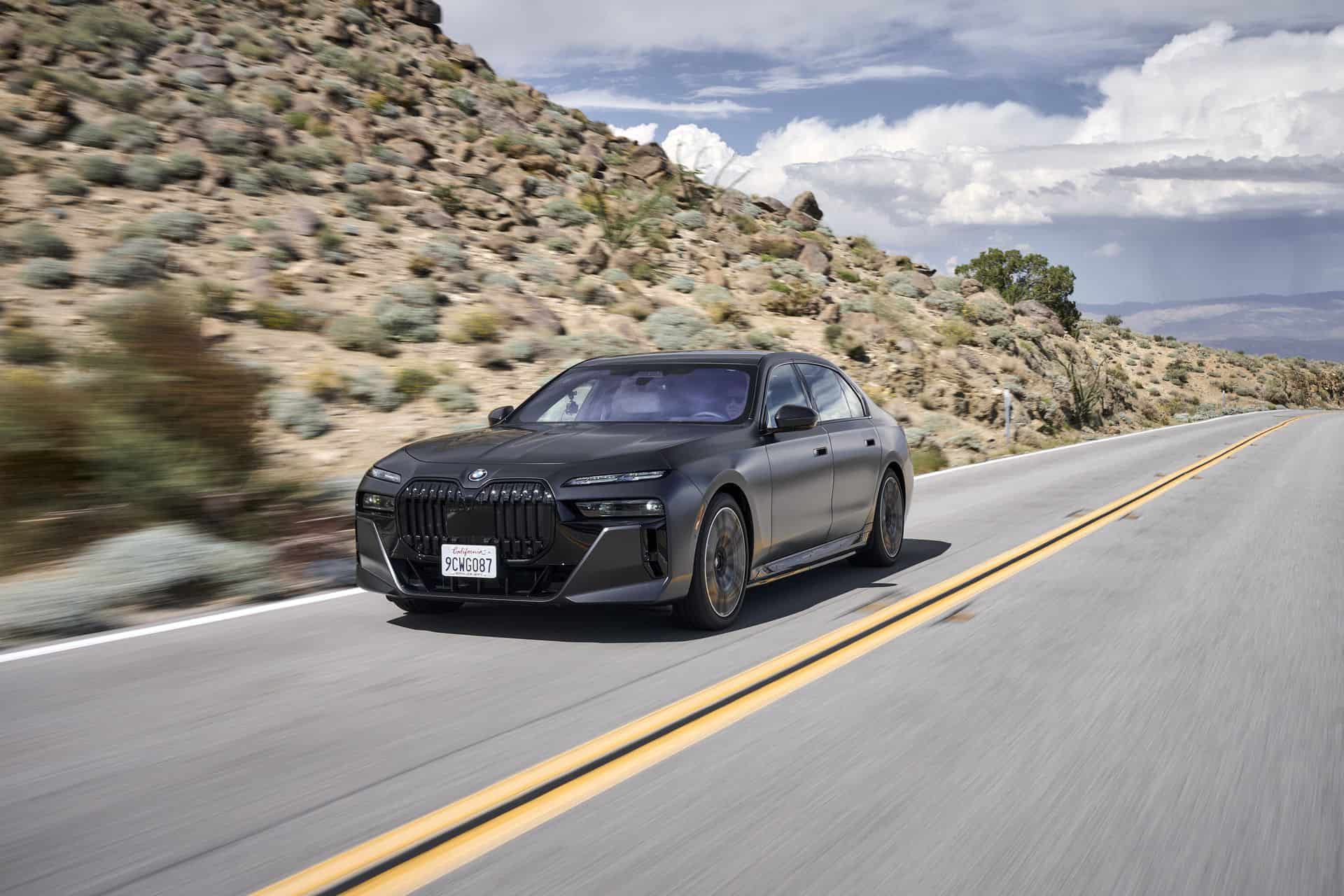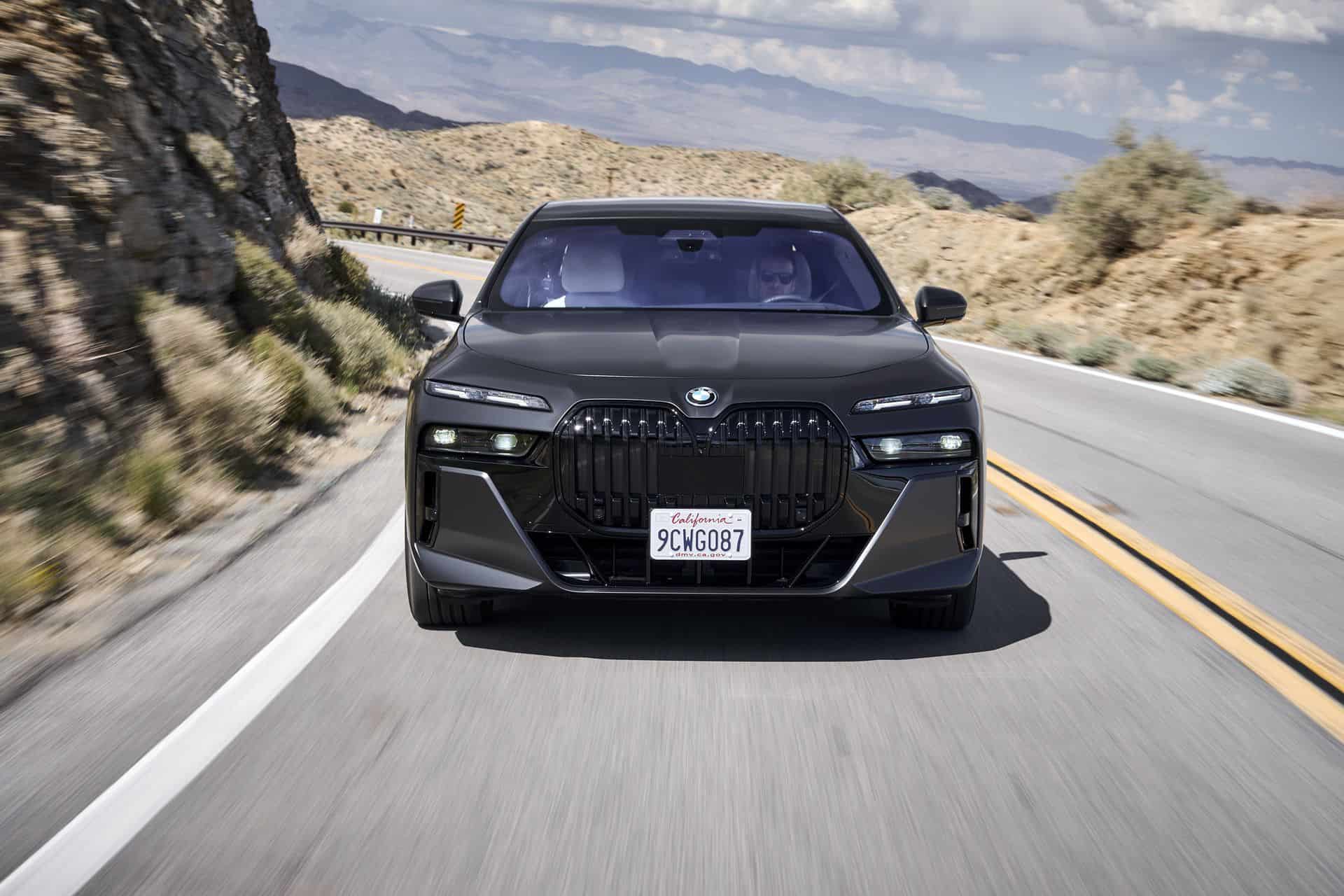It was six months ago when I landed behind the wheel of a BMW i7 prototype. The test car was on its final testing legs before being unleashed into the world. Since, I’ve spent countless times with the new 7 Series, from inside out. But last month, a new opportunity to test the i7 came up. The location? The beautiful and sunny Palm Springs where BMW hosted the International Media Launch of the 760i, i7 and X7 Facelift.
Of course, I didn’t expect a lot of technical changes from the i7 prototype, but at the same time, I was quite excited to test the electric limousine through some of the great driving roads surrounding Palms Springs. And while the i7 might not be a track car, it’s still quite fun to see what it can do under heavy loads. Of course, there were plenty of flat highways where I could also experience some of the latest driving assistance features.
Heaviest 7 Series
The fully electric sedan, in European specification, tips the scales at 2,640 kilograms (5,820 pounds) without a driver. But it makes up for it with a dual motor setup, made using no rare earth materials at all. Maximum power output is 536 horsepower and 549 lb-ft of torque, which gives it the same horsepower as the BMW 760i. According to BMW, 0-60 mph happens in 4.5 seconds and the i7 has a top speed of 149 mph. Now if you need more power, BMW has you covered with an eBoost Mode which provides some additional horsepower in the Sport Mode.
Those two electric motors, which provide torque-vectoring all-wheel drive, get their energy from a 101.7 kWh (usable) battery pack, which is said to be capable of up to 300 miles of range. That range figure is a BMW-estimated figure, based on EPA testing procedures. Unfortunately, the route was not setup for maximum efficiency, but rather for most fun. So I’ll have to wait for a week-long test to determine the real life electric range.
But here is what I can report based on my 3.5 hours trip which included a combination of backroads driving and highway cruising. The efficiency, as rated by the onboard computer, was 2.0 mi/kWh. In comparison, the BMW i4 M50 – a much smaller car, but equally powerful – is rated at 3 – 3.5 mi/kWh. Of course, in a normal driving scenario, we expect the efficiency to be a lot better.
Lots of Fun On Mountain Roads
Despite being the heaviest 7 Series, the 2023 BMW i7 is certainly the most fun of them. The combination of the powerful electric motors with the plethora of chassis and suspension improvements, makes the i7 a very compelling product. The large EV is easy to maneuver and effortless to drive, regardless if you end up on backroads or through city centers. The standard two-axle air suspension has been dialed in for the electric drivetrain, and of course, for the higher weight.
Furthermore, the suspension works together with electronically controlled shocks and adjustable suspension height settings. The suspension automatically adjusts the body height with a lower ride in the Sport Mode. Of course, damping is continuously adjusted, enabling the new i7 to stabilize and smoothen out all irregularities in the road surface. And there were plenty of uneven surfaces on the mountain backroads. The i7 floats over them, at both high and low speeds, providing a very plush driving experience.
Like all the new BMW 7 Series models, the flagship EV limousine gets a new steering rack. The improved steering feedback comes from a gear with a standard variable ratio steering rack paired with the Integral Active Steering. As seen in other BMWs, the latter improves the handling agility of the i7, at any speed, as well as maneuvering and parking in tight spaces. Additional, under heavy loads, the i7 has a higher level of stability, therefore increasing the safety at high speeds.
Thanks to the four-wheel steering, the rear wheels of the BMW i7 can turn opposite to the front wheels increasing agility in corners. At higher traveling speeds, the rear wheels also turn with the front wheels to increase stability. BMW says that the rear-wheel angle can rise to 3.5 degrees.
Plenty Of Chassis Improvements
A proper high-power electric car should always come with a near-actuator wheel slip feature. BMW calls it ARB, allowing fully variable power transmission between the front and rear wheels. And just like with all rear-wheel drive-based BMWs, the i7 has a RWD bias in normal driving scenarios. Of course, pushing the cars into corners will deliver additional traction at the front-wheels. My i7 also had the optional Executive Drive Pro package which includes active roll stabilization keeping the body roll in check.
So all these nannies work together to really make the i7 feel lighter than it actually is. Even under heavy cornering, the i7 feels light on its feet and you will find yourself traveling at high speeds in no time. The nose is also lighter than in the BMW 760i, for example. The lack of a heavy V8 at the front can be felt immediately and the i7’s steering feels a bit more artificial, and certainly softer. Of course, switching to the Sport Mode fixes some of those issues. Yet in all fairness, it’s only us journalists that really care about steering feedback and precision in a 7 Series.
7 My Modes
Speaking of the driving modes, BMW comes with no less than seven of them: Personal, Sport, Efficient, Expressive, Relax, Theater and Digital Art. Some of them are mostly related to comfort features, but the Sport and Efficient are the obvious deltas. I certainly prefer the Sport Mode, not only because of its most aggressive driving settings, but also because of the cool sounds from the Iconic Sounds pack.
Level 3 Ready, Level 2+ Available Now
The 2023 BMW i7 comes with an extensive system of sensors and radars. A camera for object recognition is embedded in the top section of the windshield, along with a front-view camera placed in the bumper. There are two side mirror cameras and a rear-view one. Two near-range radars sit at the front of the car, along with a long-range radar. Another couple short range radars are placed at the rear of the 7 Series. Furthermore, BMW has included 12 ultrasonic sensors, split across the front and rear of the car.
All this new tech works together in delivering the most advanced driver assistance system in any BMW. Level 2+ functions are available in some countries – the regulation matrix is quite complex so we will focus mostly on the US and German markets. The Highway Assistant and Highway Exit Assist are available in the United States and Canada. The latter allows the car to change up to six lanes by itself before existing a highway. As you approach your exit, only you have to do is tap the turn signal to confirm the exit. The car will then perform the exit maneuver on its own.
The Highway Assistant is certainly the more exciting one. The Level 2+ feature works at speeds up to 85 mph (137 km/h). Now the driver can enjoy the hands-free driving experience for prolonged times since a push on the drive or brake pedal won’t immediately disable the Level 2+ features. In fact, it reverses to Level 2 functions. I had a chance to test the feature on Interstate 10 around Palm Springs and it works extremely well.
As soon as certain conditions are met – lane detection, highway driving, eye camera detection – the car allows you to switch to the Driver Assistant Pro feature (Level 2+ in other words). It’s certainly a good step towards an autonomous future and I’m certainly intrigued about future Level 3 functions.
German customers also get the Urban Cruise Control with traffic light recognition. The usual Active Lane Guiding, Emergency Assistant, Collision Warning and Intelligent Speed Assistant are also included. BMW labels these new driver assistance systems as Level 2+, but the new 7 Series and i7 feature the sensor setup for a Level 3 implementation.
The parking systems were also enhanced in the new BMW i7. There is now a Remote Maneuver Assistant, Parking Assistant Professional and Reversing Assistant Professional. The latter can record the path up to 100 meters.
Regen Braking
BMW’s engineers have slightly updated the regenerative braking function from the all-electric iX and i4 models for use in the i7. But the changes are only in the software stack. The driver can select the regenerative braking level and can use the highest setting for one-pedal driving.
Adaptive recuperation is the default setting in driving position D. Alternatively, the driver can choose a high, medium, or low brake energy regeneration setting. The highest recuperation setting is automatically activated in driving position B, which also produces the characteristic one-pedal feeling. But you need to be careful with acceleration and braking in a heavy car like the i7 because you can experience motion sickness on an extended car rides, or under intensive driving.
Quietest Cabin in a BMW
In my opinion, and not based on any scientific test, the BMW i7 presents the quietest cabin I’ve ever experienced in a BMW. At a first glance, it seems to be even quieter inside than in the BMW iX. Despite rolling on large 21 inch wheels, there was nearly no outside noise trickling in and the tire noise was kept on the outside as well. But if the sound levels are not low enough for you, BMW has you covered with a 21-inch Air Performance Wheels. These deliver lower air drag and can be fitted with noise-reduced tires, which have a layer of foam on their inner surface.
Favorite Features: The Executive Lounge and Theater Screen
The new generation of 7 Series models are looking past the Ultimate Driving Machine slogan. While they can still deliver a thrilling driving experience, they also offer more technology and comfort for the driver and passengers than ever before. Thanks to a single long-wheelbase configuration, the rear space is massive. So having the Executive Lounge option makes more sense now. I briefly tested the new lounge configuration and I can see why anyone would want to have this during longer drives.
And if you get the lounge seating, then might as well go for the 31 inch 8K Theater Screen. The massive screen provides an immersive experience for rear-seating passengers who can stream their favorite shows, while also having video calls with friends and family. The Theater Screen might seem like a gimmick at first, but after you experience it, it moves up the options list.
The Best 7 Series Ever Made
There are so many more features in the BMW i7 that deserve their own articles, but will save those for the extended test drive. Yet, everything I tested in the electric limousine pointed to the same conclusion: The electric BMW i7 is the best 7 Series ever made. Sure, its exterior design is controversial, and maybe a bit too bold for my taste, but that shouldn’t take away from its other qualities. And as you’ve read above, there are plenty of them.
Not only this is a futuristic electric product, but the i7 is also the most luxurious BMW ever made, with the highest degree of technology and certainly with the latest self-driving features from Munich. It’s difficult for me to find any flaws in the i7, especially when tested on its own. Of course, if I were to put the BMW i7 head-to-head with the Mercedes EQS, then some flaws might surface.
But as an electric product in the BMW lineup, the BMW i7 hits all the right points. It is powerful (even though not the most powerful), it has a decent electric range, good charging capabilities, a beautifully-crafted cabin and, despite being quite heavy, it’s a lot of fun to drive. If I was a 7 Series customer, then the BMW i7 will be my choice, even before the great sounding V8-powered 760i.
In the United States, the BMW i7 xDrive60 starts at $119,300 and it’s available today.
BMW i7
Good
- Power
- High-quality Interior
- Electric Range
Bad
- Lack of physical buttons
- Heavy
- Large Kidney Grille


